Orion Wide Field
The constellation Orion. Including M42, the Running Man, Flame and Horsehead Nebulae, M78, Barnard’s Loop and the Rosette at the lower left. Taken with my Canon 60DA, 12 x 5 min, 50mm lens f/4.0 on an Astrotrac. Click for hi-res.
My Harrowing Flight Home
[Note: I realize that people have crappy experiences with airlines all the time, but I just wanted to share mine as a bit of catharsis.]
I’ve had some pretty terrible Christmas flight experiences before. Usually this involves flying through Chicago, which is why avoiding it is one of the four criterion I use when selecting a flight the other three being: 1. Doesn’t leave at the butt-crack of dawn, 2. Doesn’t take an unreasonable amount of time to get to my destination, 3. Doesn’t require me to take out a loan to pay for. (In all fairness, not flying through Chicago usually fits into #2).
I’m always a procrastinator when it comes to booking my Christmas vacation flight, which means finding an acceptable flight meeting those goals is close to impossible. After shopping on Priceline for quite some time, altering departure and arrival dates, I found a flight that would meet MOST of them. The only part that breaks it is that my return flight goes through Chicago. My flight on American would leave out of Baltimore at 4:10 PM, cost about $550 (the cheapest I could find into Springfield’s tiny airport), went through Dallas AND had me in First Class for the BWI -> DFW leg. “Score!” I thought, not realizing what I was getting myself into.
For this trip, I’m hoping to take some more pretty pictures that are the usual fare of this blog. The week before, I bought an Astrotrac mount and a Canon 60DA to assist with this. As you can imagine, my bags were pretty jam packed with stuff. My checked luggage is a tall bag and besides regular stuff like clothes, was carrying a tripod and a ton of other things like counterweights and what-not. My two carry-on bags included the 60DA, a T2i, three lenses, the Astrotrac itself, a laptop and XBox, my small telescope and a finderscope. Remarkably, TSA said nothing about them. Because I was First Class out of Baltimore, they even didn’t make me pay extra or shuffle things around when my checked bag was a few pounds over 50.
I get to the gate and am waiting for them to start boarding. It’s one of those situations where another plane has just arrived at the gate right when you’re supposed to start boarding, so offloading took an eternity, and they didn’t start boarding First Class until about 10 minutes before the scheduled departure time. I had a one-hour layover in Dallas, so I was sweating it, but the pilot appeared to have requested a faster flight plan and it was looking good.
We taxi out toward the runway, and then wait about five minutes before the pilot comes on and says, “Uhhhhh, folks” (they always start with that), “we can’t get our radio to work, so we’re going to have to go back to the gate and see what’s up”. After crawling back to the gate, the mechanics farted around for 20 minutes or so when the pilot comes back on and says, “Uhhhhh, folks, they can’t get the radio working, so this aircraft is being decommissioned.” They de-board us and tell us that they’ll work on getting a new plane, but that it will probably be after 9 PM.

They de-board us and I call up American to see what my options are for getting home as I will definitely miss my connecting flight. I’m told that the next available flight to Springfield from Dallas is at 7:45 PM the next night. I decide to try to fly to Tulsa instead, hoping to just rent a car (more on this later).
The airline was nice enough to give us some food vouchers, but unfortunately, the only restaurant I wanted to eat at in that terminal was the Rams Head. I hesitate to say “unfortunately” because I usually love their food, but the service here was downright atrocious. I stood at the podium for about five minutes and finally got someone to come over to seat me by waving my arms. He joked that it looked like I was dancing. I ordered my food from one guy, another guy (who I think was supposed to be my waiter) brought it out and then proceeded to ignore me except when I asked the first guy for a refill and when I asked for the check at the end. I usually tip well, but this is one of the few times I undertipped.
Anyway, they were able to courier a new part for the plane from Washington DC and fix our original plane, so it ended up leaving around 8 PM. One nice thing was that the guy who was originally next to me in First Class was no longer there, so I had a crap-ton of room. They also pamper you in first class (the good kind of pampering). In-flight, I paid way too much for 90 minutes of slow Wi-Fi so I could book my hotel. I know the airline would’ve done it and probably paid for it, but I was worried that I might not get a room with the entire plane needing a room.
The plane lands and I’m one of the first to the gate counter to see if any of my options have gotten better. It turned out that there was a Springfield flight at 9:15 the next morning and they could get me a confirmed seat on it! “Count me in”, I said. When I got to the baggage claim, it turns out it would’ve probably taken forever to get my bag for the night, so I had to go rustic for the hotel. I did get toiletries from them, but my clothes might smell a little funny today.
Being from the East Coast and typically having to wake up early meant I was awake around 5:30 AM. I hobbled around for a bit then hopped into the shower. As I got out, I checked the flight status on my phone. CANCELLED!

I head to the airport and get on the phone for American on the way. They book me on a 10 AM flight into Tulsa. I was planning to rent a car again. When I got to the airport, I went to the ticket counter and got my new boarding pass and tried to get my luggage on the same plane. It took forever for them to get it input into the system, but he claimed to get it through to them.
While waiting for the plane to leave, I call Enterprise to try to rent a car. They tell me I can do a one-way rental, but it will require a credit card. I only have debit cards, though (there’s an SNL skit about not buying stuff you can’t afford), so they told me I had no real options. I called my parents in a panic and convinced them to drive to Tulsa to pick me up (about three hours). They had just left when, in the airport, the parents of someone I went to high school and know from my parent’s church saw me and said they would give me a ride from Tulsa. They were in the same boat as me, having been on the cancelled flight. I’m still thanking the big man upstairs for that one.
Anyway, we land in Tulsa, aaaaaaaaaaandd, wait for it, neither of our bags were there.

I speak to the lady at the AA baggage center who is incredibly unhelpful and suggests I call their baggage hotline. I first tried to enter my record locator on their website which refused to work, so I called the number. First, I was told it was a 20 minute wait. 30 minutes go by and the call gets DROPPED! I call a second time and this time choose the option to leave a callback number and have them call me. 20 minutes go by, I get a call and am promptly sent to the original line where I’m told it’s another 10 minute wait, then I’m dropped again. I call their regular customer service number, wait 10 minutes and tell them how mad I am. They proceed to apologize profusely…and send me back to the baggage number, which says there’s a 15-20 minute wait. 30 minutes go by and I’m dropped again! I wait a little while and call back and give them my number again. This time, I FINALLY speak to a human, who tells me my bag was just scanned into Springfield. I’d point out that by this time, we were almost to the Springfield airport, so I spend most of the 3 hour drive there trying to get through to a human.
There’s no way the flight back could be anywhere near this bad…knock on wood.
First Amendment Activities
Change of pace from the usual astronomy stuff. I saw the following sign while walking around DC. This is from the Oval park where the National Christmas Tree is usually set up.
So I decided to take advantage of all five of the basic freedoms found therein. First, freedom of religion:
Second, freedom of speech:
Third, freedom of the press. (I didn’t have a good marker, but I did employ some Photoshoppery. It says: Furlough Times, Breaking News, Congress Sucks):
Fourth, freedom of assembly. This is the one that really gets me. If we’re allowed to participate in first amendment activities, why in the name of all that’s holy, is this closed?
Fifth, freedom of petition. (It says “I Am Holding a Sign.”
I saw no signs saying we were allowed to participate in activities related to any other amendment.
Arizona Trip Part 4, Antelope Canyon
After our day at the Grand Canyon, we made our way to Page, AZ to see Antelope Canyon, one of the best slot canyons in the country. Interestingly enough, they don’t allow people in if it’s been raining anywhere nearby, because this is where the rainwater empties. Some of the better pictures below (click for hi-res).
Arizona Trip Part 2, The Grand Canyon
We arrived at the Grand Canyon shortly after sunset. It was pretty cloudy AND snowing, so it wouldn’t have made that much of a difference. The first thing you notice upon coming to the canyon is the sheer size. I’ve been there several times before, but it’s been quite a while. (As before, click any image to view it full-resolution).
After dinner, we decided to return to see if any “sucker holes” existed so I could get some photos of the stars. We got lucky. Below is a 10m shot taken at ISO 800. You can see star trails around Polaris. I’d point out it wasn’t completely clear the whole time.
I also did a 15″ shot of Auriga, which was just poking out of the clouds. The stars really were dazzling here.
Also visible here is Jupiter, just above the clouds.
The next morning, we woke up at 5 AM to watch the sunrise. It was pretty cloudy, but there were some holes.
We spent the rest of the day at various spots throughout the Canyon’s rim. We also did a plane flight over the canyon through Grand Canyon airlines. Below are some of the best shots:
I did take a lot more images. I will soon post a link to some lower-res shots of all the rest.
Arizona Trip Part 1, Picacho Peak
I just completed a week-long vacation in Arizona. The main purpose was to get another night at Kitt Peak National Observatory for their Advanced Observing Program. I’ll blog thoroughly about that later, but I wanted to share some pictures and thoughts from the other stuff I did. You may click any picture for a higher-res version. (Warning: Some of the hi-res files are huge).
The last time I was in Arizona, I was driving from Phoenix to Tucson, admiring the view, and trying to find a place to stop off for some pictures. About halfway, I saw an awesome-looking mountain on the right side of the road, and decided to pull over. It’s called Picacho Peak and is absolutely gorgeous.
Picacho Peak is on the left. Not seen here is a small peak further to the left. You can’t hike to the top of it, but you can hike around it and get nice views of the desert. It’s only about a mile. The peak itself is at 3,374 feet and is either a 2- or 3-mile hike depending on which trail you take. We decided on the Hunter Trail, which was about 2 miles. The other trail (Sunset Vista) is longer, but less strenuous. It follows a gradual slope up the right side of the mountain.
The first part of the trail involves hiking up to the mountain face. This is quite challenging as it’s basically a “path of steepest ascent” climb.
From here, you hike around the rock face to the saddle point between the two larger peaks.
The next part was very challenging. You climb down about 300 feet around the back side of the mountain using cables. I decided to turn back once I got to the bottom of this drop, mainly out of exhaustion. I don’t do a lot of hikes, so I wasn’t incredibly well-prepared for this one. I wish I had done it before going down 300 feet though, cause going back up was very strenuous. My friend made it to the summit. Here are some of his pics:
While the hike back down was easier, once I got to the saddle, I was still very tired. My legs were very wobbly! Wish I could’ve gotten to the top. We were needing to leave to head up to Kitt Peak and I didn’t want to slow my friend down. He figured he could make it to the top pretty quickly, and he did.
The next post will be about the Grand Canyon.
Messier Marathon Part 5 (On to Sunrise)
By this point, only one other person was left and he was packing up. Soon, I was all alone, waiting for the last few objects to rise.
M6 is an open cluster in Scorpius:
And M7 is another open cluster next to it. This was shot through trees.
M16, the Eagle Nebula follows. I didn’t get much of the nebula here, but I did get the cluster:
Then M17, the Swan Nebula:
And M18, an open cluster nearby:
M24 is a gigantic star cloud in Sagittarius. It’s not much to look at here, but it’s mainly just clumps of the Milky Way:
Then M25:
And M23:
The next three objects are close-by. M8, the Lagoon Nebula, M20, the Trifid Nebula and M21, an open cluster. The latter two are obvious. I barely caught part of M8 in this picture (lower right).
Then M28:
M22, an amazing globular cluster:
M69
and M70:
At this point the noise is getting very bad. M54 is next:
M55 should be next, but I was unable to capture this due to it being very low. M75 was the next one I got:
Then we hit the last two “easy-to-find” objects of the night. M15:
and M2:
Then comes M72, a glob in Aquarius. This is very hard to see visually. It’s right in the middle.
The last one I got was M73, an asterism of four stars in Aquarius (right in the middle).
And that was that. M30 is not really possible from this latitude, and especially not facing into the Baltimore skyglow.
I left around 6:30 and got to see a gorgeous thumbnail moonrise (no pics, sorry). As exhausting as this was, I was very pleased with the experience.
Messier Marathon Part 4 (Globular clusters and open clusters to sunrise)
First, while waiting for these objects to rise, I snapped the following shot of Saturn:
By this point of the evening, most of the people had packed it up. Only four of us remained by about 3 AM. At this point, we start hitting the globular clusters. First is M5:
I got the shot of M13 with my autoguider:
Then M92, another bright glob in Hercules:
M107 in Ophiuchus:
M12 in Ophiuchus:
M10 in Ophiuchus:
And M14 in Ophiuchus:
A quick break from the globs to get M57, the Ring Nebula:
And back to the globs with M56 in Lyra:
M9 in Ophiuchus:
M4 in Scorpius:
M80 in Scorpius:
Next two open clusters in Cygnus. M29, called the Stubby Dipper:
And M39:
M71 is another glob in Sagitta:
Then M27, the Dumbbell Nebula:
M19 in Ophiuchus:
And M62 in Ophiuchus:
The quality of these shots gets significantly worse as we get closer to the horizon and sunrise. I got M11, the Wild Duck Cluster:
And M26, and open cluster in Scutum:
Next is the early morning objects.
Messier Marathon Part 3 (Galaxies, Galaxies, Galaxies)
Most of the next large set of objects are galaxies.
First we get M95 (top), M96 (center) and M105 (bottom left), a nice triplet in Leo. NGC 3371 is the bright companion to M105. A dimmer companion, NGC 3389, is also visible:
The more famous Leo Triplet comes next. This consist of M65 (top), M66 (bottom) and NGC 3628 (left):
Next is M81 (right) and M82 (left) in Ursa Major:
Then M97, the Owl Nebula and M108, right next to a star in the Big Dipper’s bowl:
M109 comes next, close to another star in the bowl of the dipper:
The oddest object of the entire catalog is next. M40 is simply a double star. It’s perplexing why Messier would’ve included this:
M106 follows, another spiral galaxy in Ursa Major:
M94 comes next, a spiral galaxy with very tightly wound arms:
M63, the Sunflower galaxy follows:
M51, the Whirpool Galaxy follows. I took this photo later when there wasn’t much else to do:
Then M101:
And M102, a very tiny galaxy. There’s also an extremely thin galaxy called the Splinter just below it:
Then M53, a globular cluster in Coma Berenices:
And M64, the Black Eye Galaxy:
Next we get M3, a globular cluster:
Next we start looking at the Virgo cluster. This area of the sky has thousands of galaxies. We start with M98 (the thin galaxy near the top), M99 (the spiral down and to the right), M100 (another spiral down and to the left) and M85 (faint and tiny in the bottom left).
Next is M84 and M86, in Markarian’s chain:
Next, we have M87, a very large galaxy (in raw size, not in the sky):
Then we have M88 through M91. M89 is center left, M90, center top, M91, center right, M88, bottom right:
Then M58 (near the top), M59 and M60 (near the bottom):
M49 is next:
And M61 is the last of the Virgo cluster:
We then look at M104, the Sombrero Galaxy in Corvus:
There is a bit of a wait at this point, because you must wait for Hydra to rise. M68 is a globular cluster:
The last galaxy of the night is M83, the Southern Whirlpool:
At this point, you have quite a while to twiddle your thumbs. Following that, you move on to globular clusters and open clusters, which basically round out the marathon.
Messier Marathon Part 2 (Tons of Open Clusters and a Few Nebulae)
Following the early objects comes a very long string of open clusters with a few popular nebulae mixed in.
The first two are in Cassiopeia. M103 is a nice open cluster located next to one of the bright stars in Cassiopeia. Quite colorful. The scale is quite large here, and you can follow the line from the bright star to M103 to reach NGC 663, another open cluster.
M52 is another nice cluster, pretty dense. Just down and left of the cluster is the Bubble nebula.
Next is the first nebula of the evening, M76, the Little Dumbell (or the Corkscrew). It’s the tiny object just below the bright star in the center:
M34 follows, an open cluster in Perseus:
M45, the Pleiades follows, one of the most widely known Messier objects. Visible here is some of the reflection nebula that overlays this cluster:
M79 is next, the first globular cluster of the evening in Lepus:
Then you get to M42 and M43. M42, the Orion Nebula, is another very widely recognized object. I framed this shot to get the Flame Nebula and the Horsehead nebula, just off the belt of Orion. Also visible are the Running Man Nebula and a satellite trail. M42 is the bright part of the nebula and M43 is the small nebula on top.
M78 comes next. This is a reflection nebula near Orion’s midsection. I didn’t plan this, but I caught the Flame and Horsehead here, as well as Barnard’s loop (the very long red nebula at the bottom):
Next is the M1, the Crab Nebula, a supernova remnant that erupted in the 11th century:
M35 is an open cluster in Gemini. Next to it is a smaller open cluster:
M37 is a very dense open cluster in Auriga:
M36 and M38 are two nearby clusters in Auriga. Also visible here (bottom left) is the Flaming Star nebula:
Next in M41. This was pretty low when I took it:
Then comes M93 in Puppis:
M46 and M47 are two open clusters in Canis Major. M46 is quite dense and has a planetary nebula in it:
Then M50, the Heart-Shaped Open Cluster:
Next is M48, and open cluster in Monoceros:
Next is the M44, the Beehive Cluster, in Cancer:
And finally, M67, also in Cancer:
That’s it for this portion of the marathon. We’ll hit some more open clusters later, but next comes a very long string of galaxies.
Messier Marathon Part 1 (Introduction and Early Objects)
The Messier Marathon is an event that happens around new moon in March. Charles Messier was a French astronomer several hundred years ago. He was looking for comets, but kept finding things that he thought were comets. He didn’t know what some of them were (many turned out to be other galaxies), but he started cataloging them so he didn’t get fooled by the same object more than once. This list became was is known as the Messier Objects, designated M1 through M110. As it turns out, in March, if you go to a dark enough site and live in the right set of latitudes, you can see all 110 in a single night. The night starts with M77, visible for only a little while after sunset and progresses to M30, visible only a little while before sunset.
This past Saturday night, I participated in my fifth Messier Marathon. The second one I did was 10 years ago, at the Baker Observatory near Springfield, MO. The first one was actually preparation for that, a few nights earlier. I tried a “full moon” marathon a few years later just to see if it could be done. I had a 12.5″ Dobsonian and I recall getting quite a few, but giving up early in the night because galaxies were extremely hard to find. My most successful marathon was the next year, when I saw 109 objects, missing only M30.
This year was a close second, in a slightly different way. I decided to do a photographic marathon, trying to image all of the objects. I failed to capture M55 and M30, the former due to trees and the latter due to it’s proximity to the sun. All shots were with a Canon T2i. Early in the evening, I was doing most of my shots with an Astronomik Light Pollution Filter. I popped it out later in the night just to see the difference. As for the lenses, I used a Canon 200mm f2.8 early in the night, my Celestron Edge HD for M13 and M52, and my Astrotech refractor for the later objects. I’ve processed these as best as I could, but I didn’t go to any great efforts with most of them. The 200mm lens does have some chromatic aberration, but I’ve tried to fix that with Photoshop.
This event was a members-only star party, hosted by the Howard Astro League, at Alpha Ridge Community Park in Marriotsville, Maryland.
I captured the following shot of the sunset before we were able to see any Messier objects. (Click any image for a higher-res shot).
The “early objects” are one of the major challenges of the evening, however every marathon I’ve done, I’ve been able to see them all. The first three are M77, M74 and M33. M77 is a barred spiral galaxy with a bright core, and M74 and M33 are spiral galaxies with fairly low surface brightness. It can be quite a challenge to see them in evening twilight.
Here’s M77 (the tiny dot just below the dimmest star in the diagonal line of four at the top):
Here’s M74. It’s centered here and quite difficult to make out:
Here’s M33, similarly dim:
The last of the early objects are M31 and its two satellite galaxies, M32 and M110. M31 is very easy to find due to its bright core. M32 is also easy because it’s a tiny elliptical galaxy. M110 is tougher, because it has low surface bright. This picture shows all three.
Up next, a slew of open clusters with a few nebulae thrown in there.
Weather Balloon Popping
While observing at Carr’s Mill once, I got video of a weather balloon popping:
My Photoblog
Welcome to my Photoblog. Trying this out to see what happens.

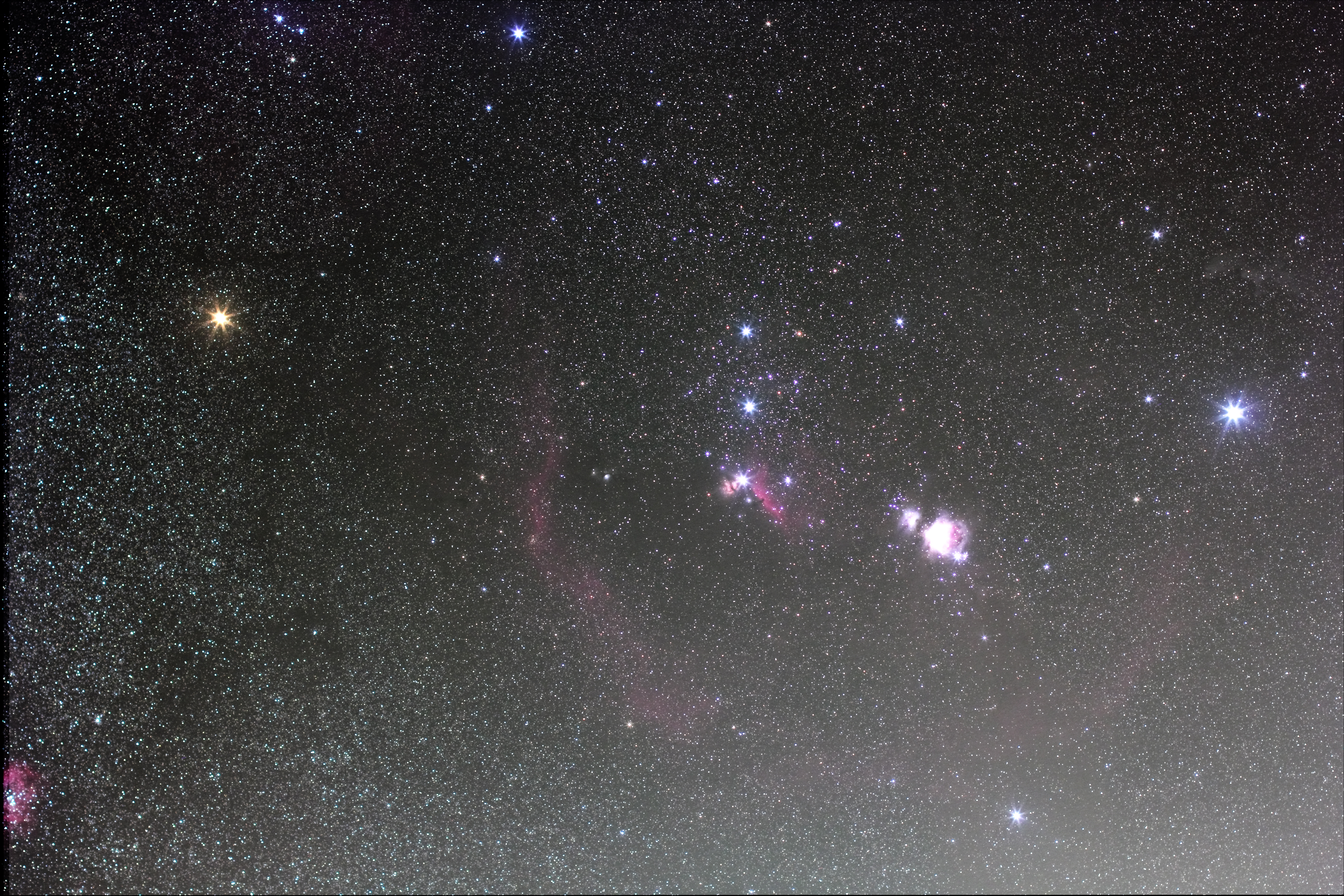
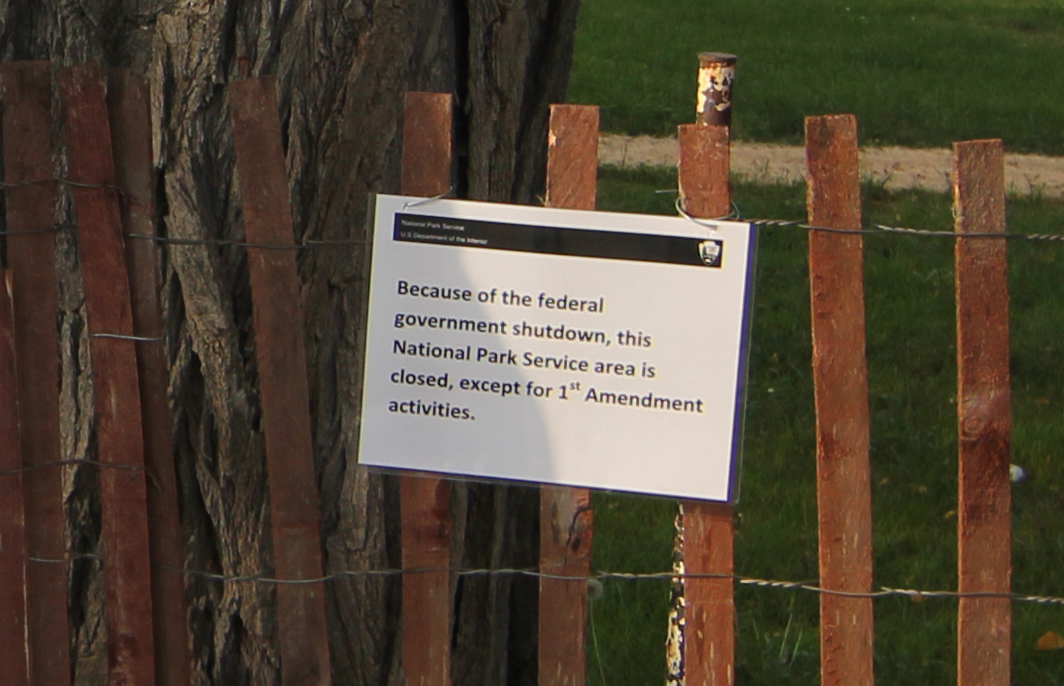

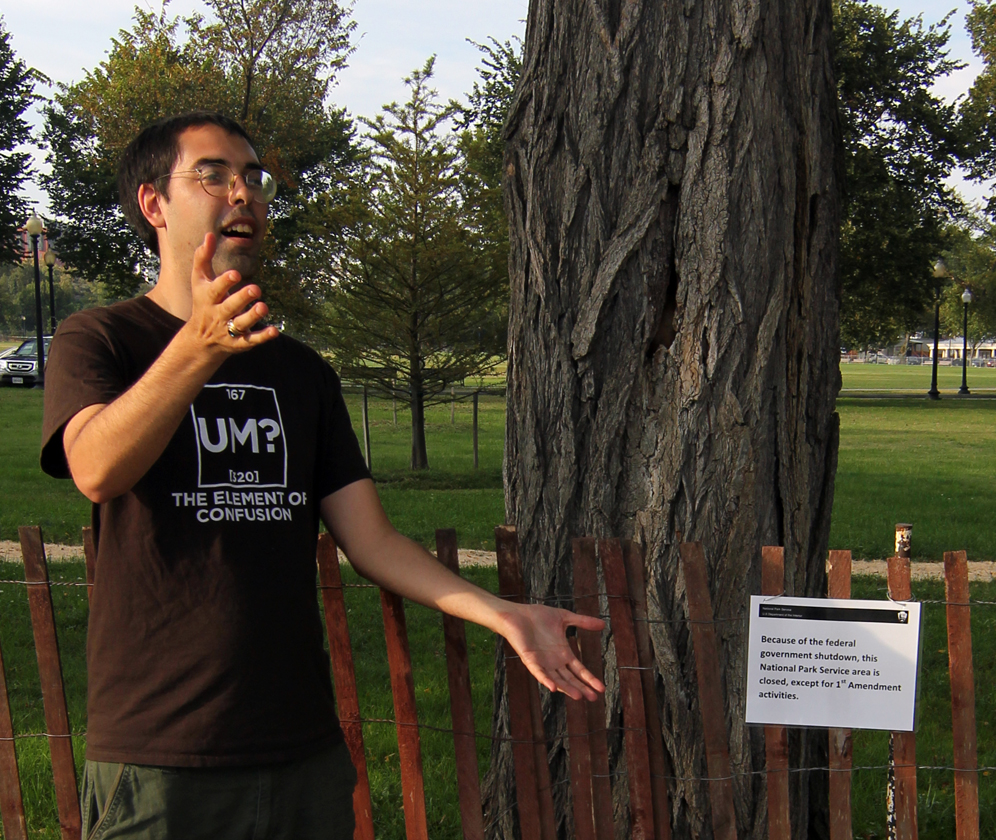



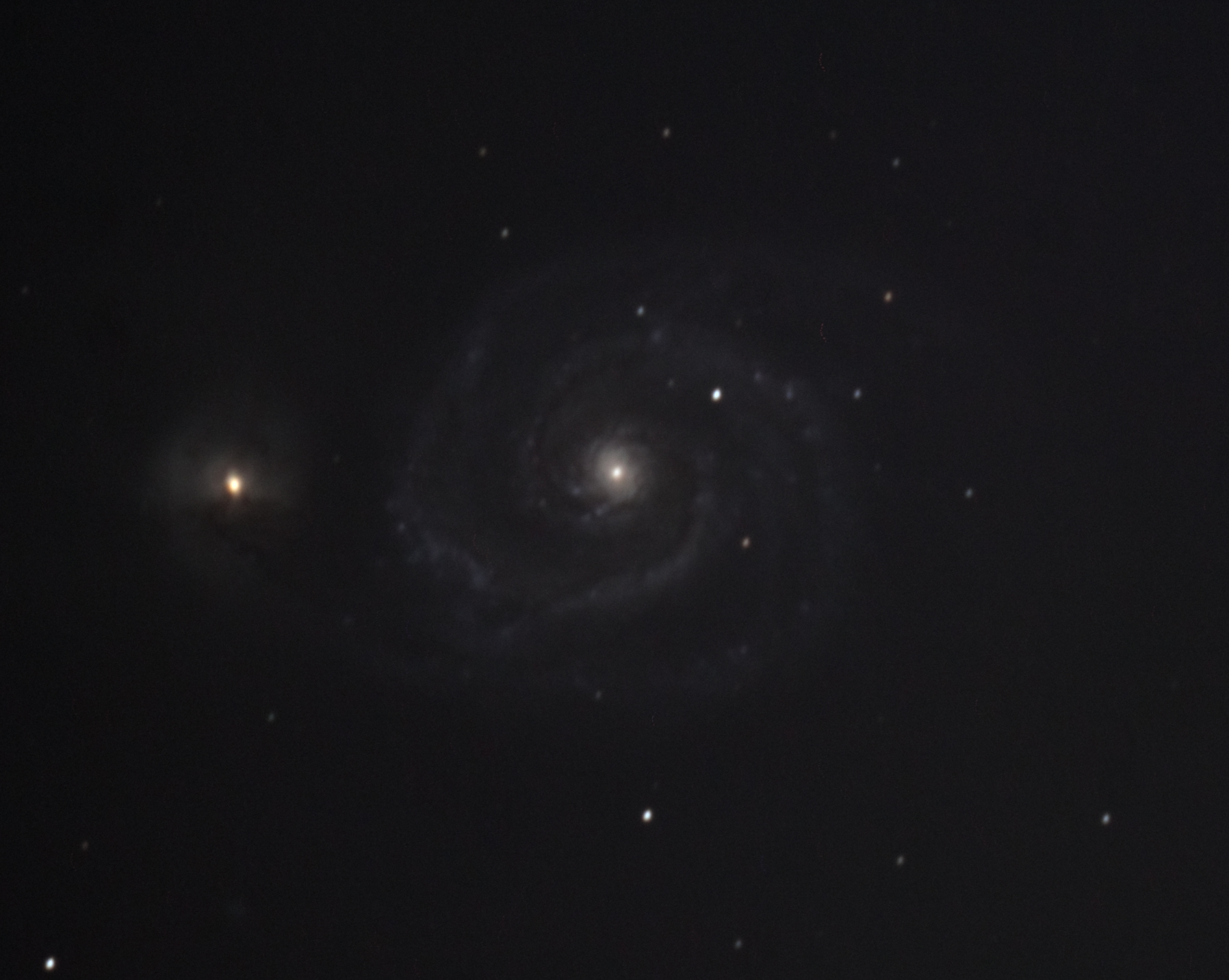
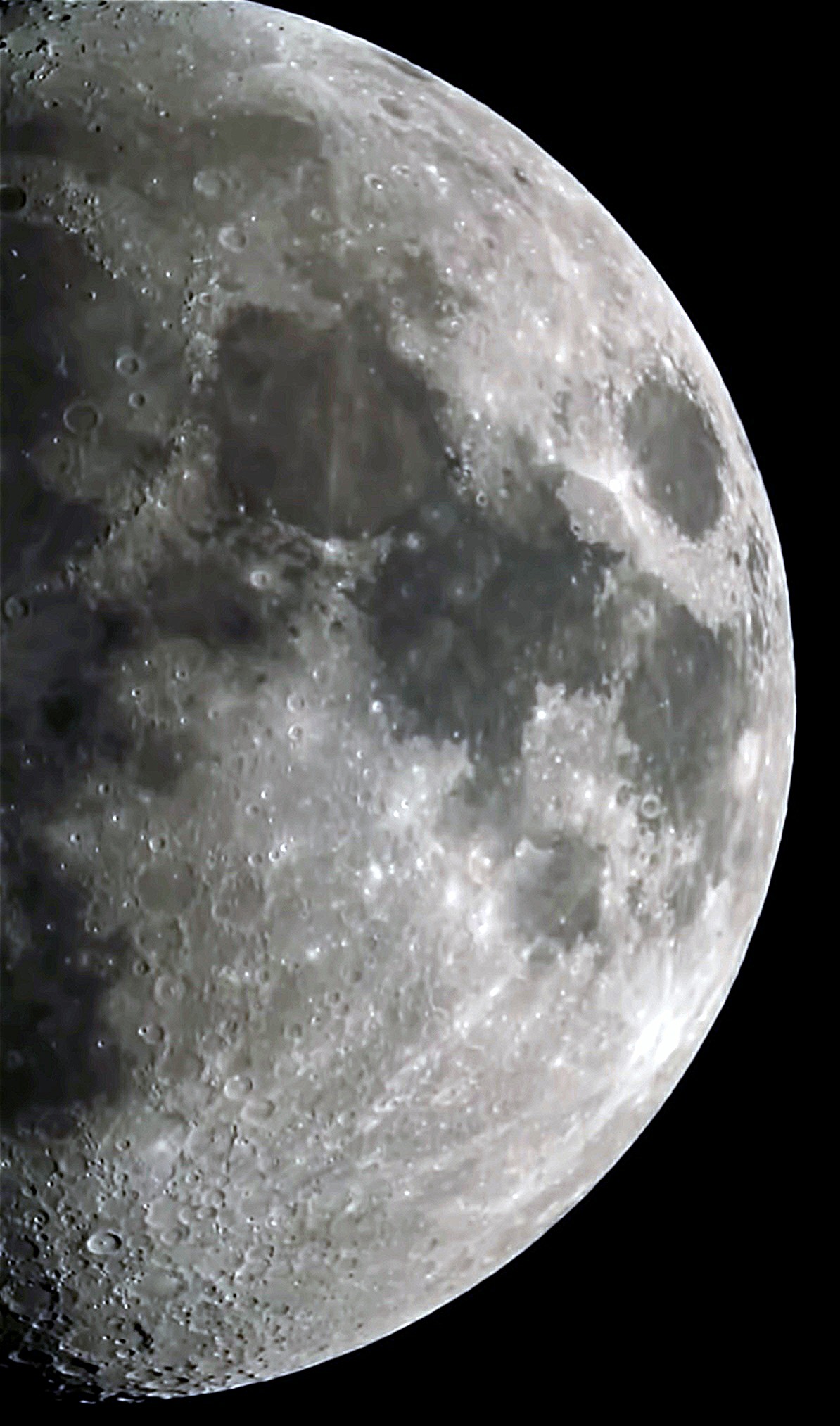
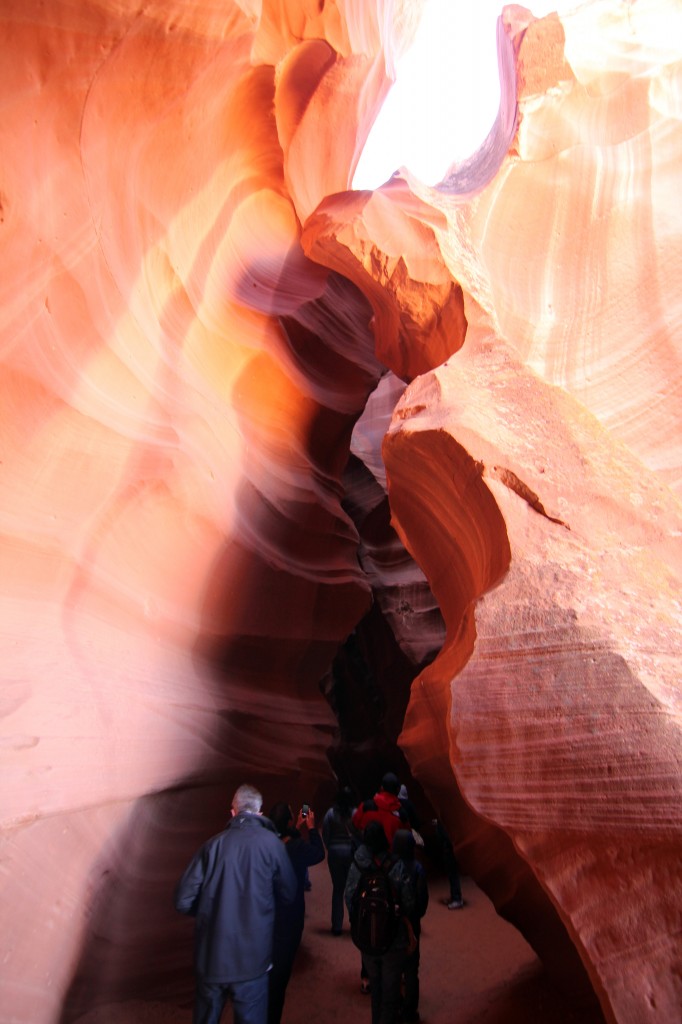
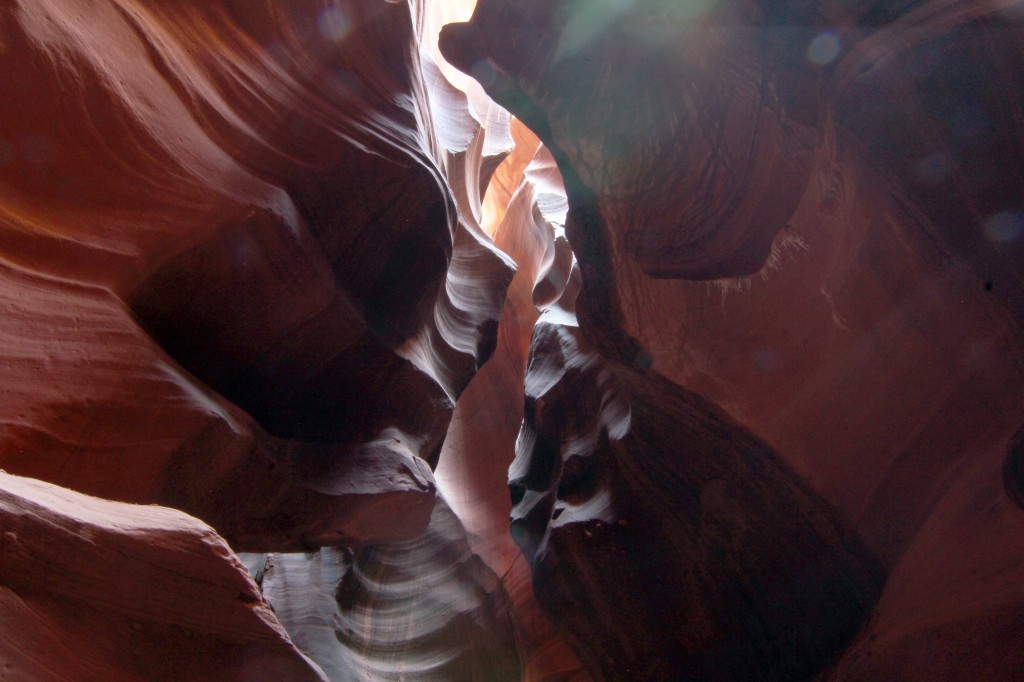
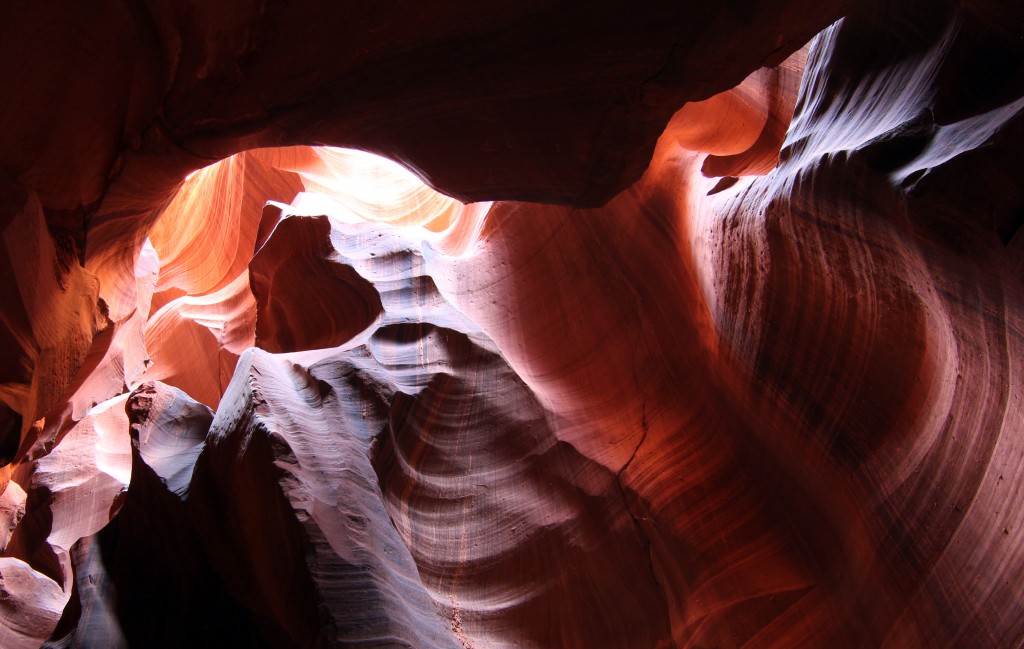
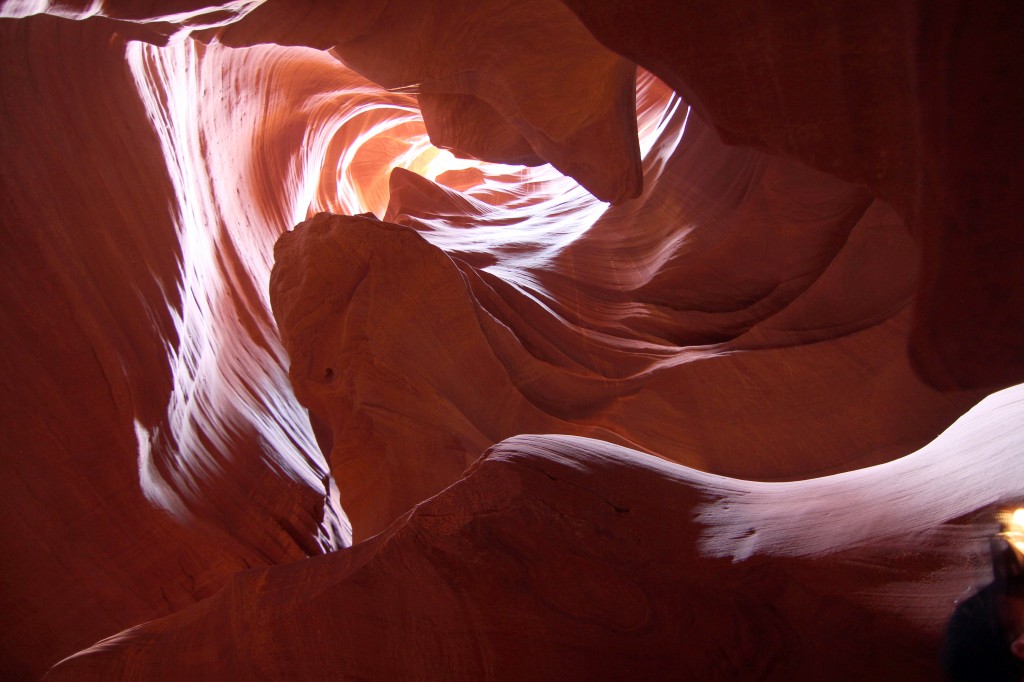
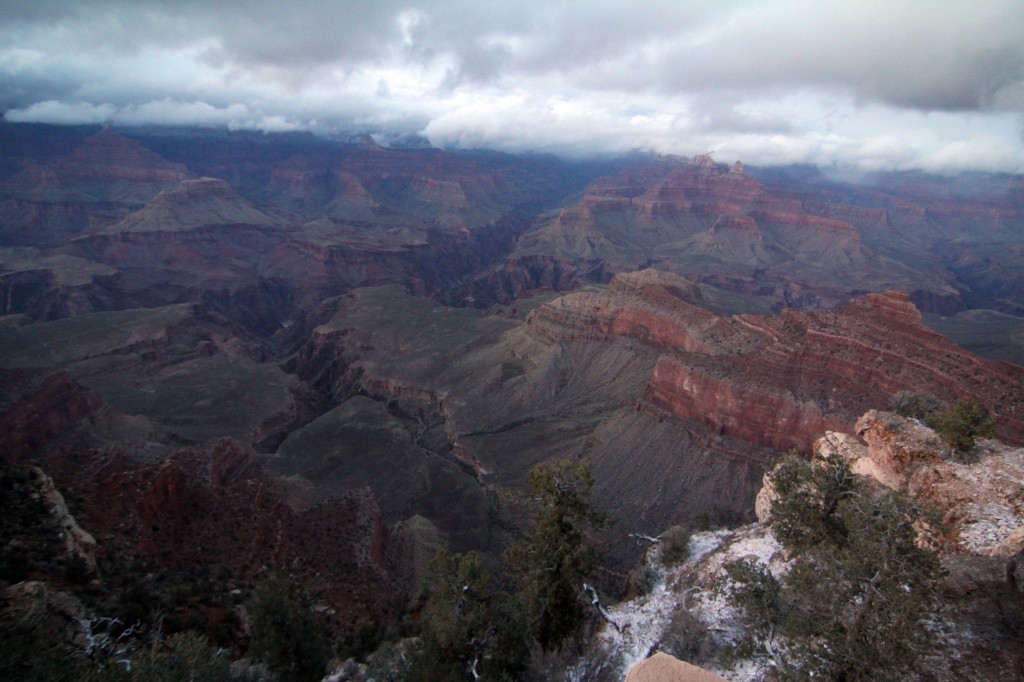
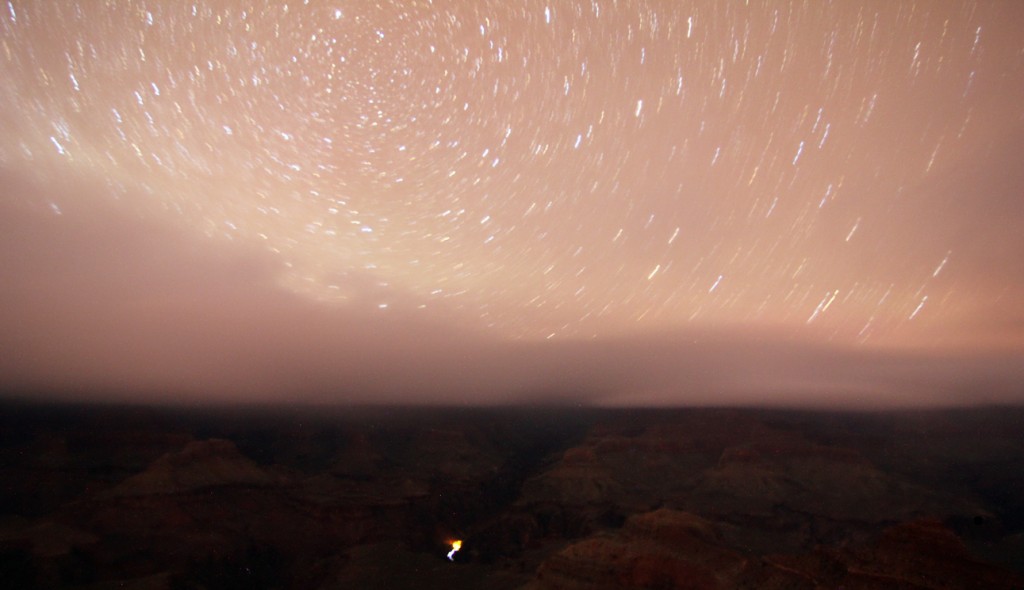
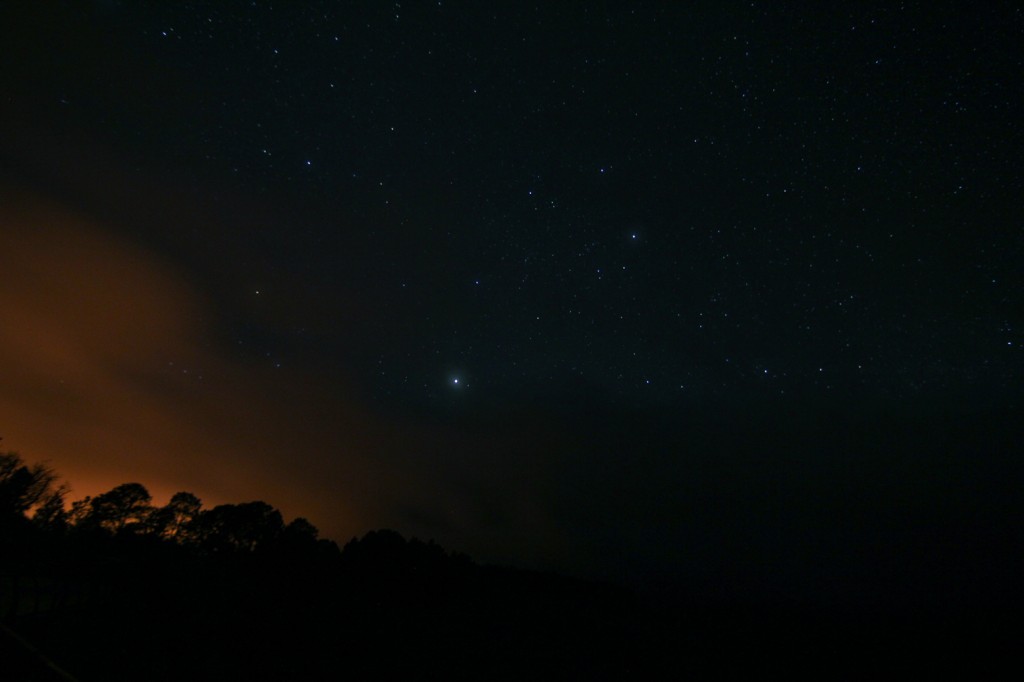
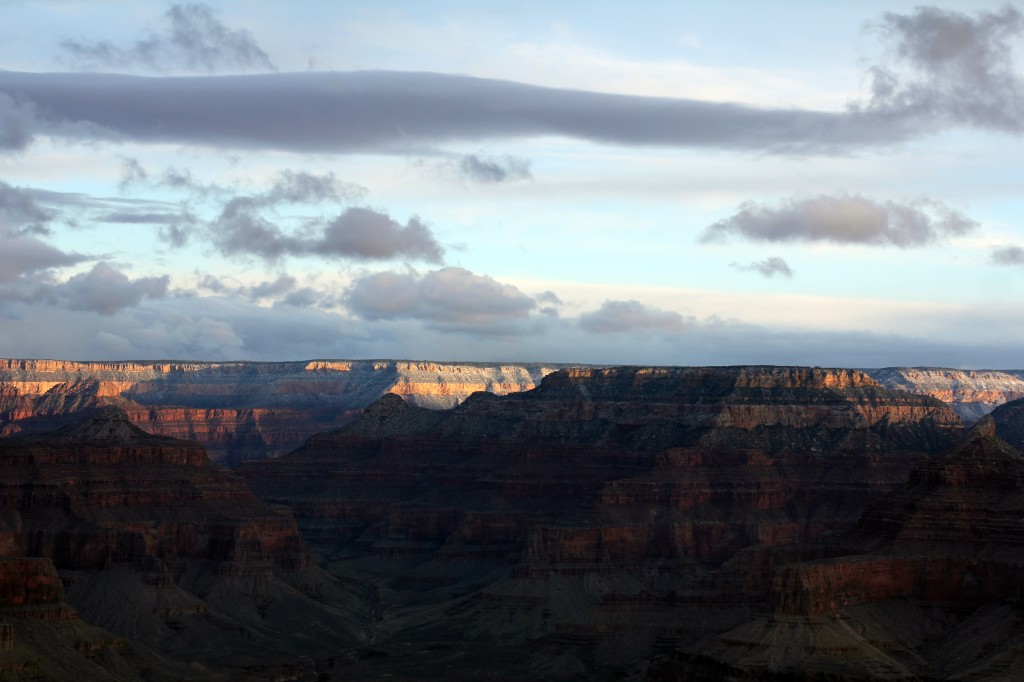
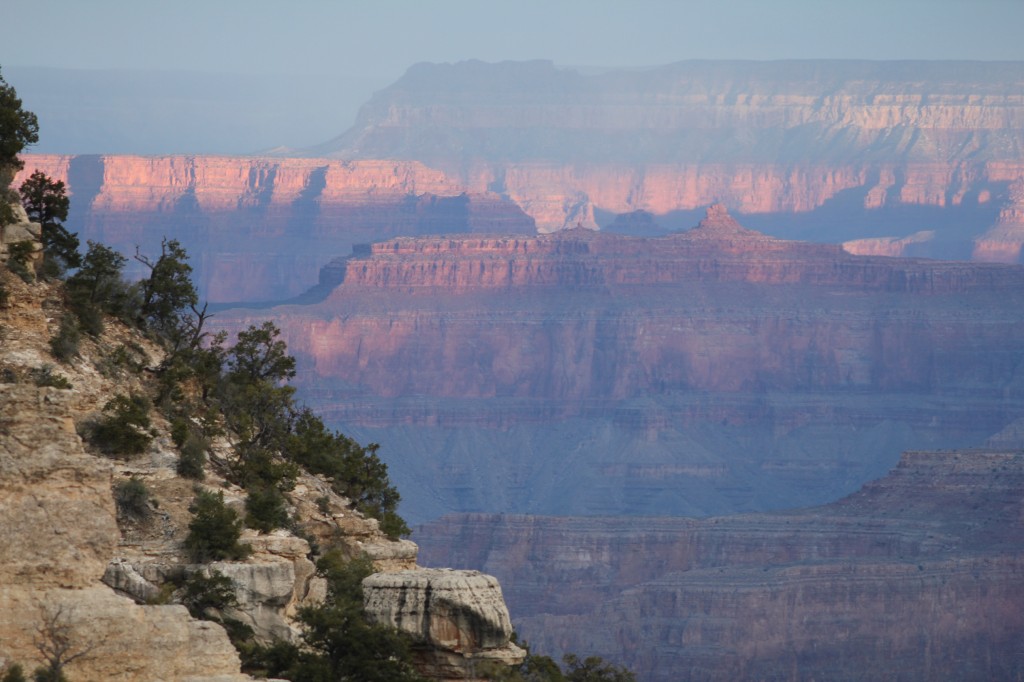
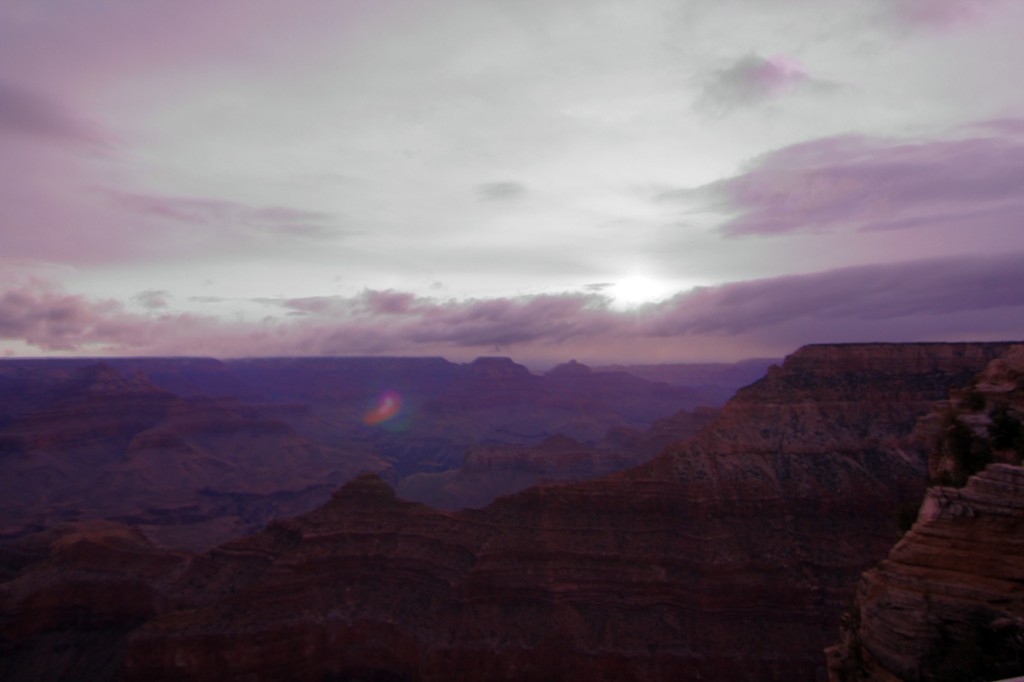
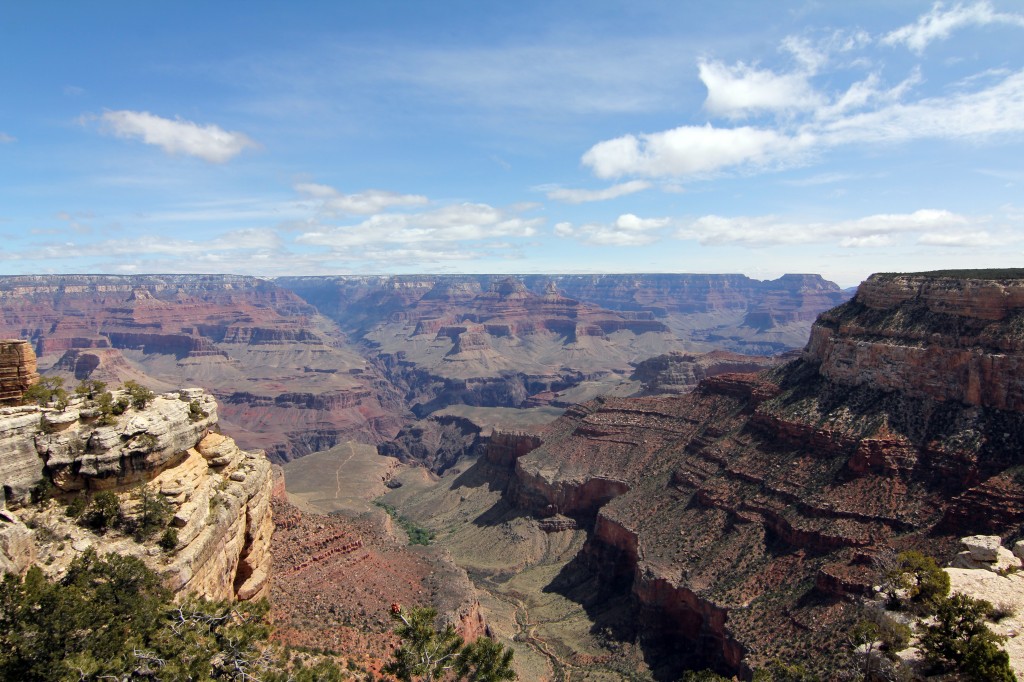
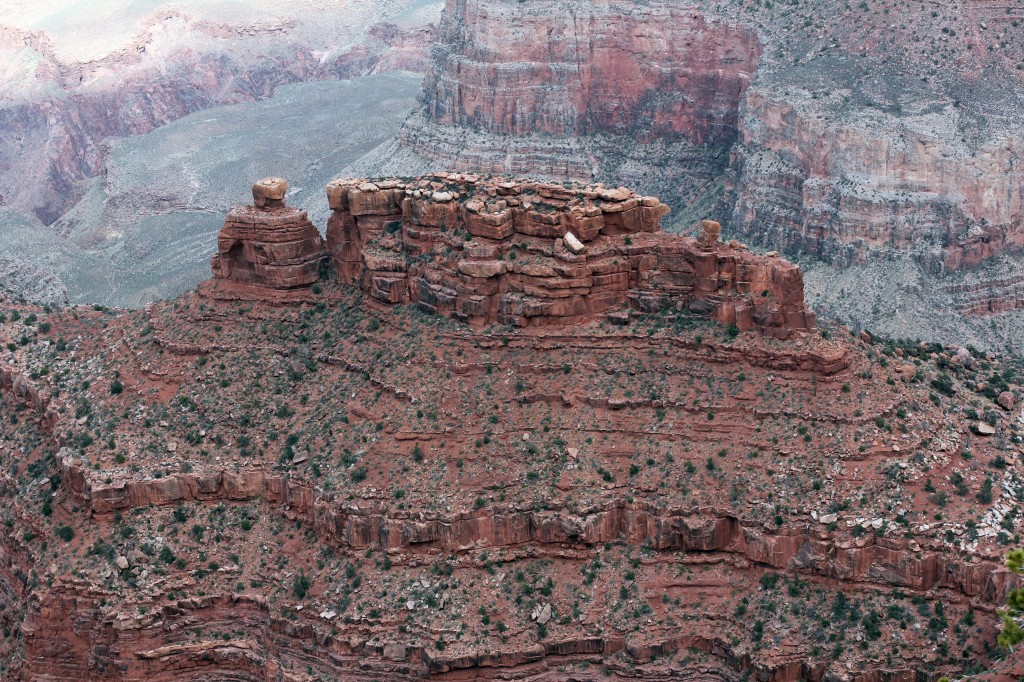
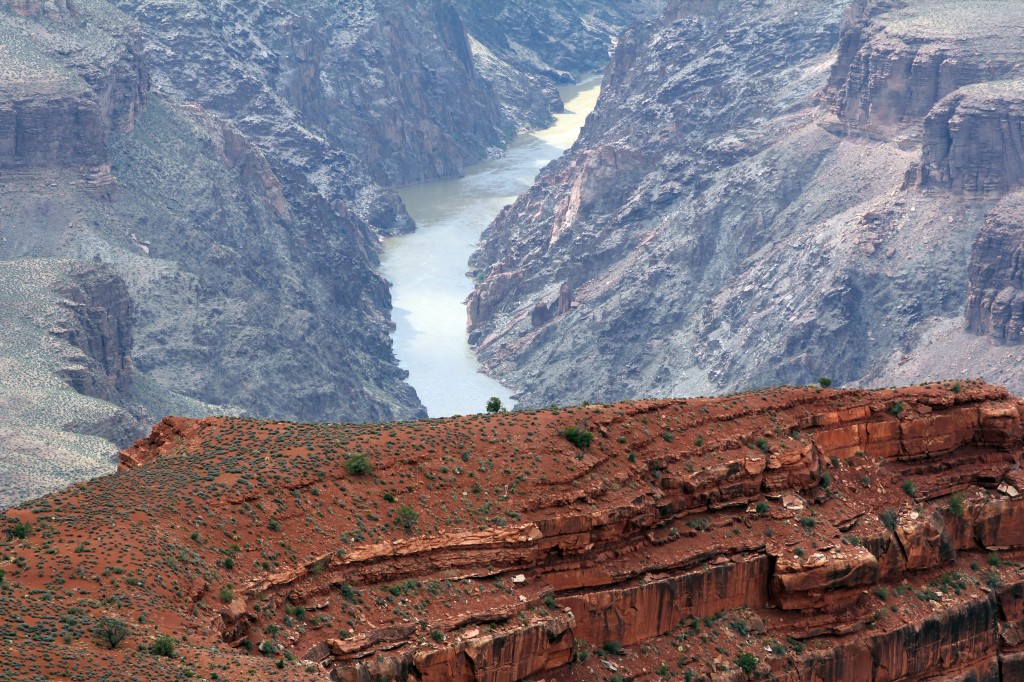
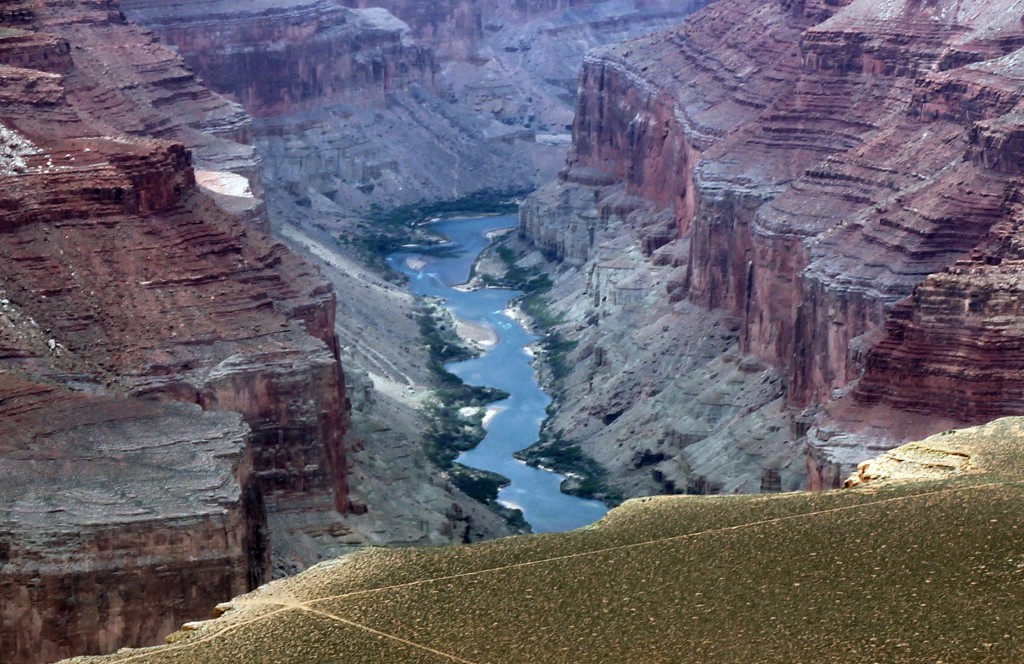
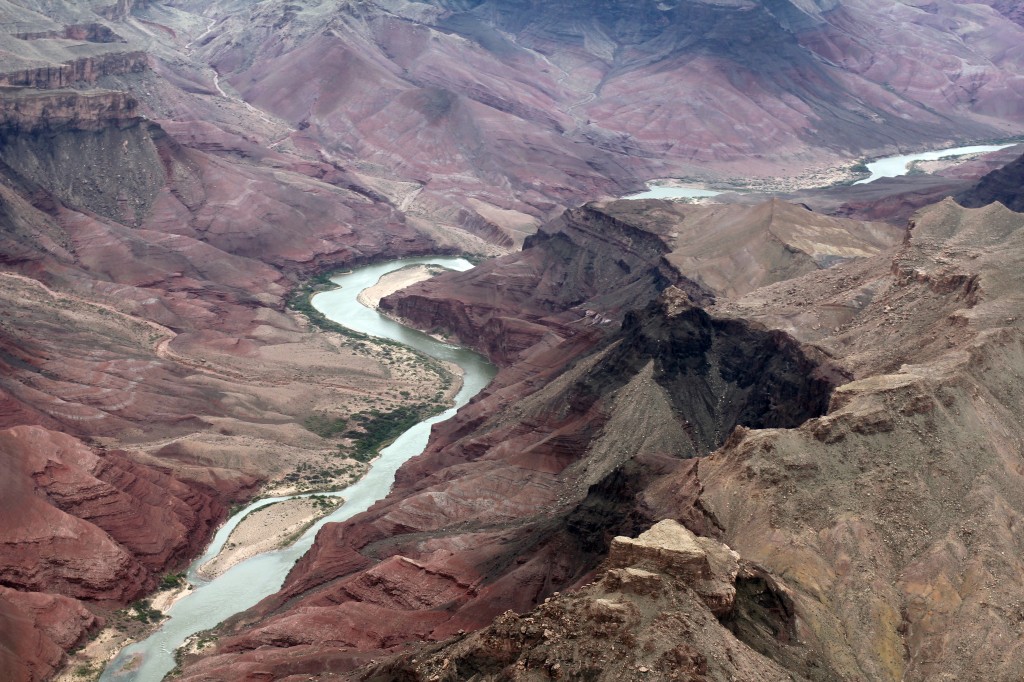
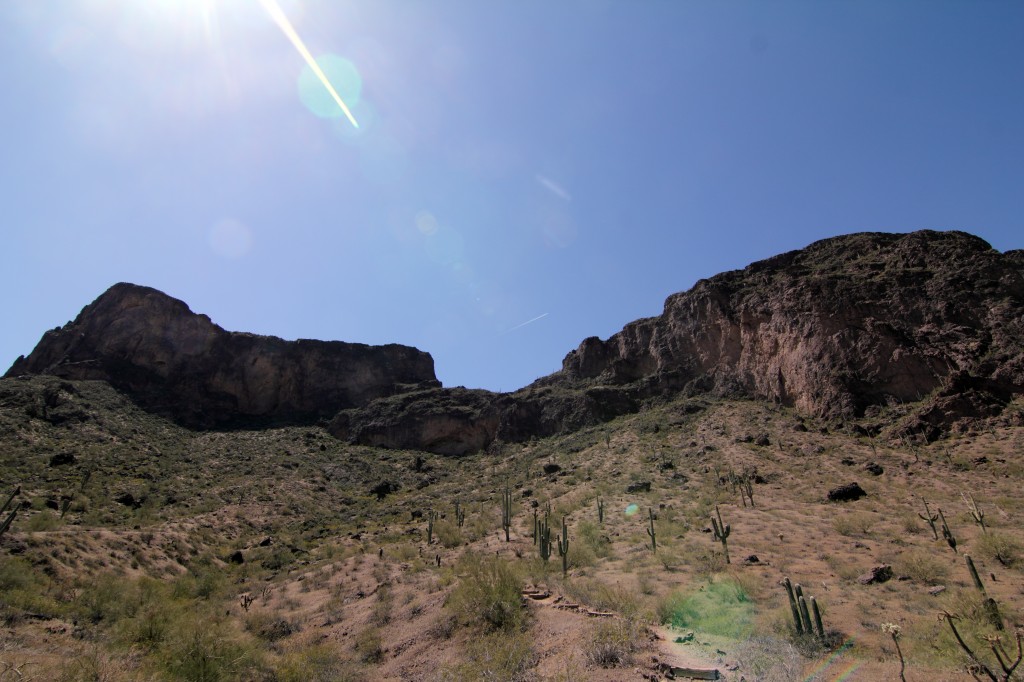
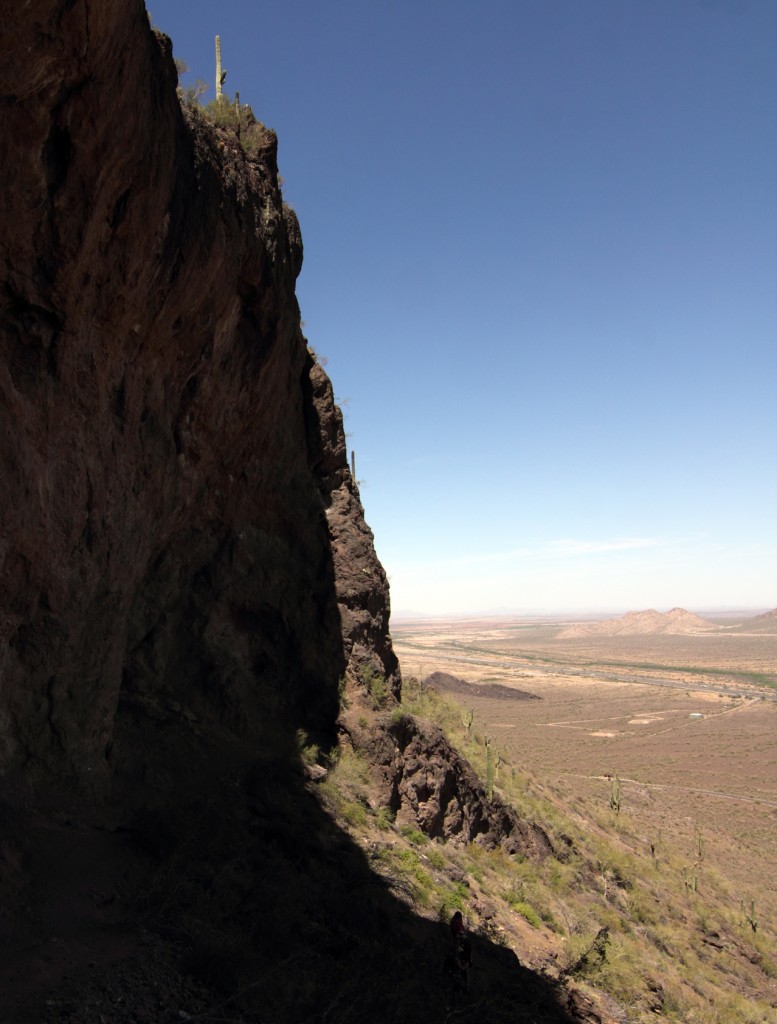



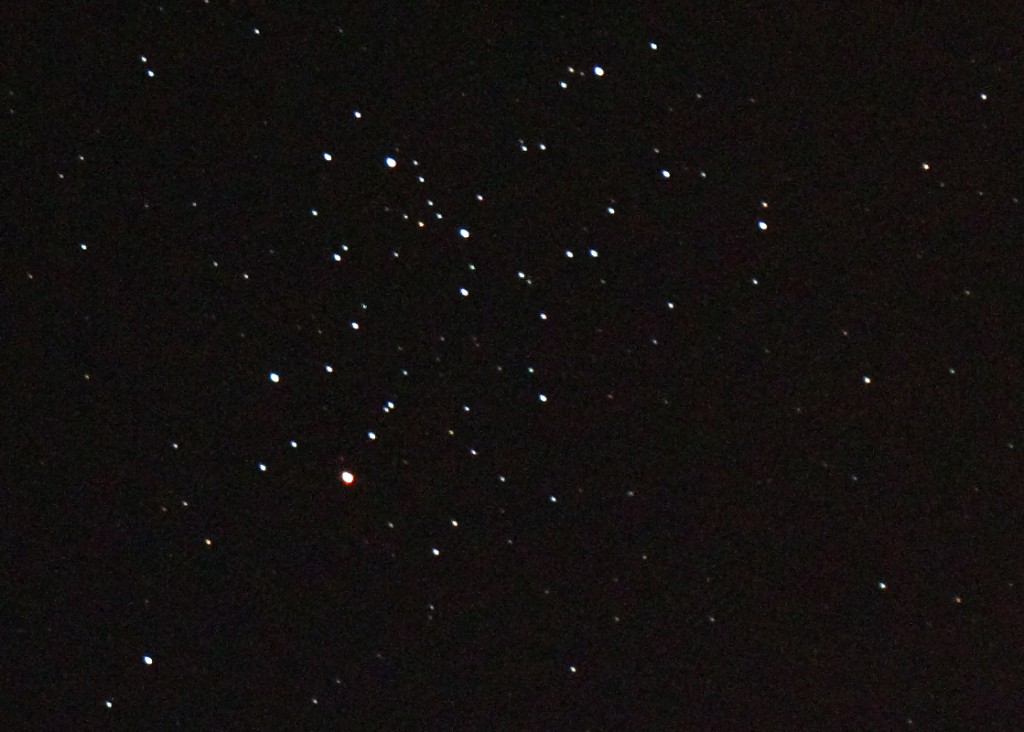
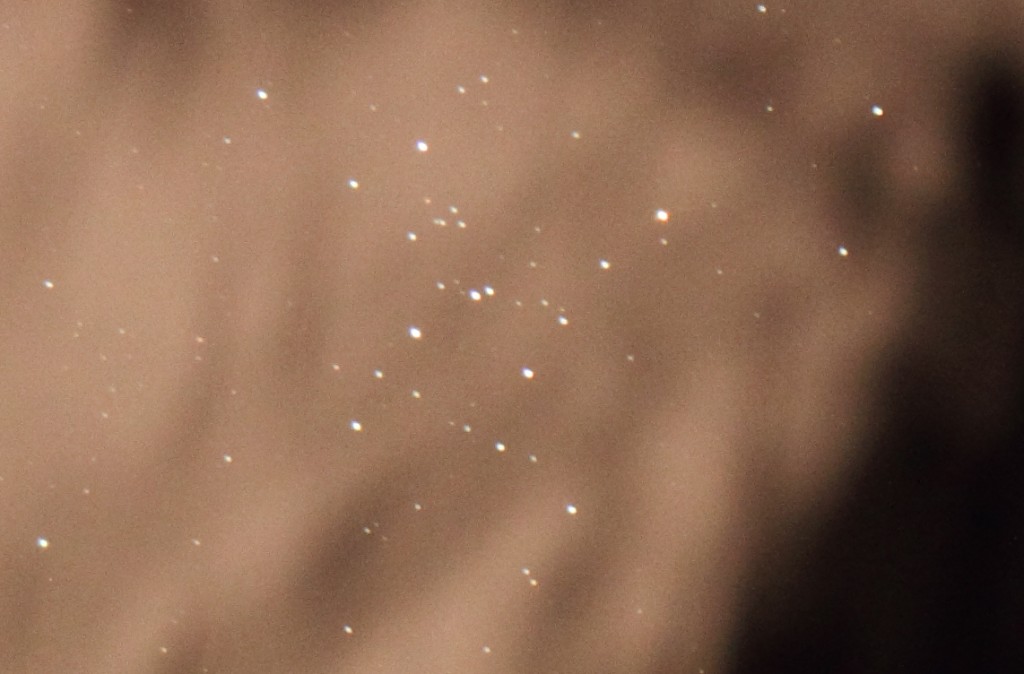
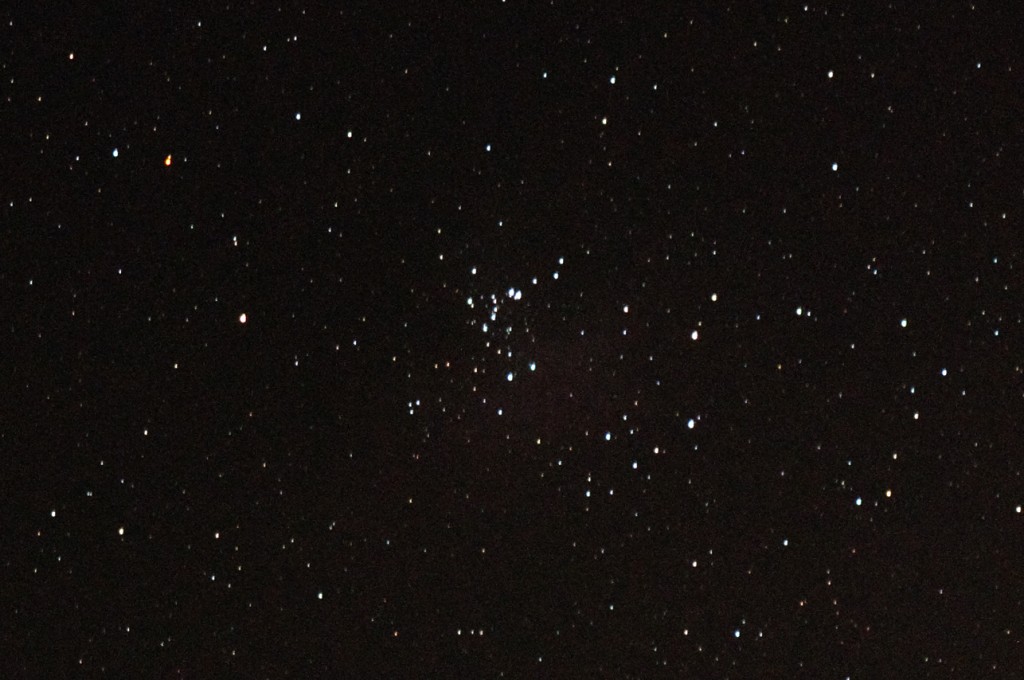
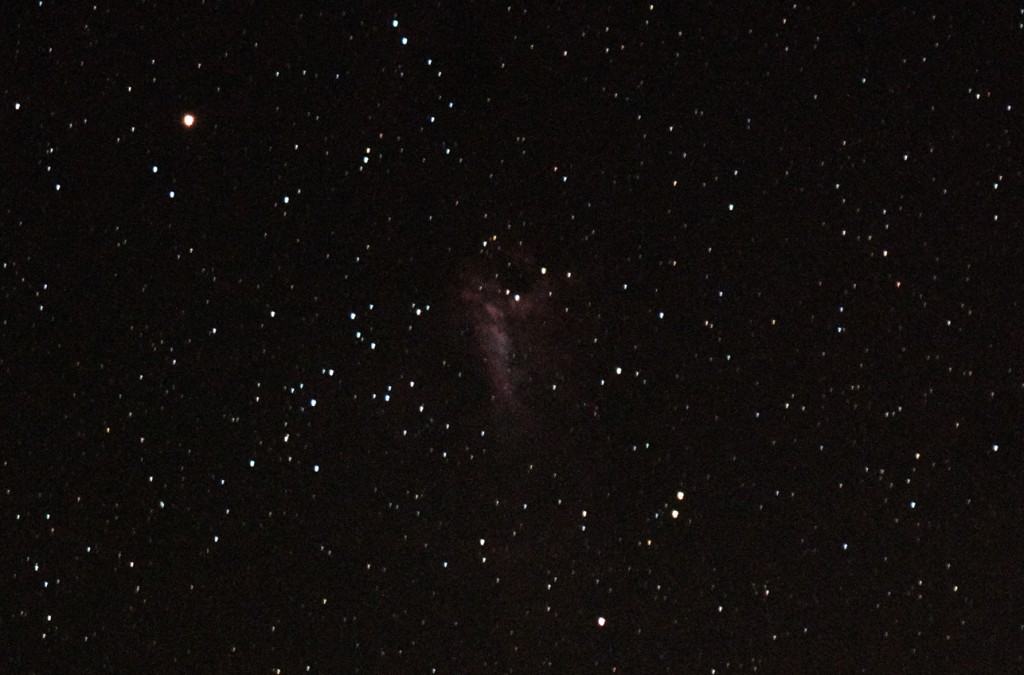
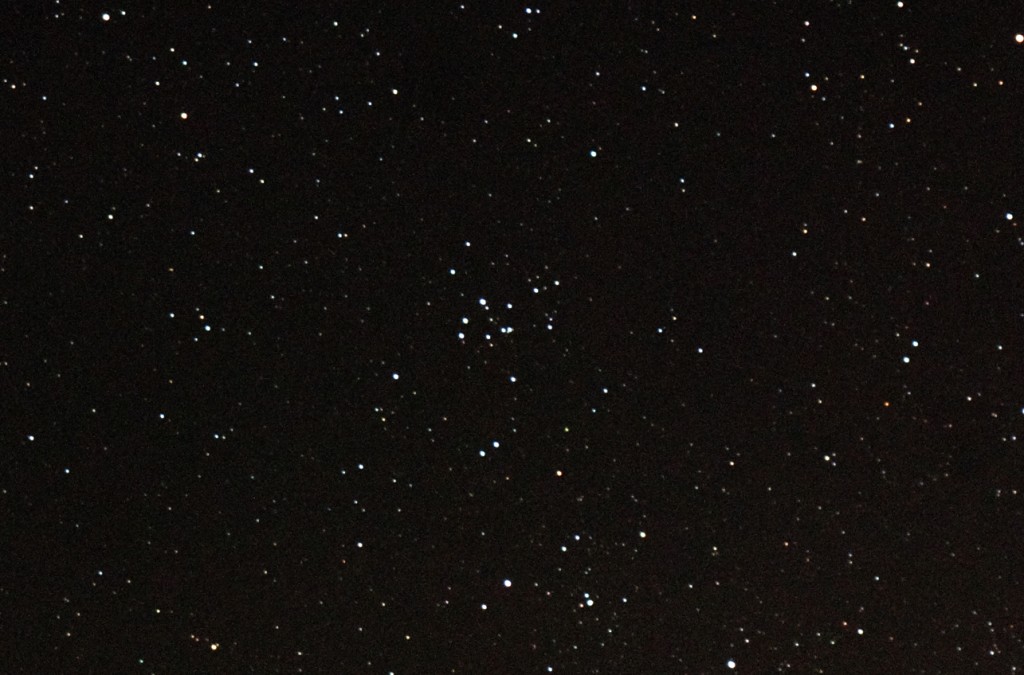
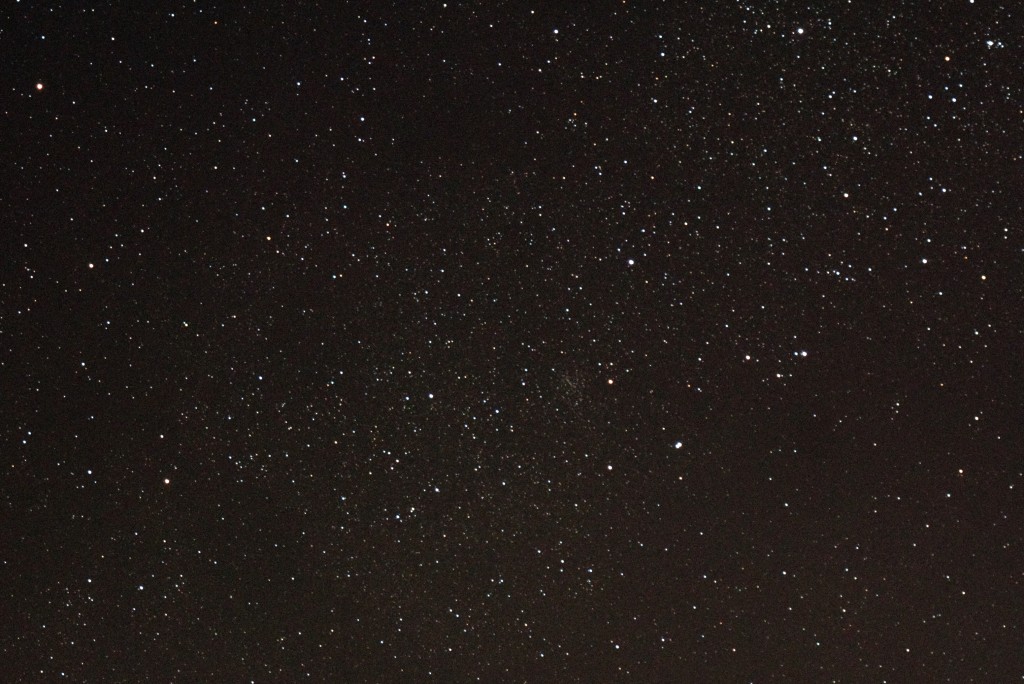
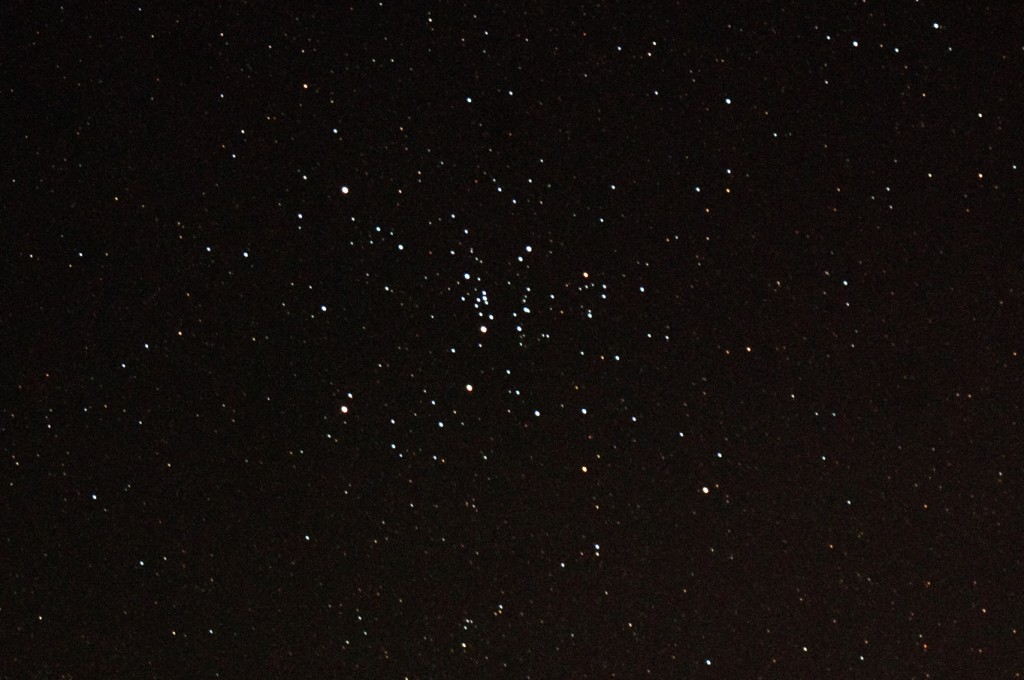
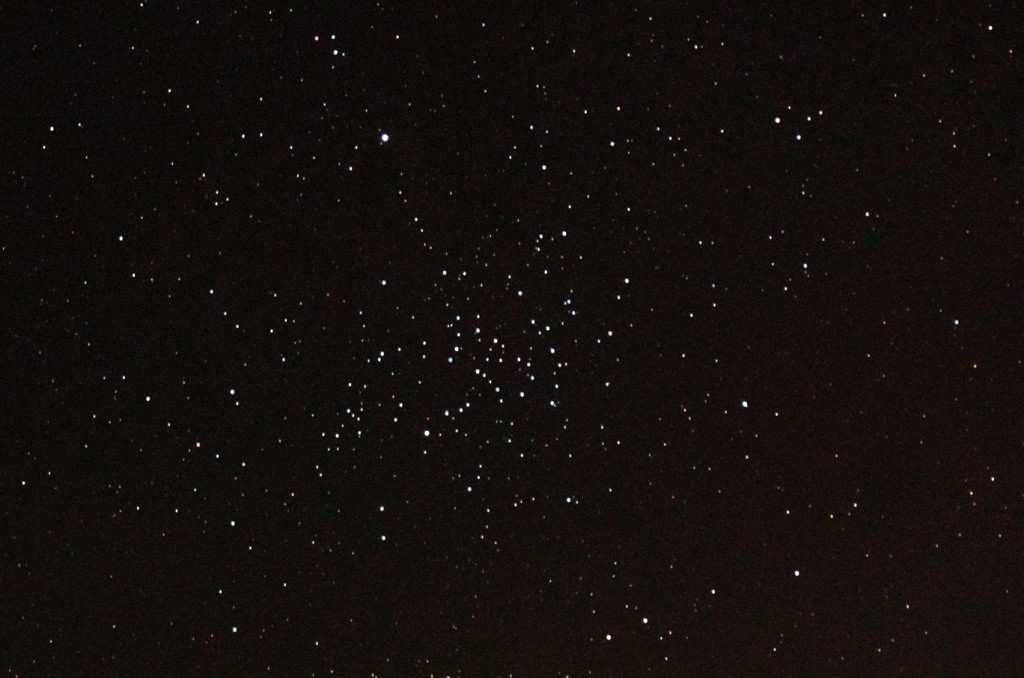
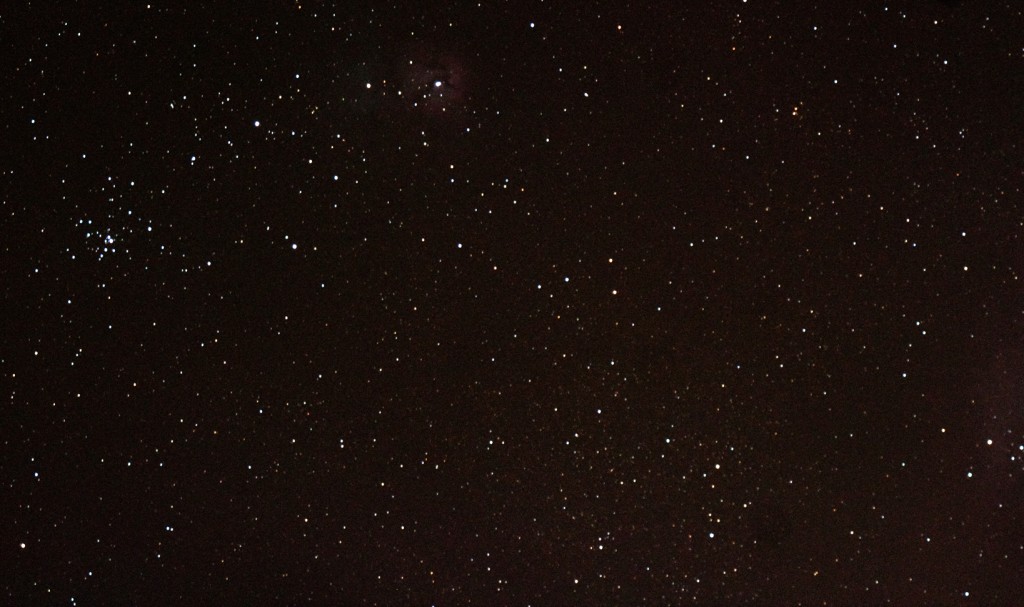
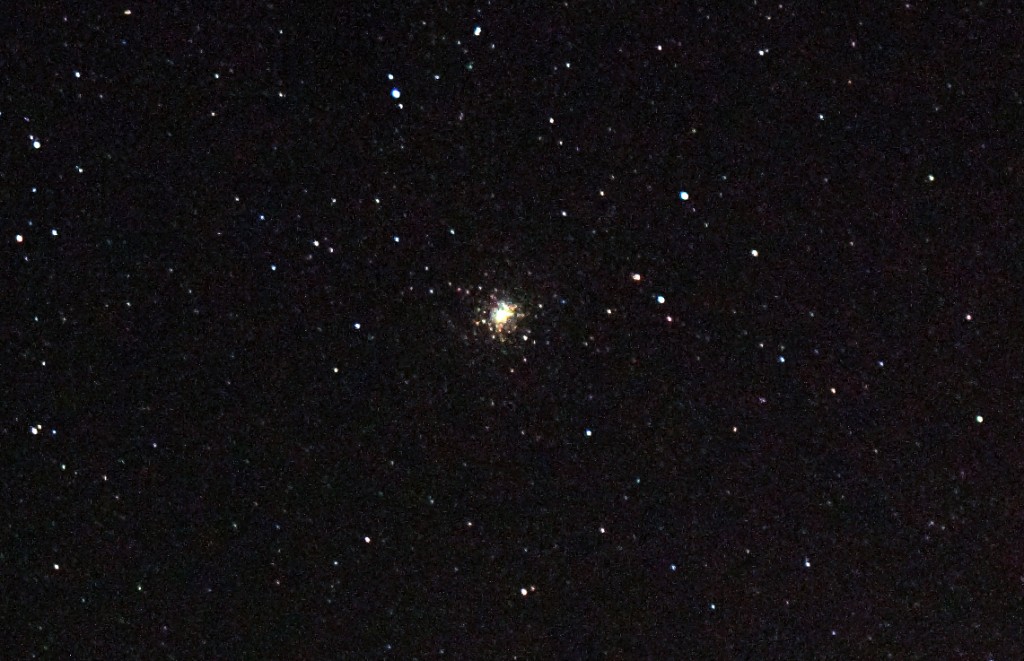
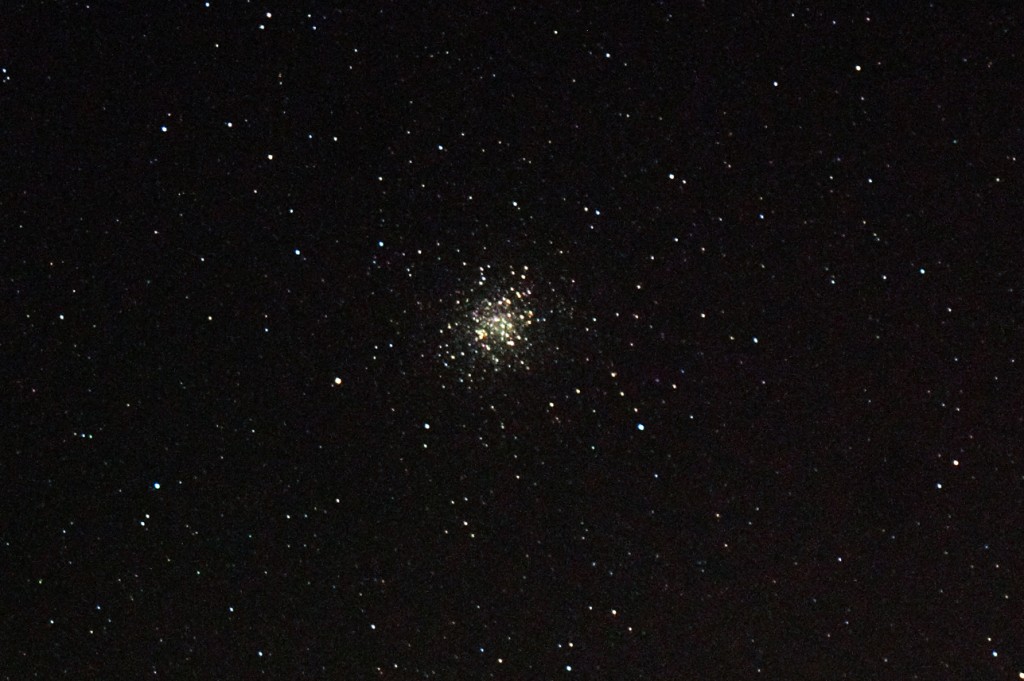
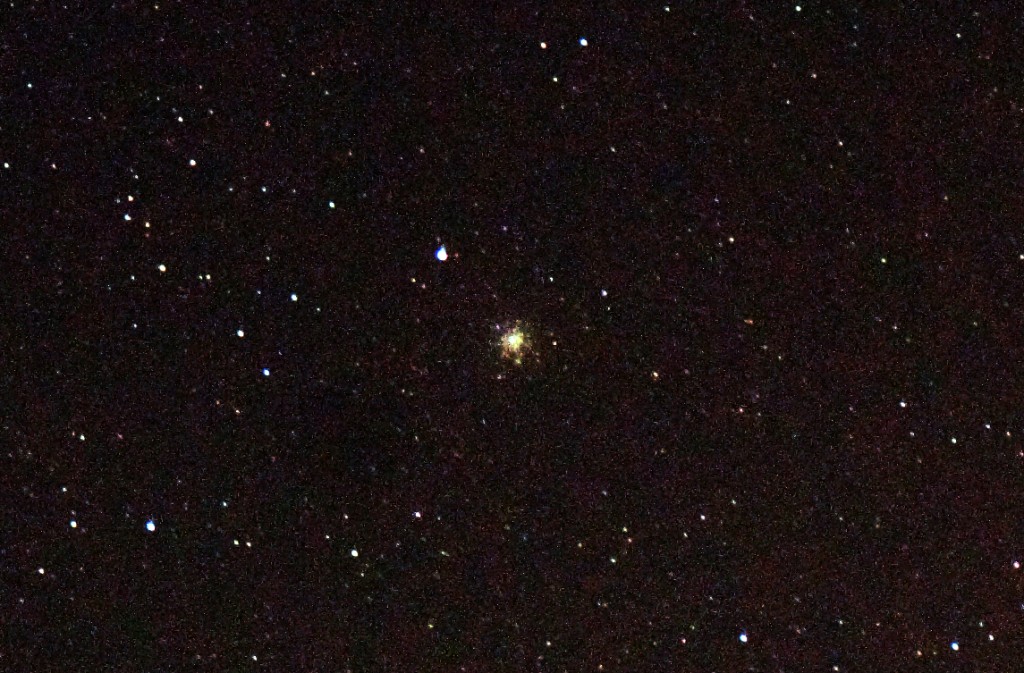
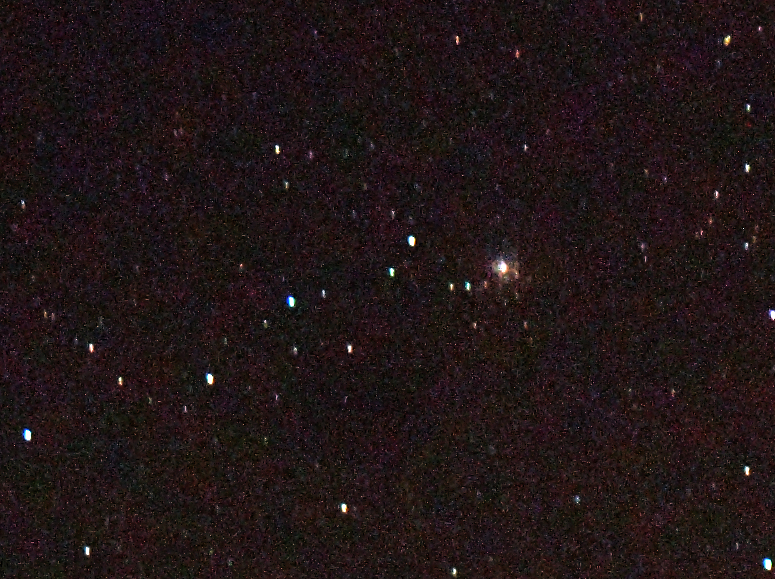
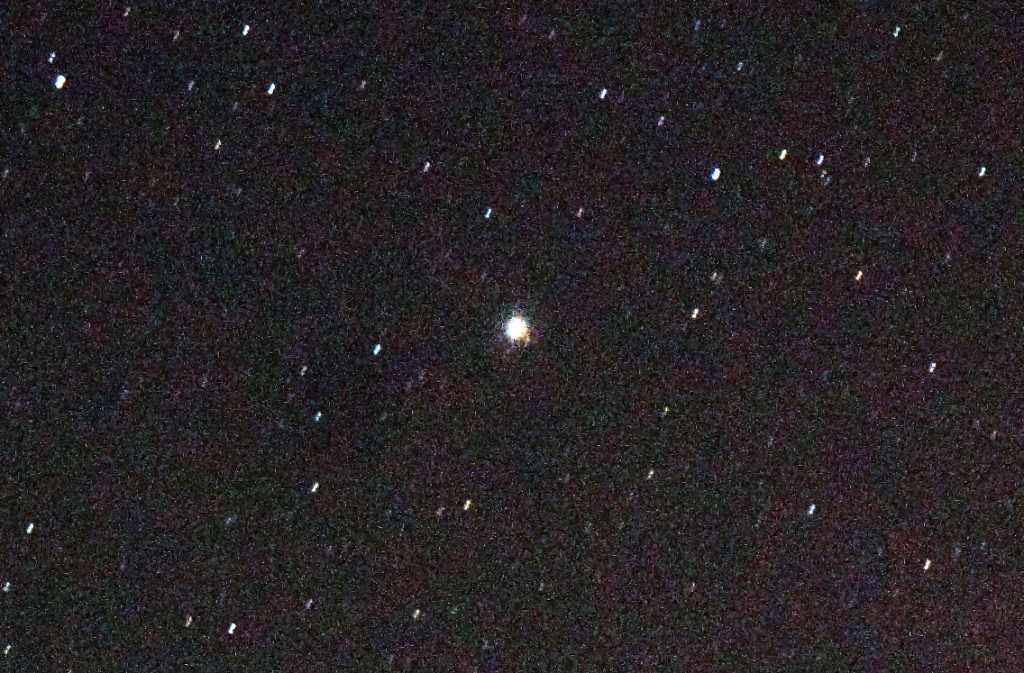
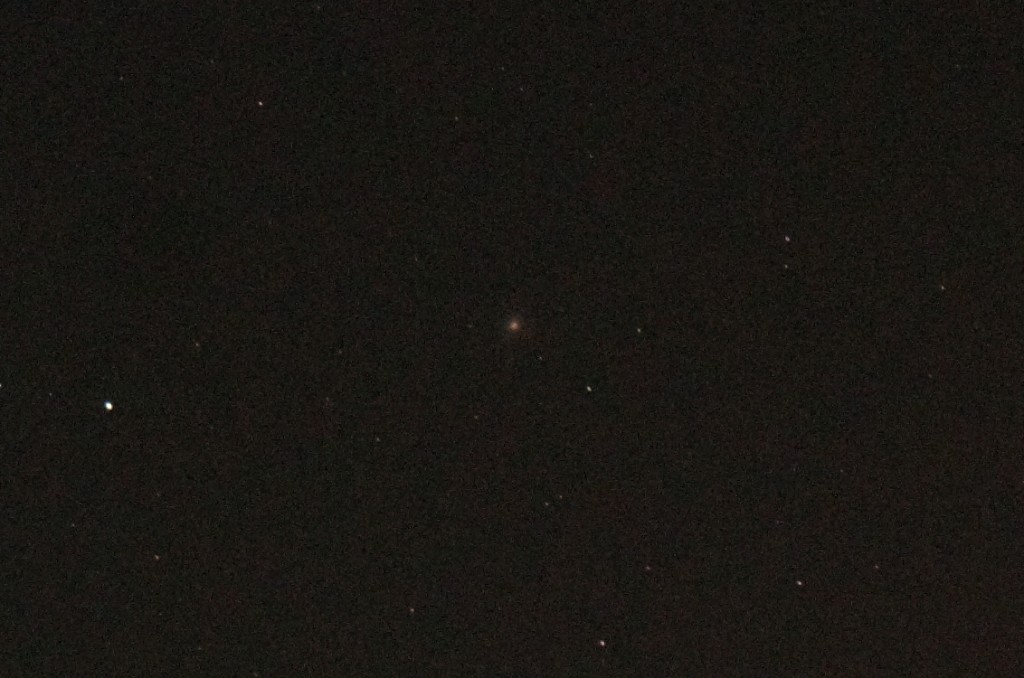
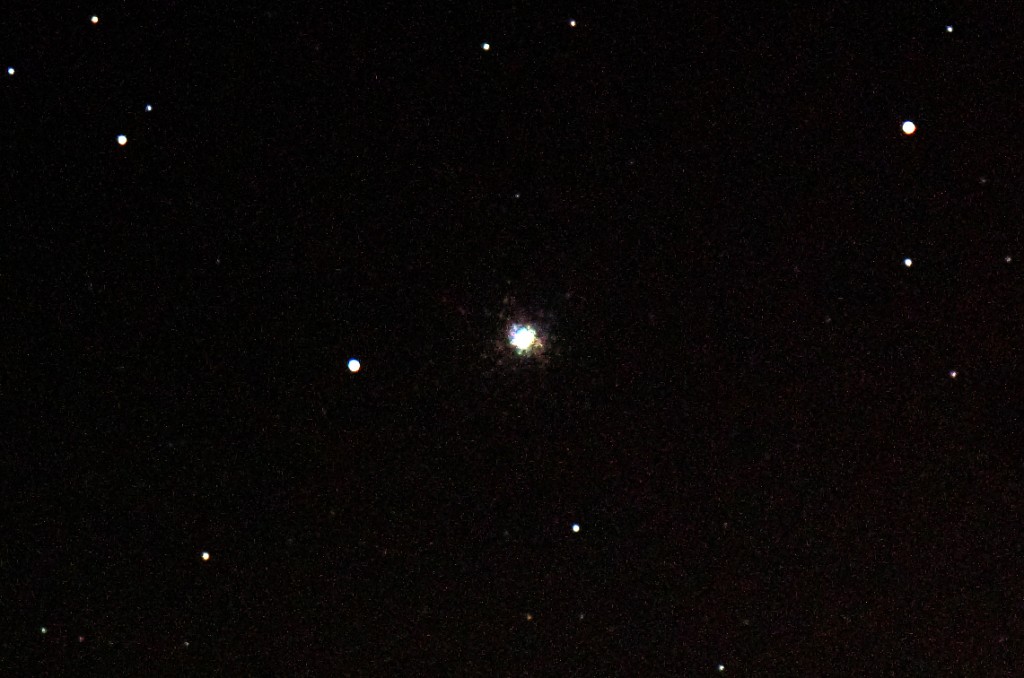

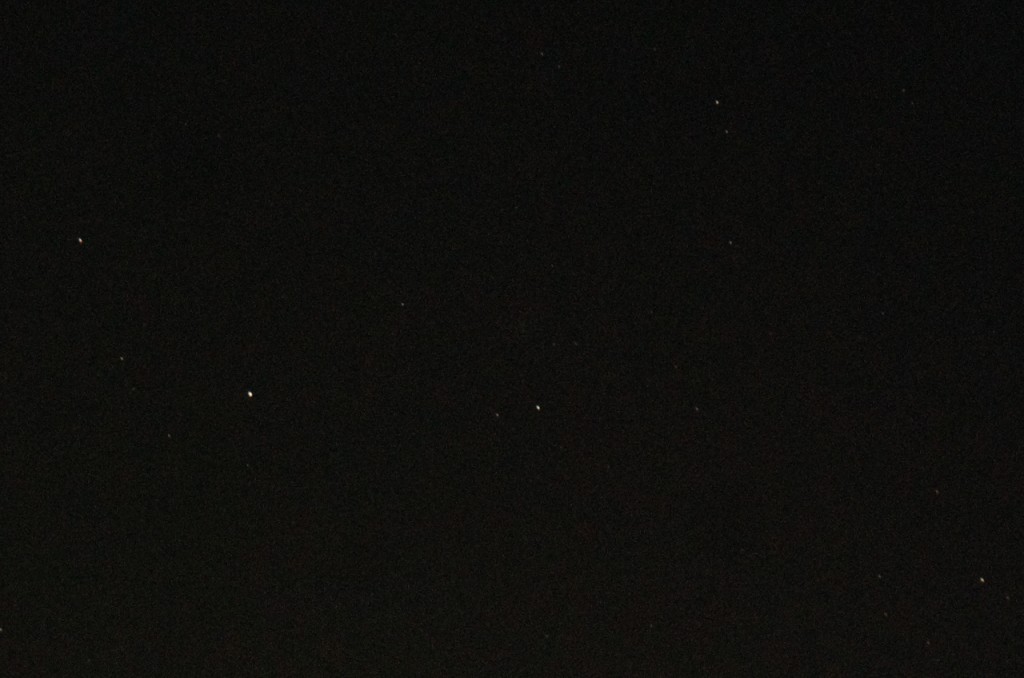
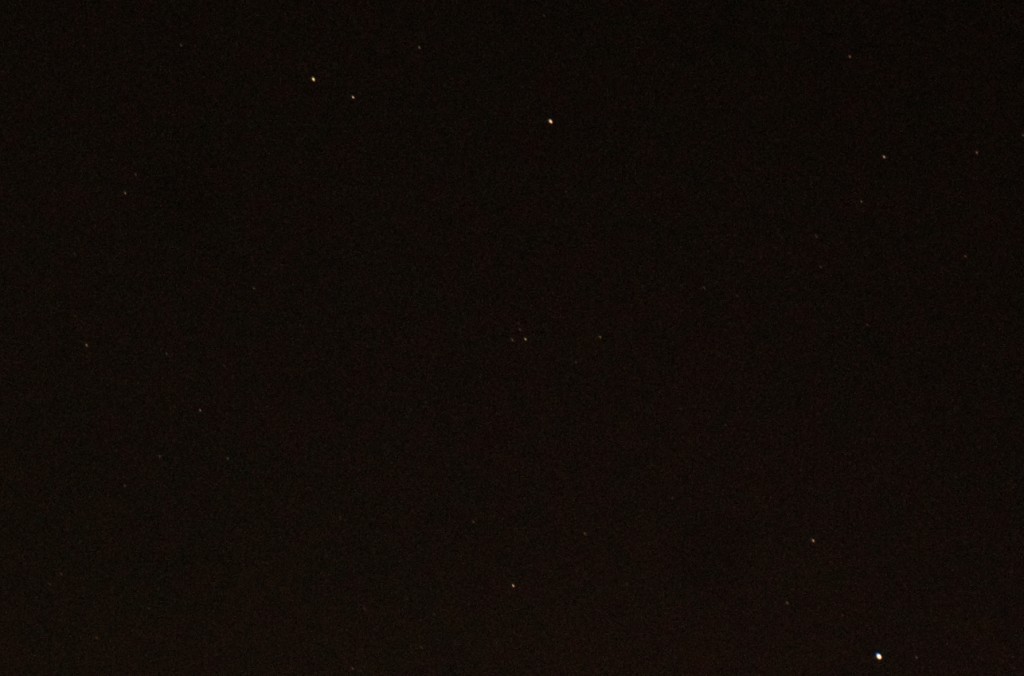
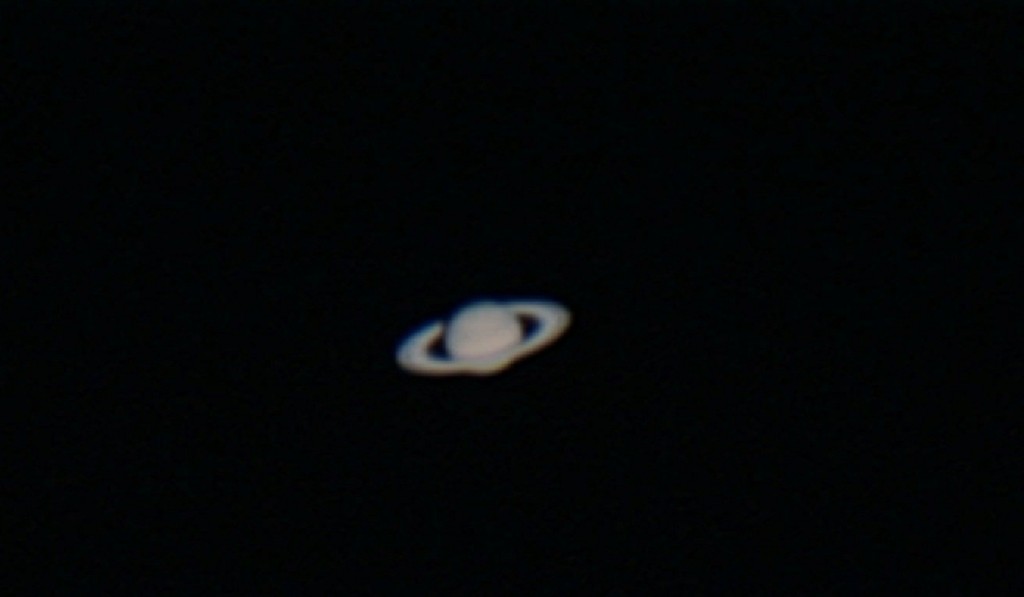
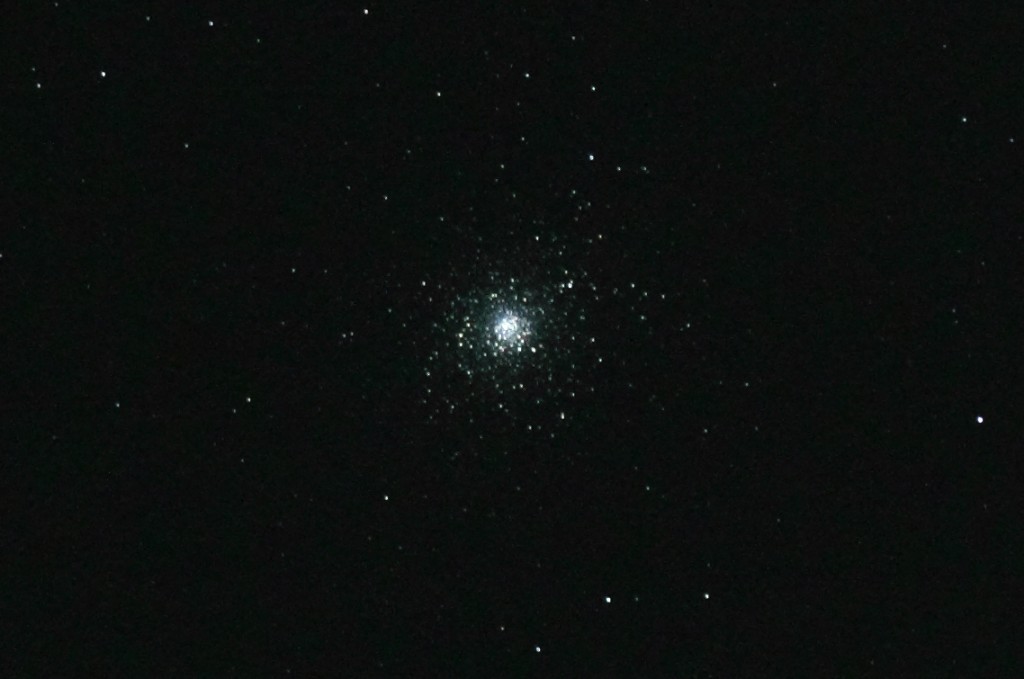
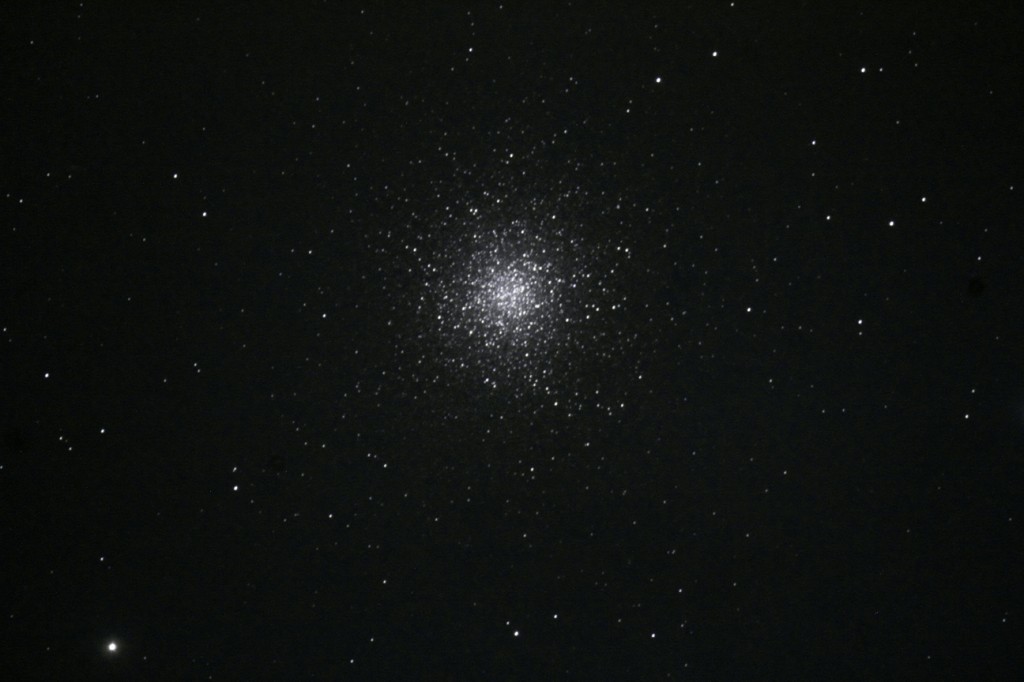
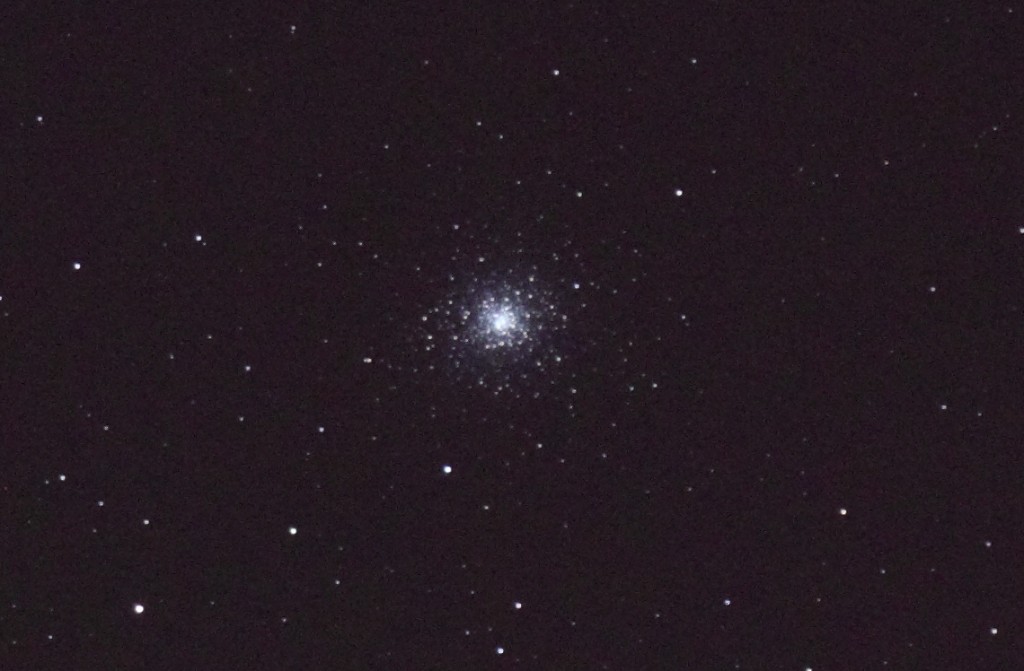
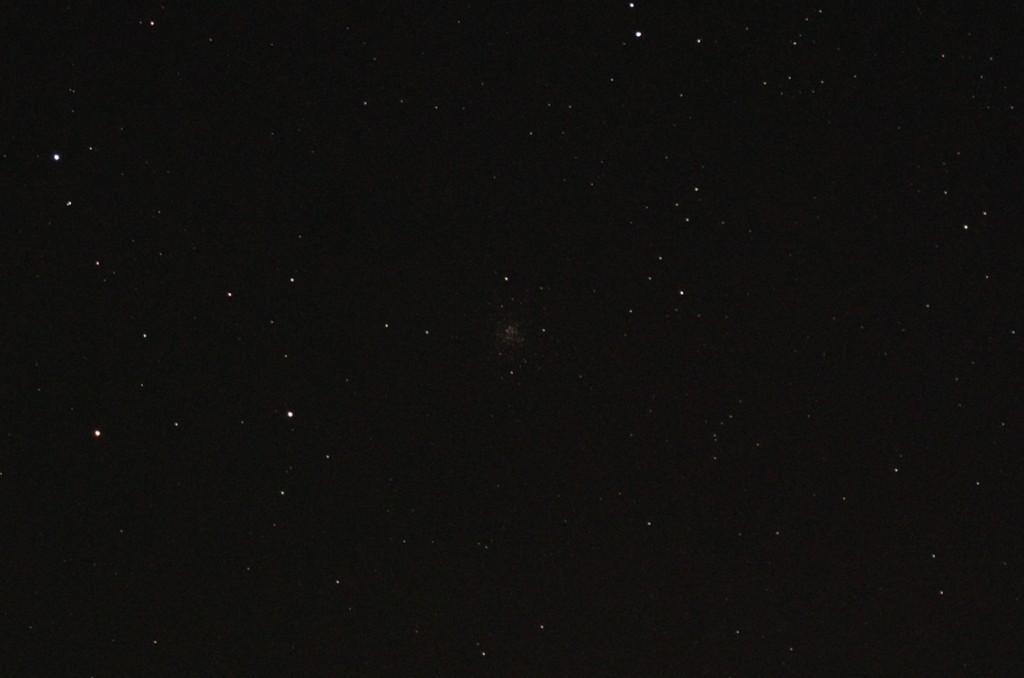
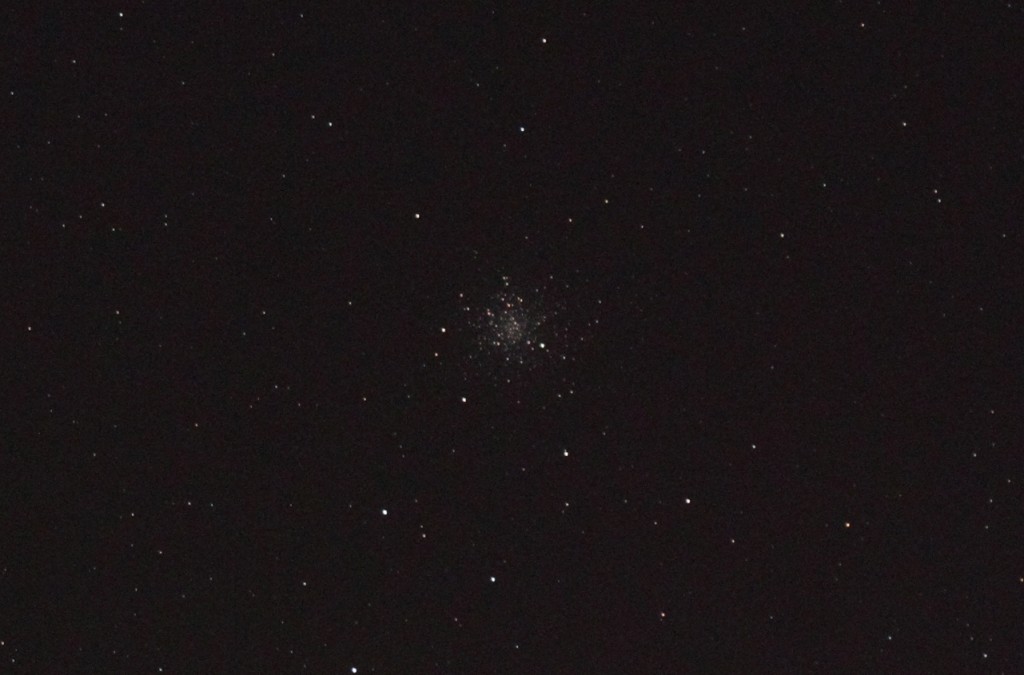
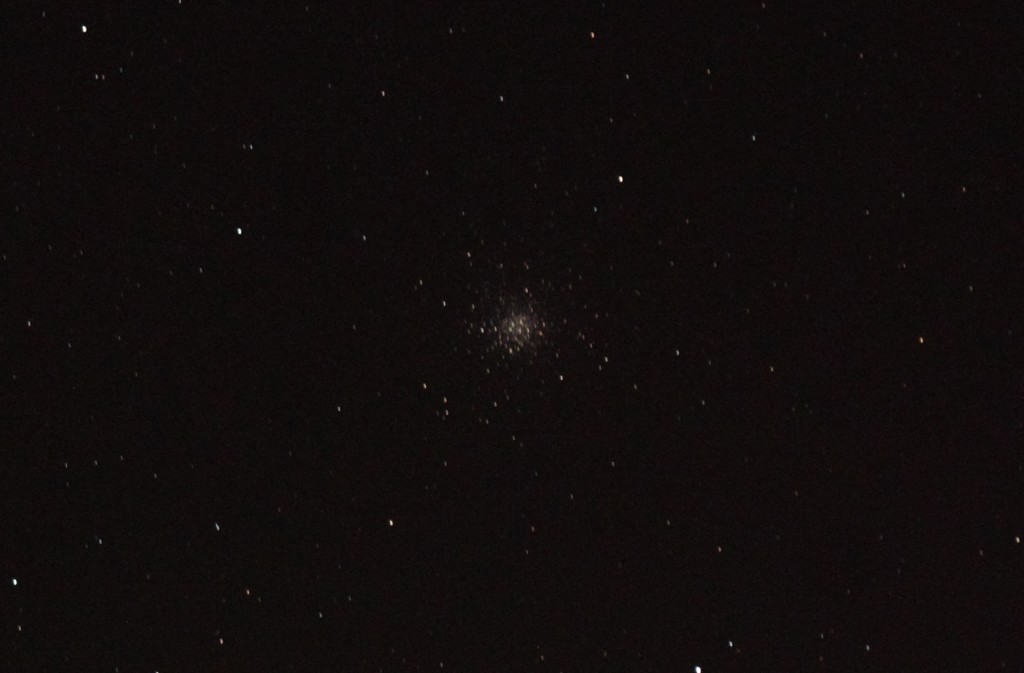
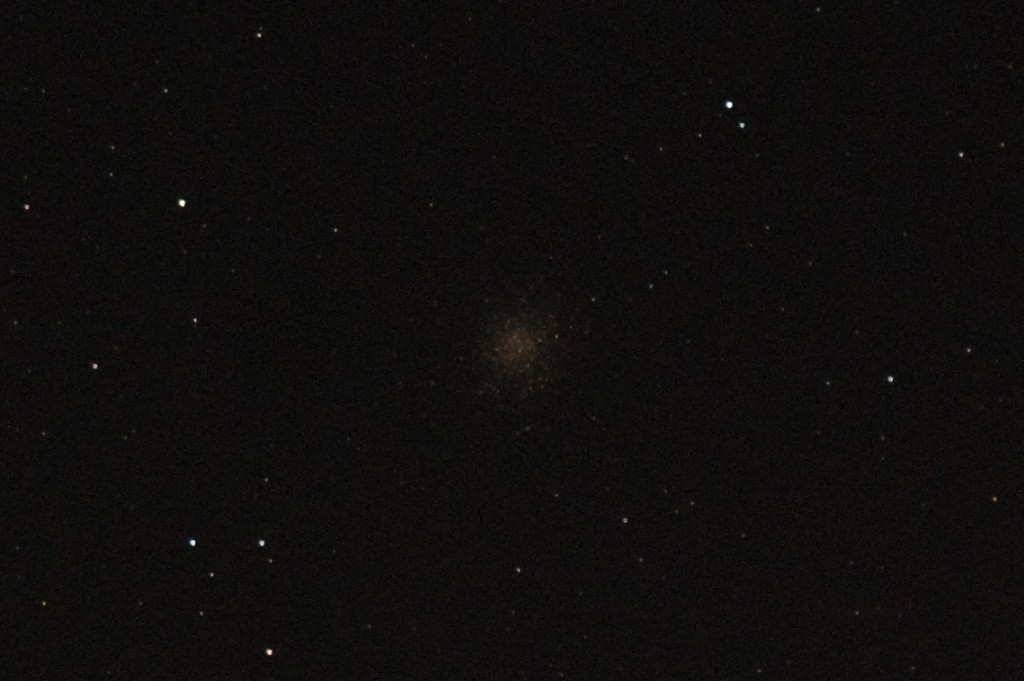
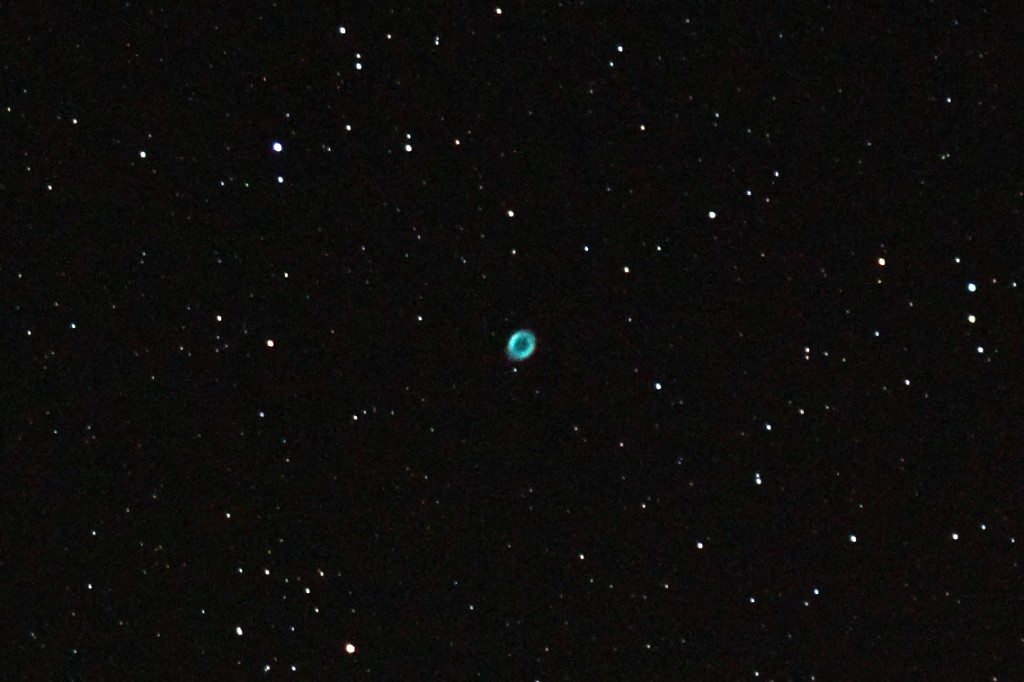
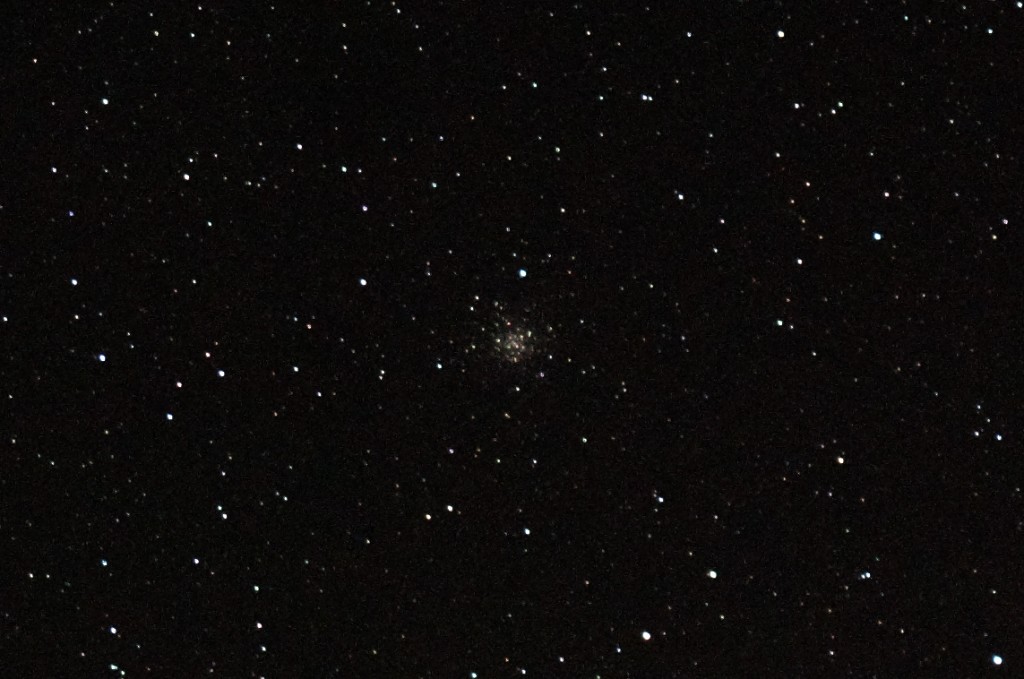
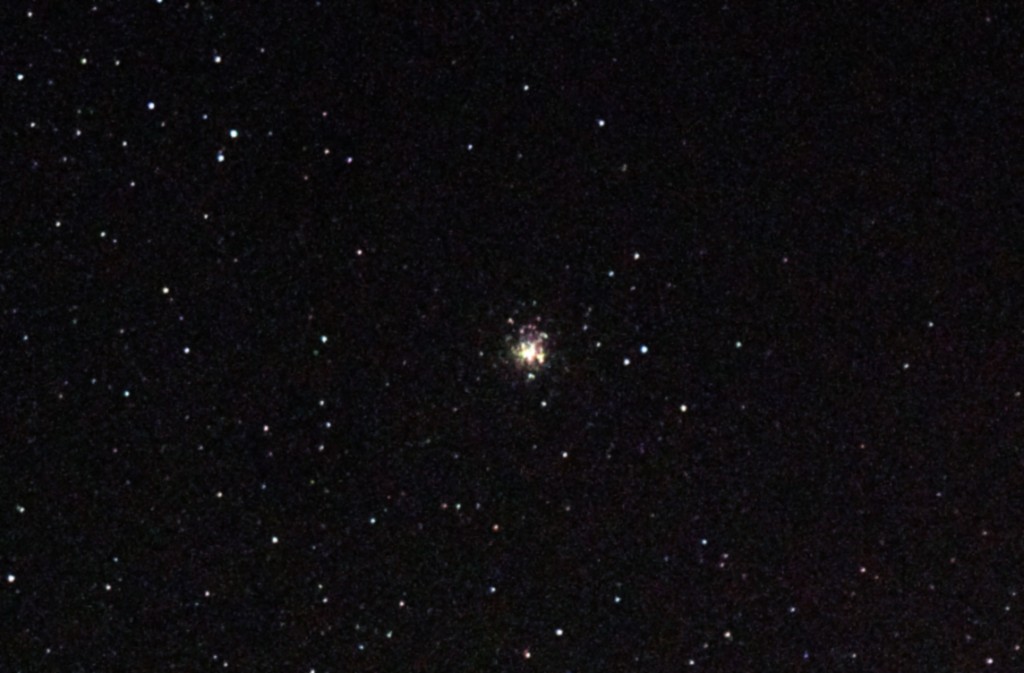
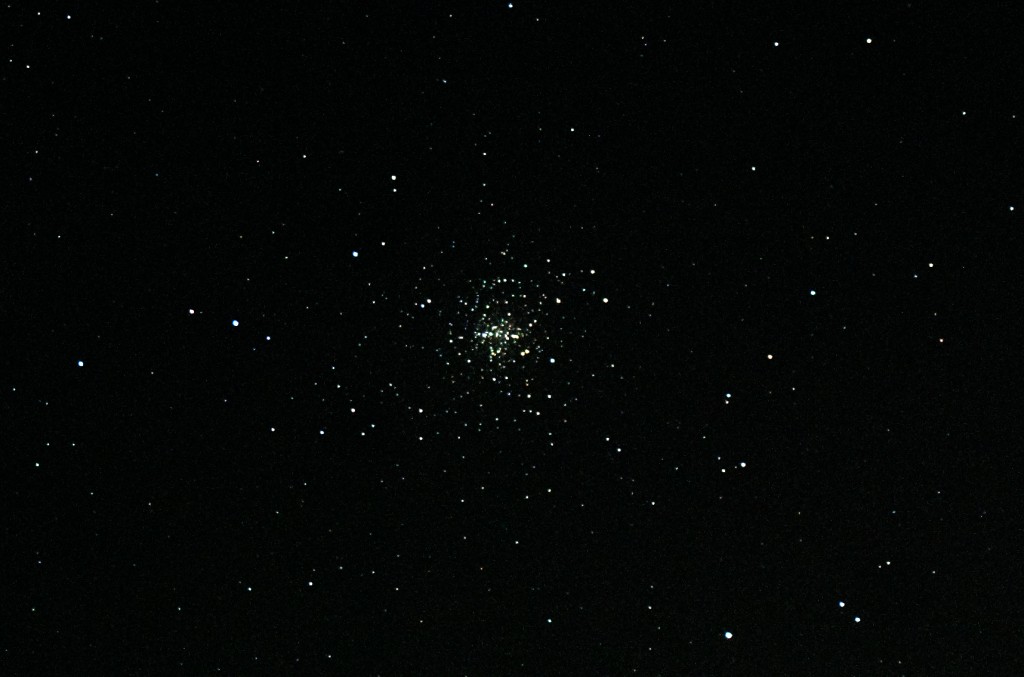
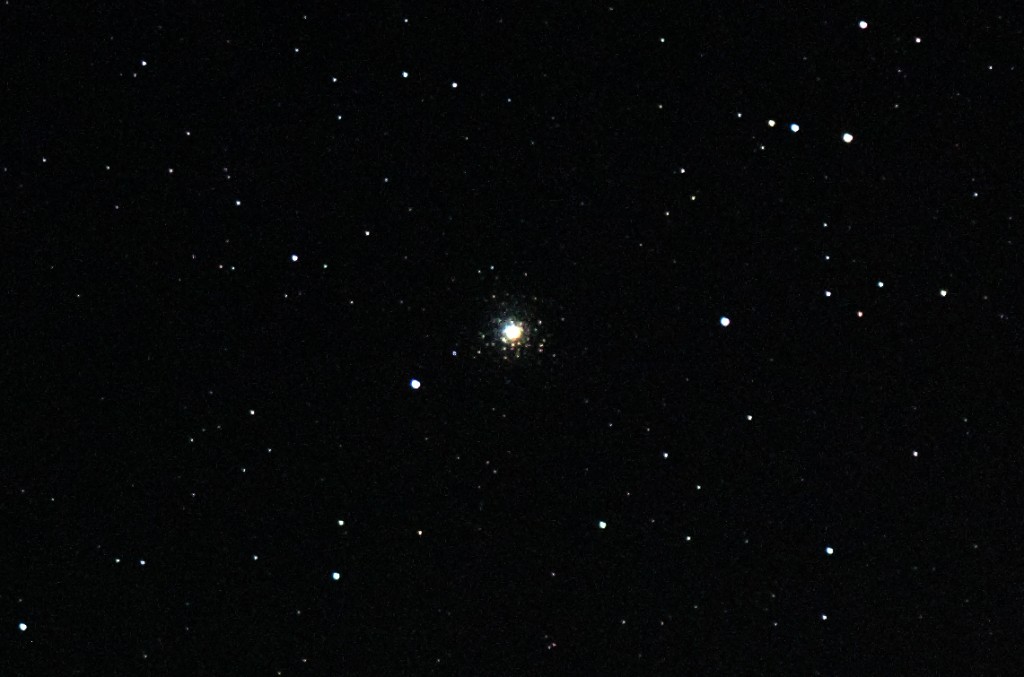
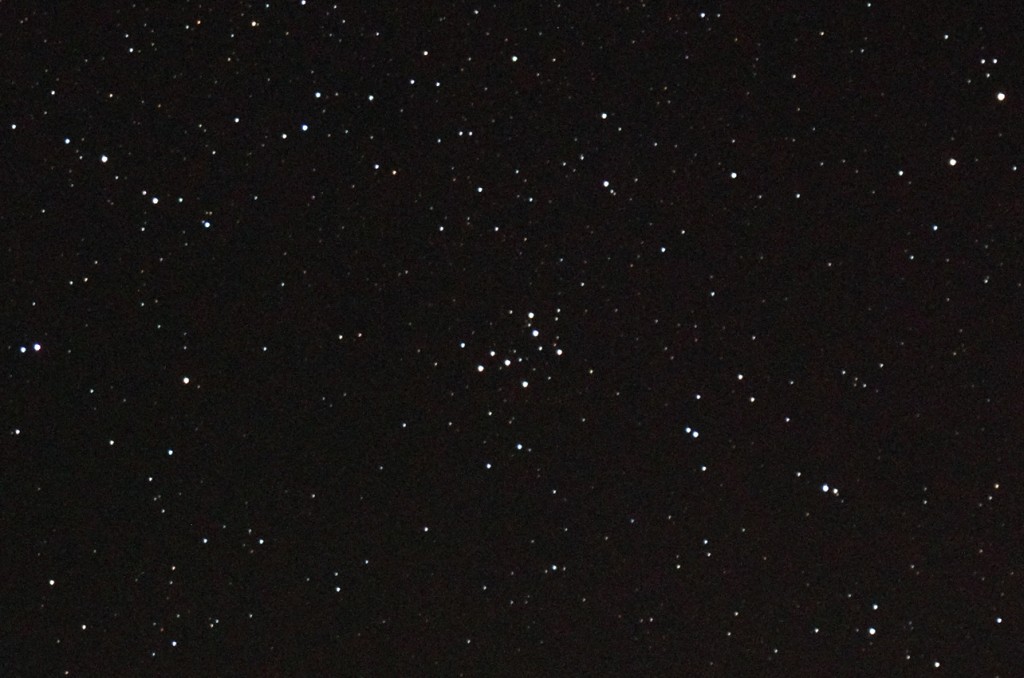
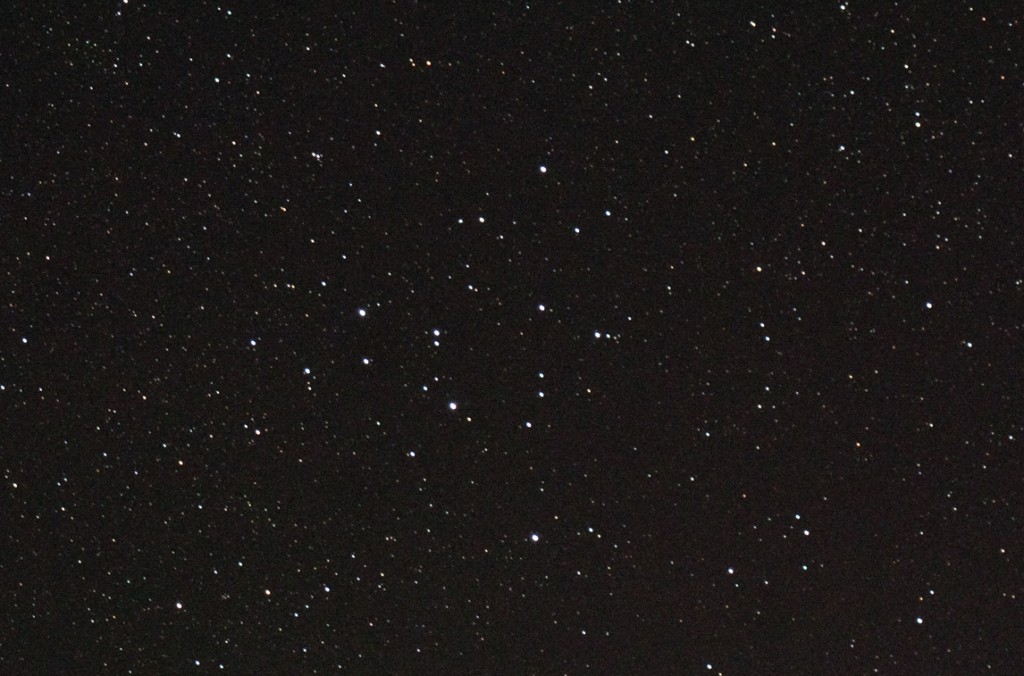
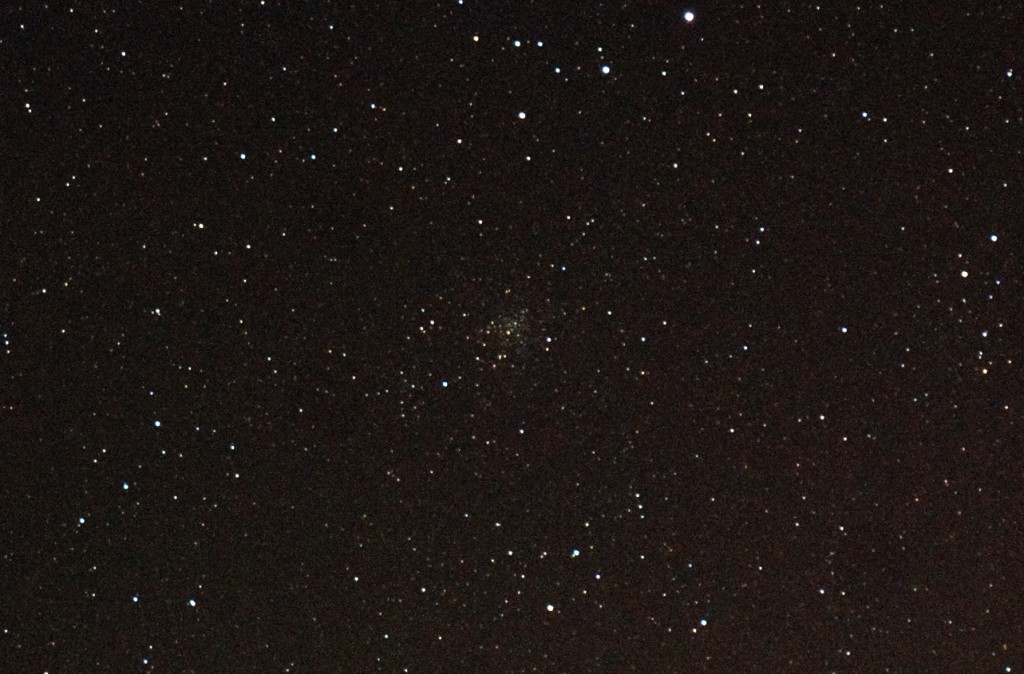
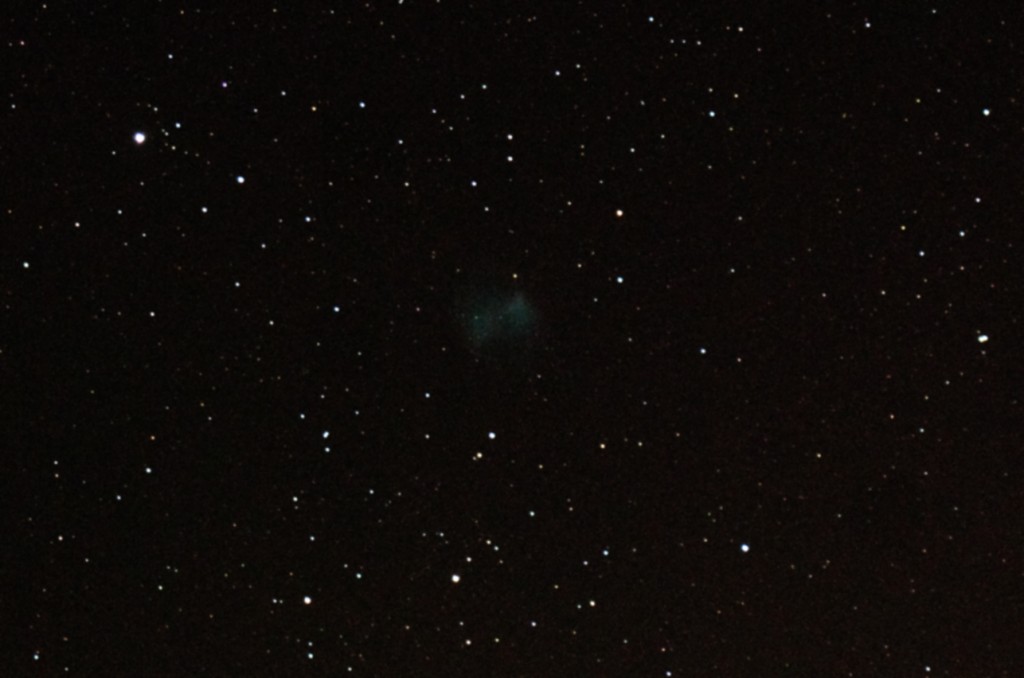
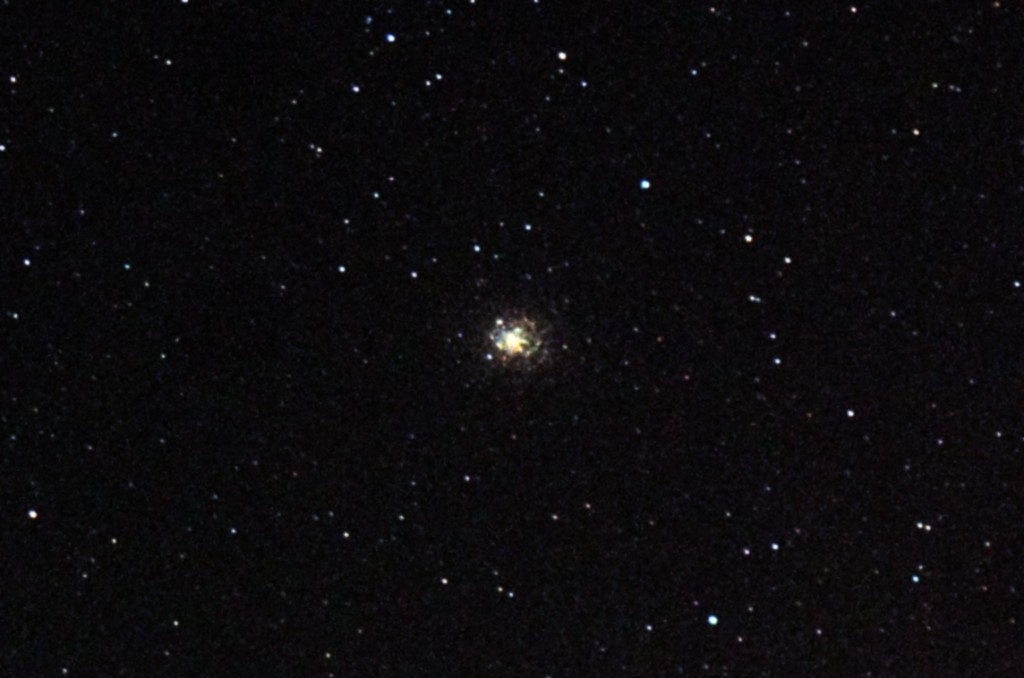
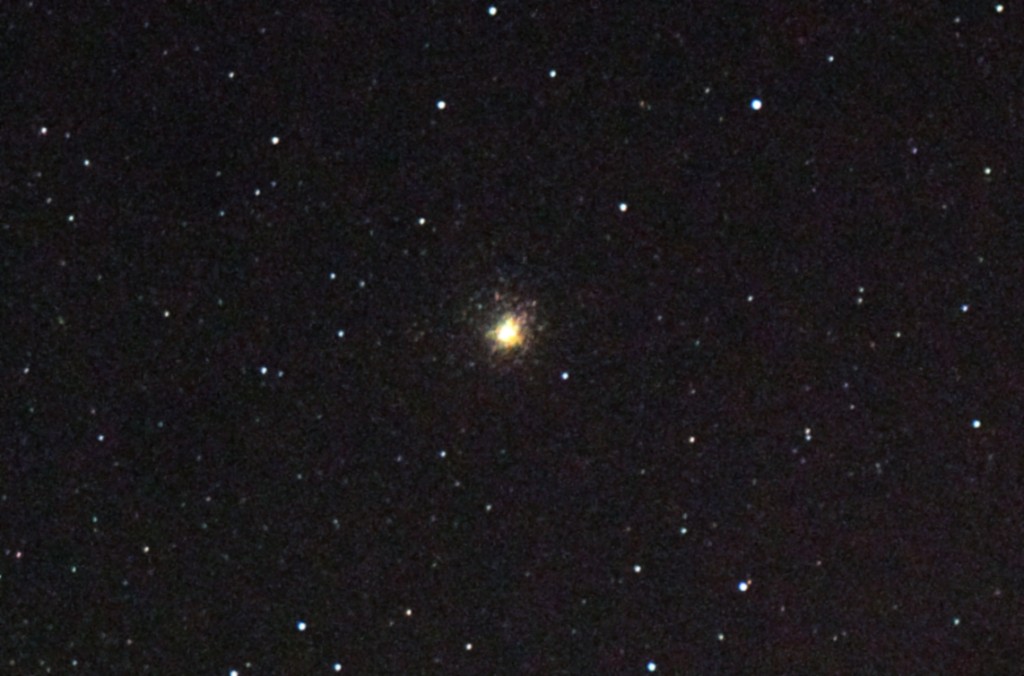
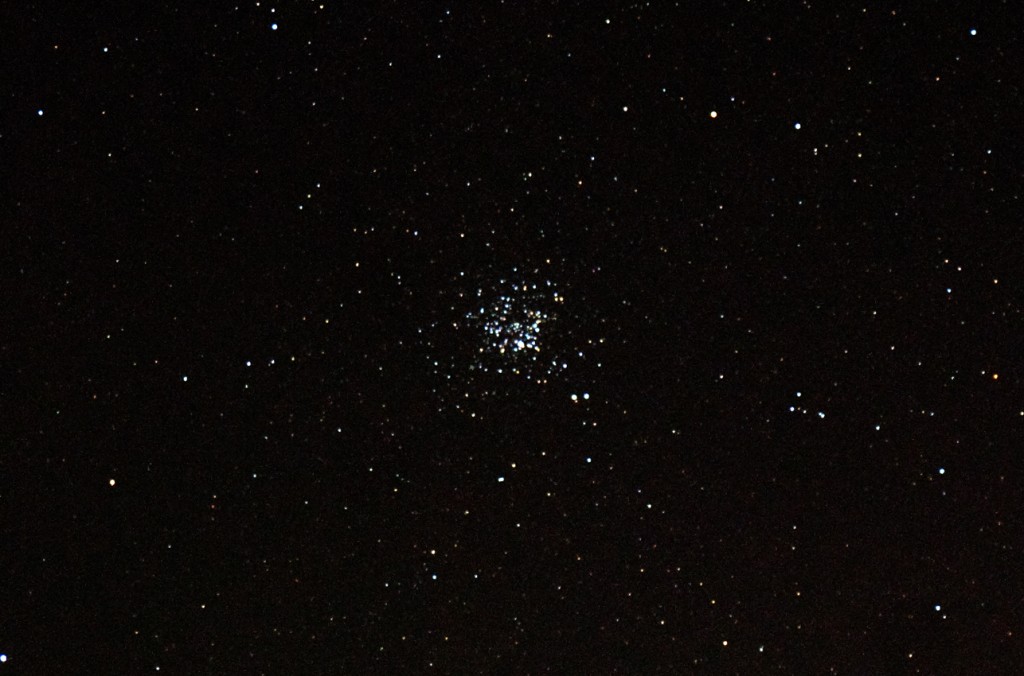
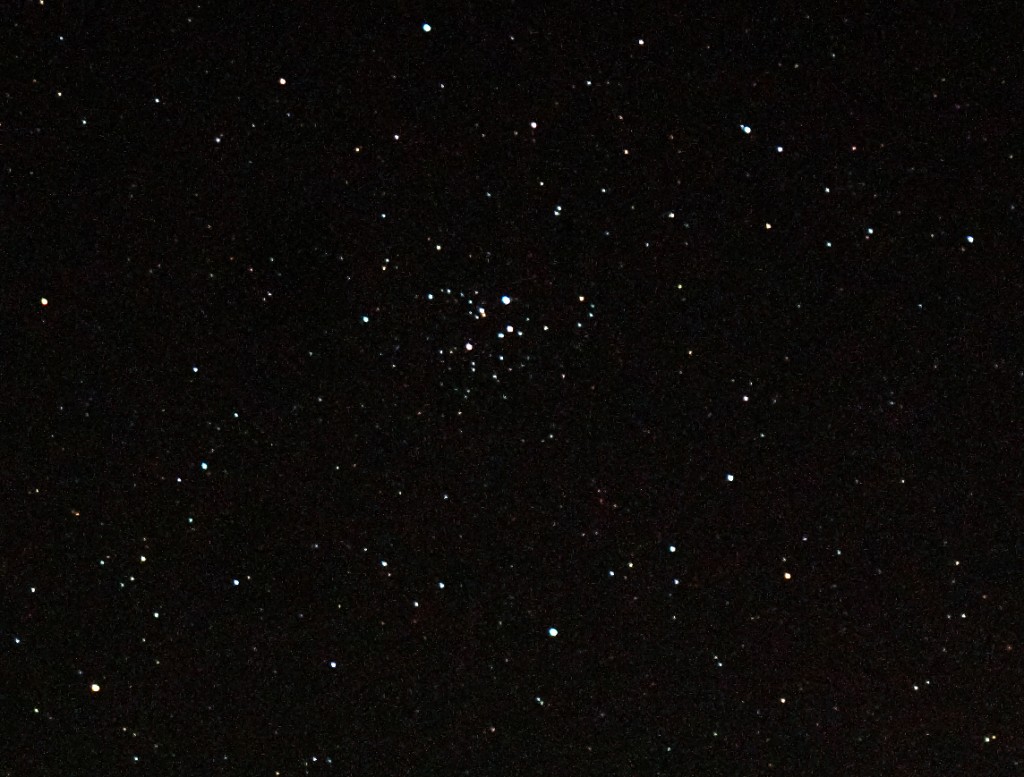
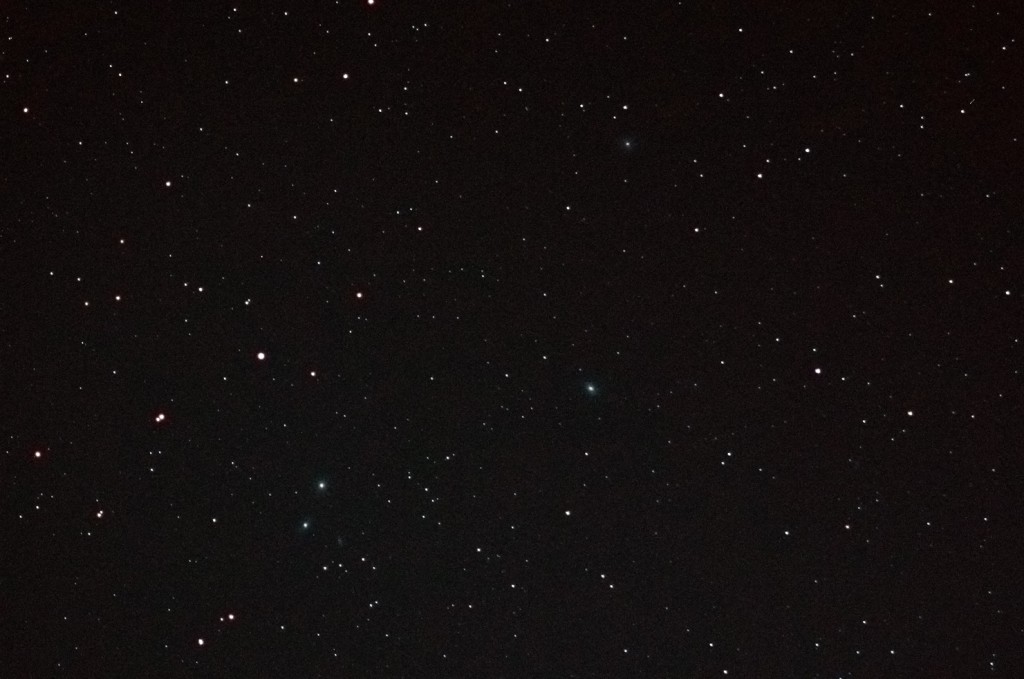
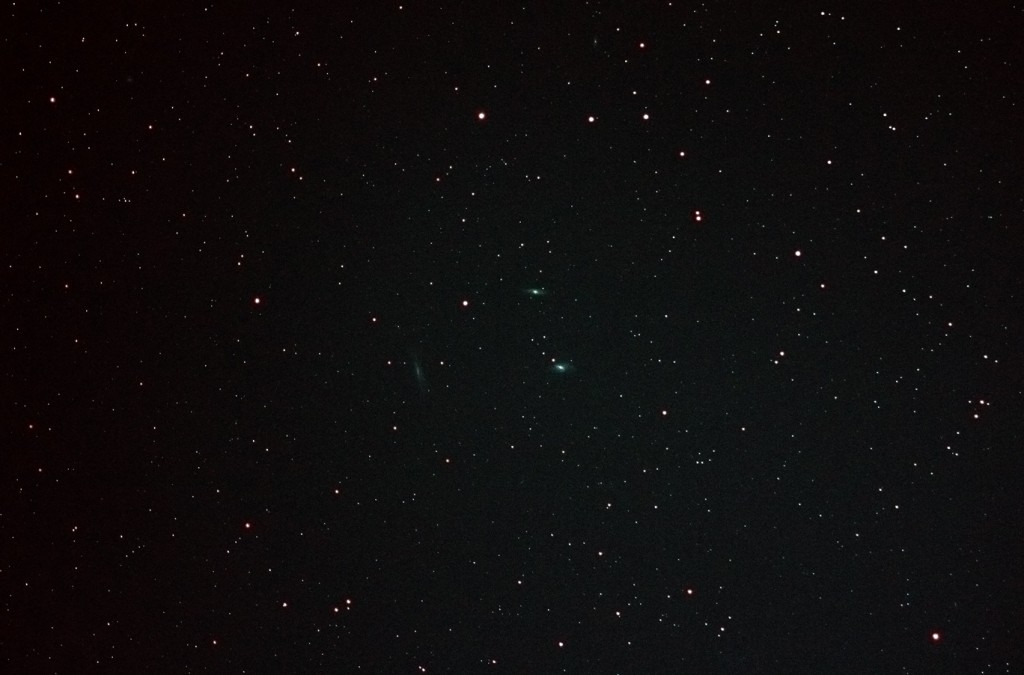
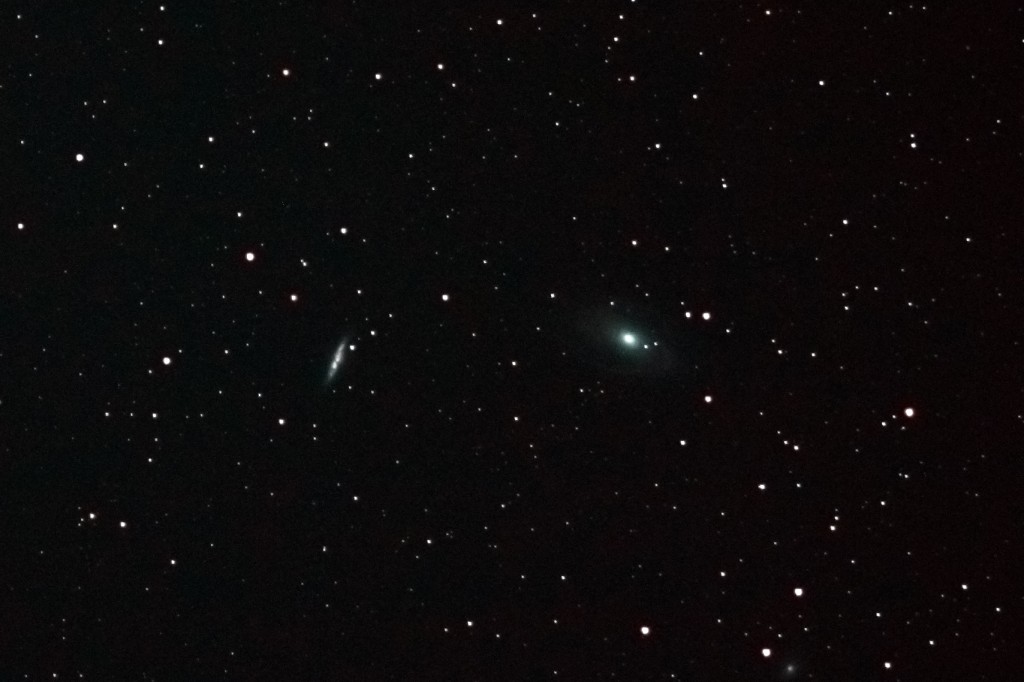
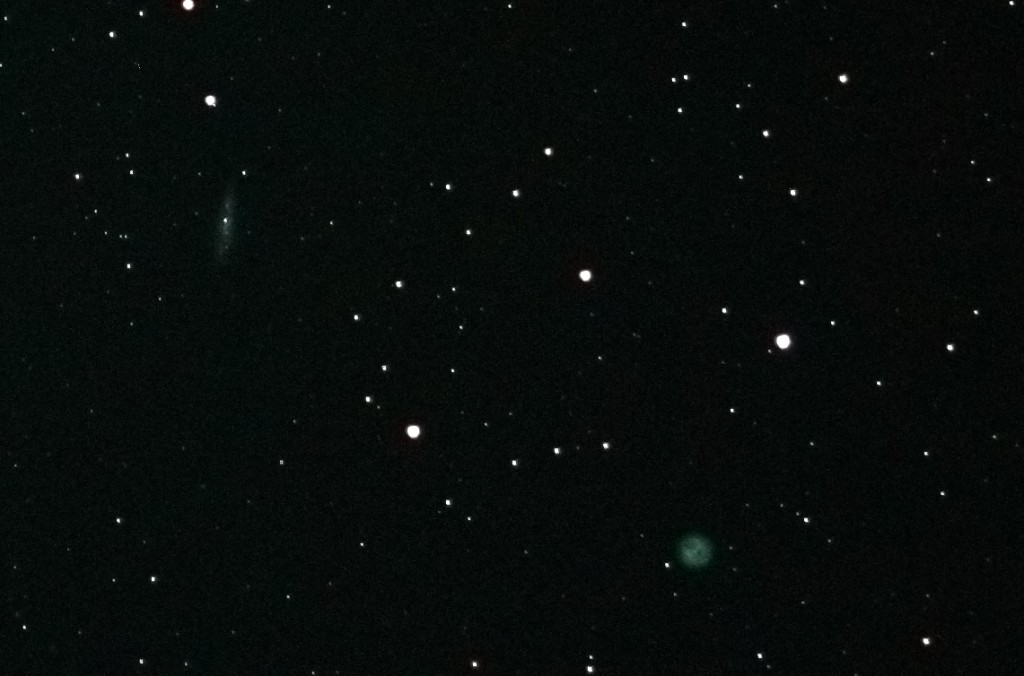
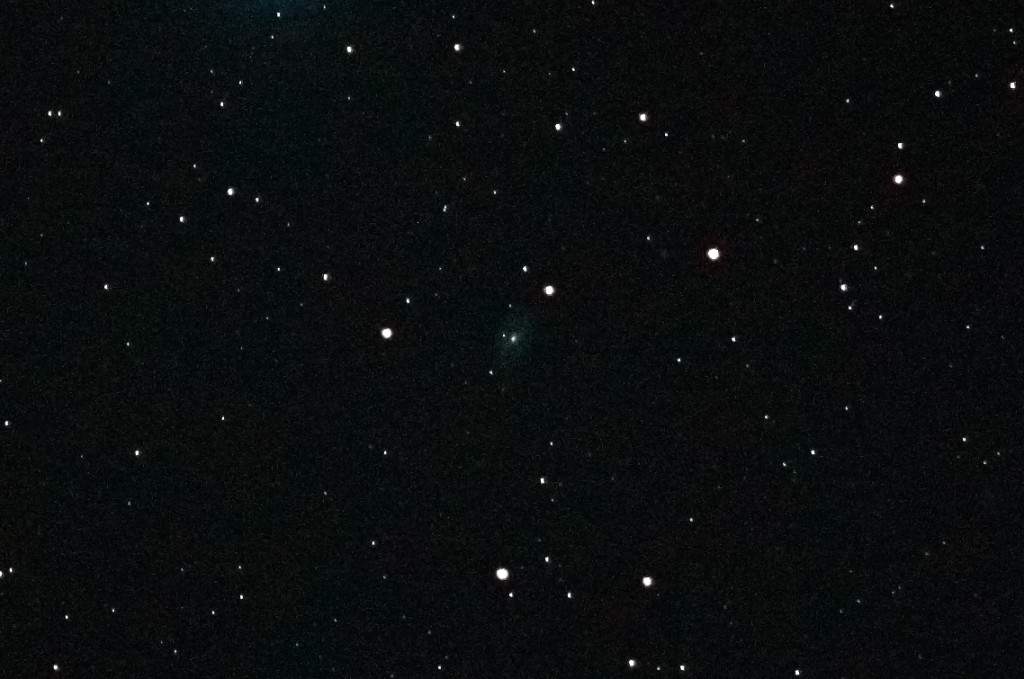
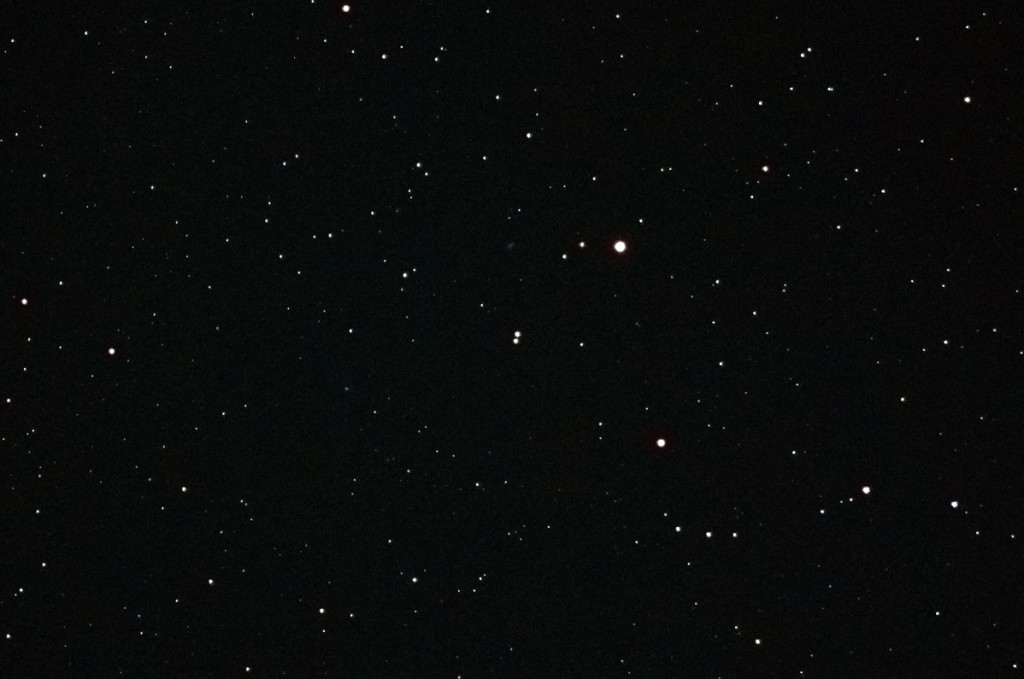
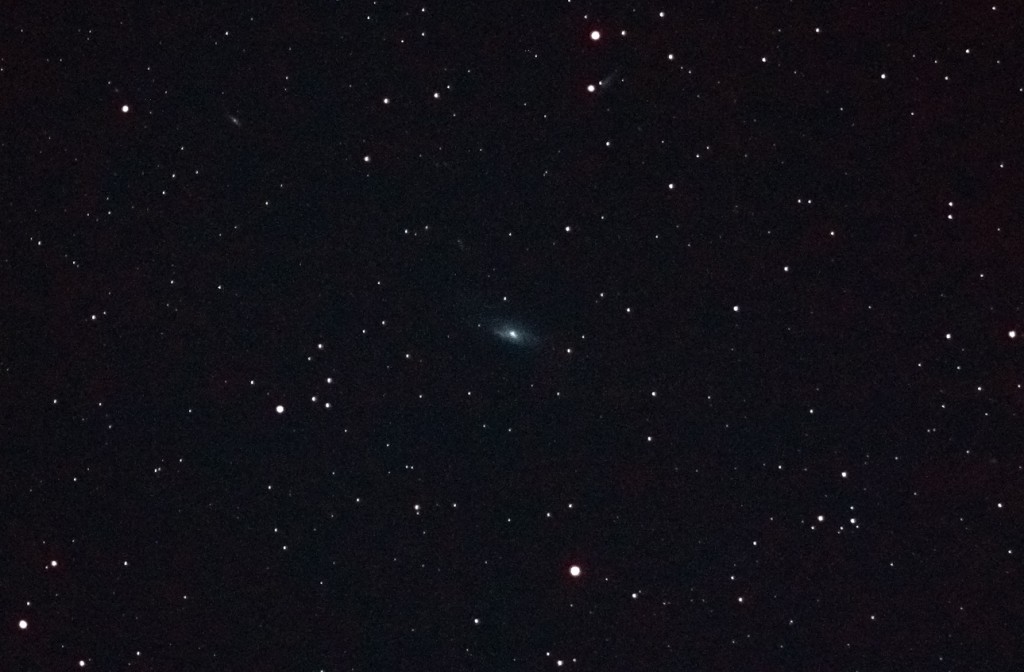
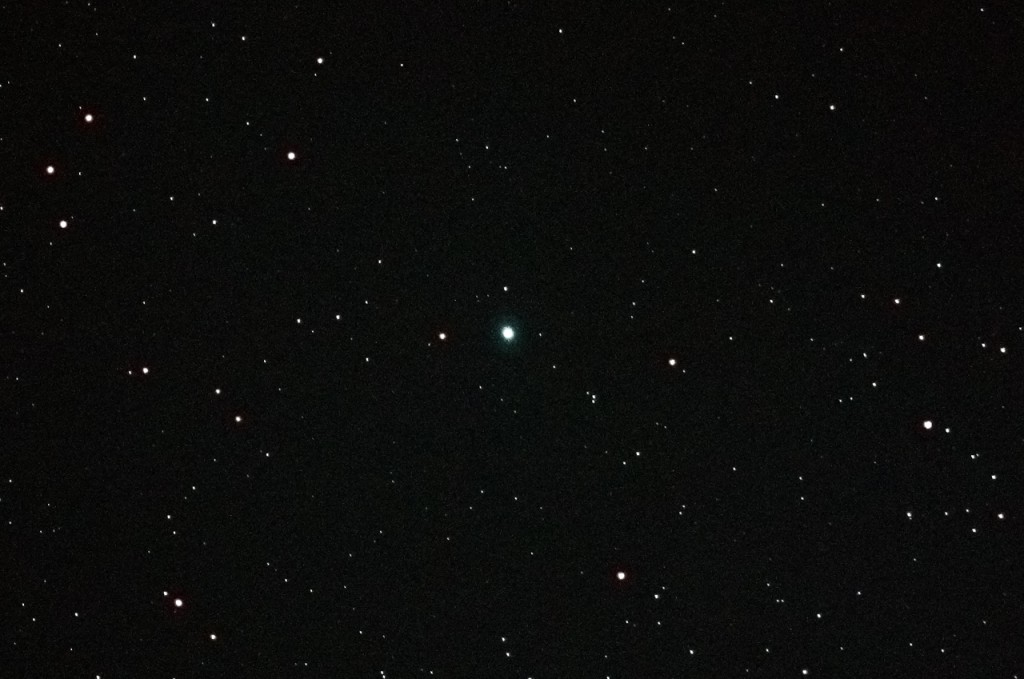
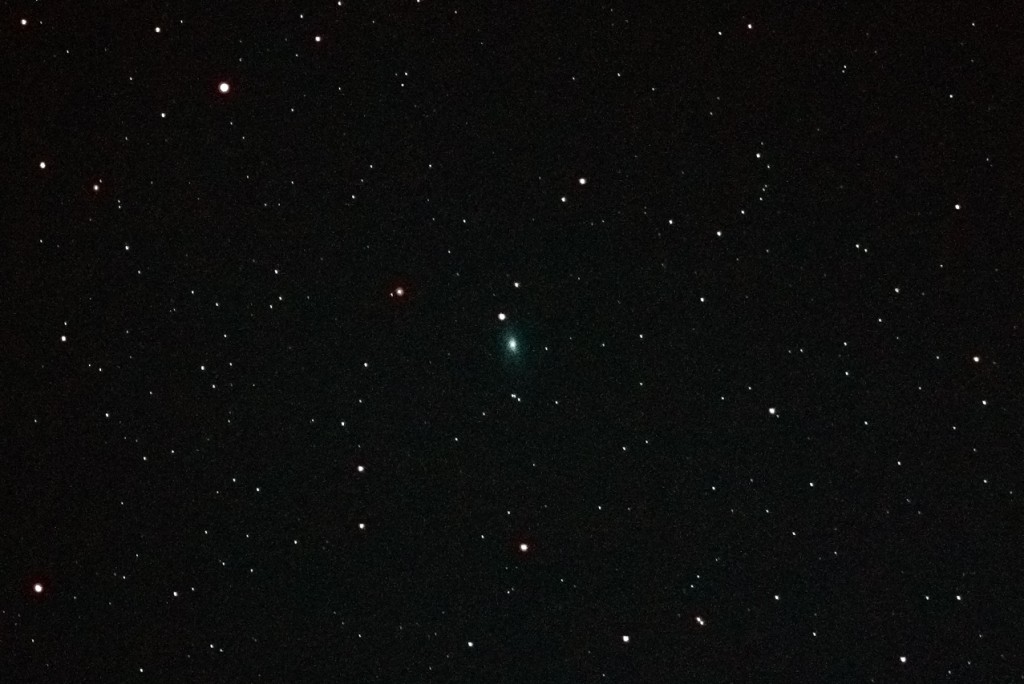
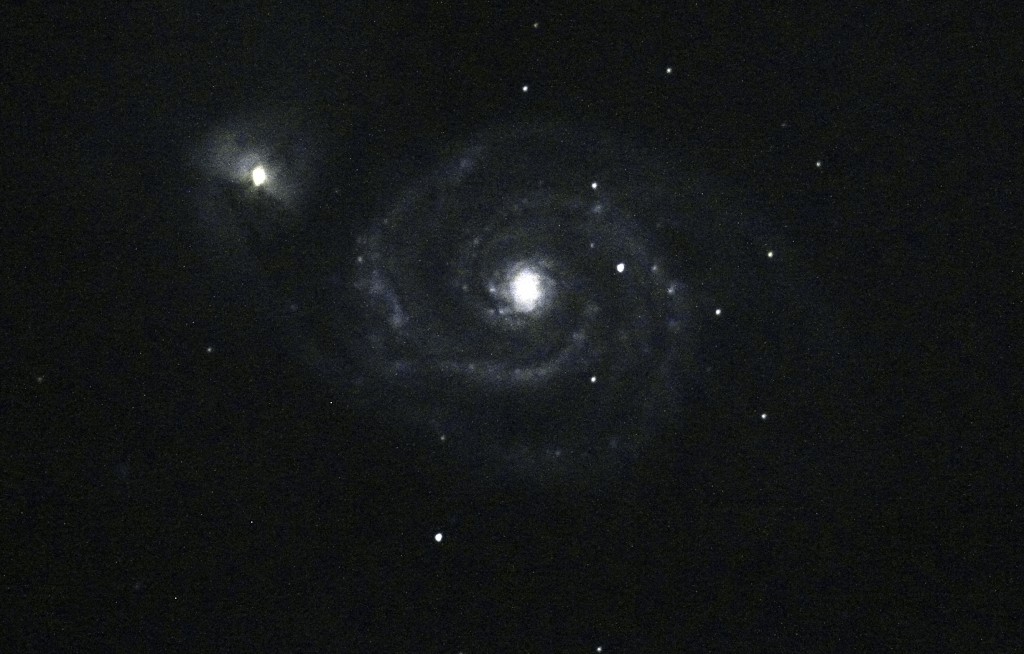
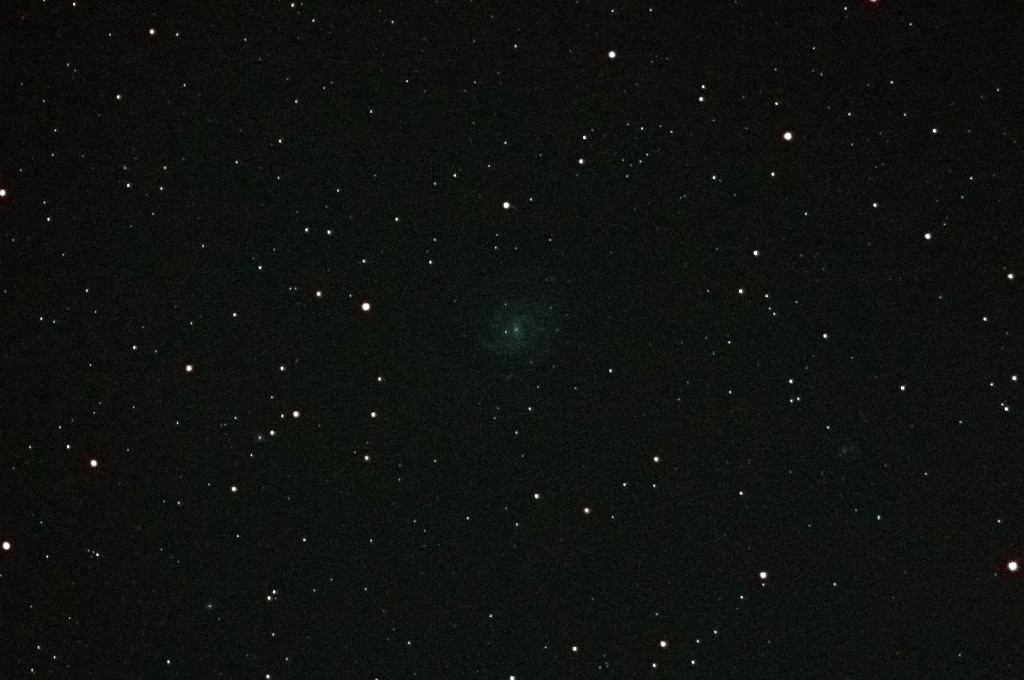
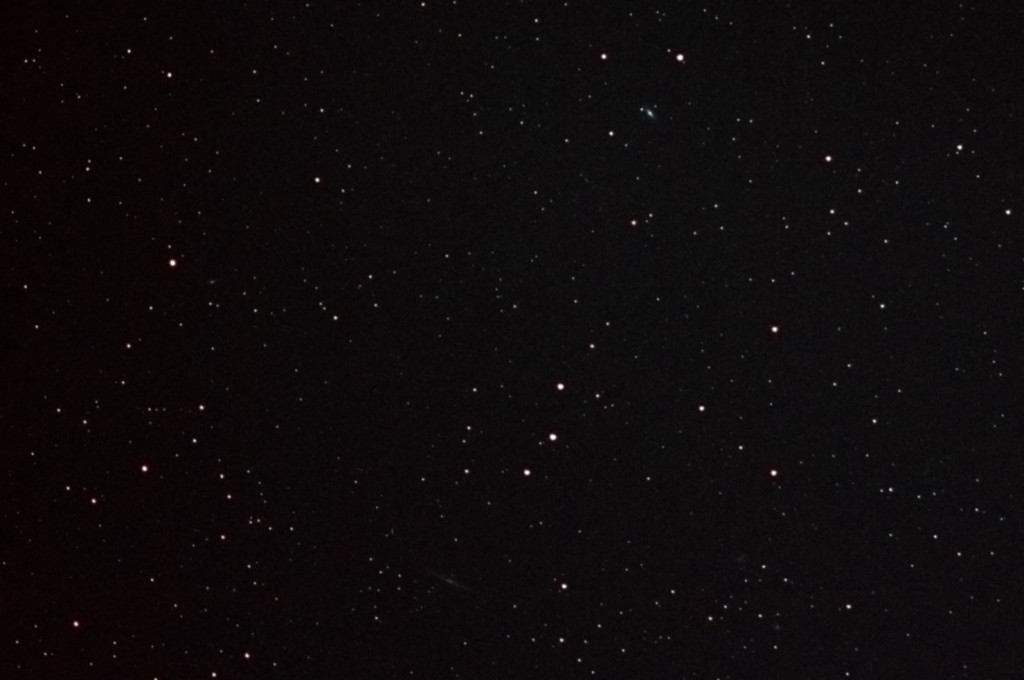
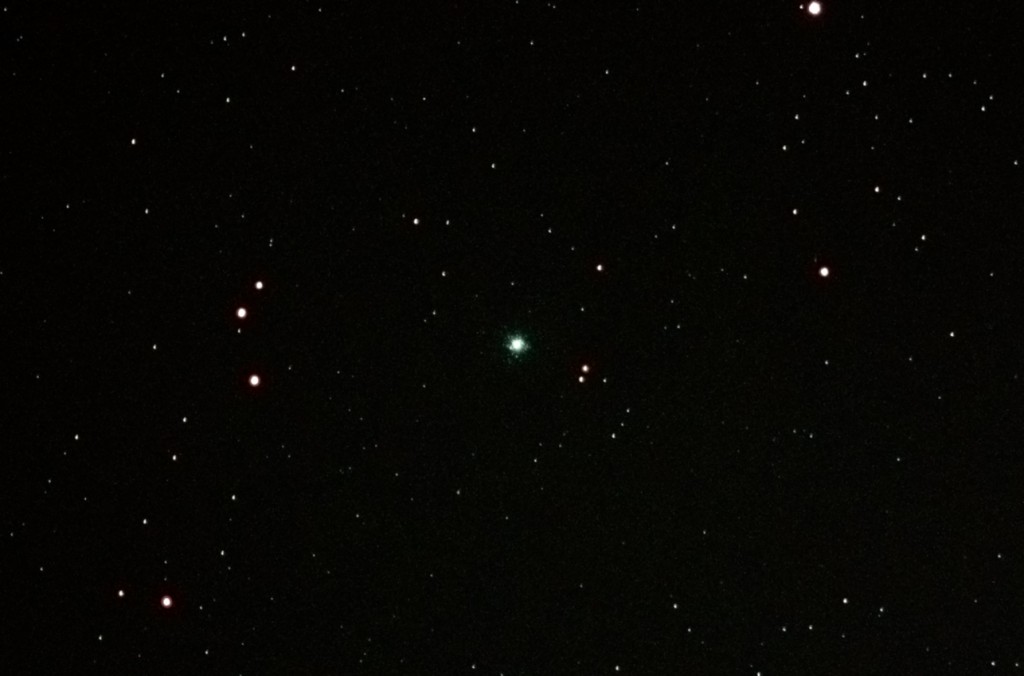
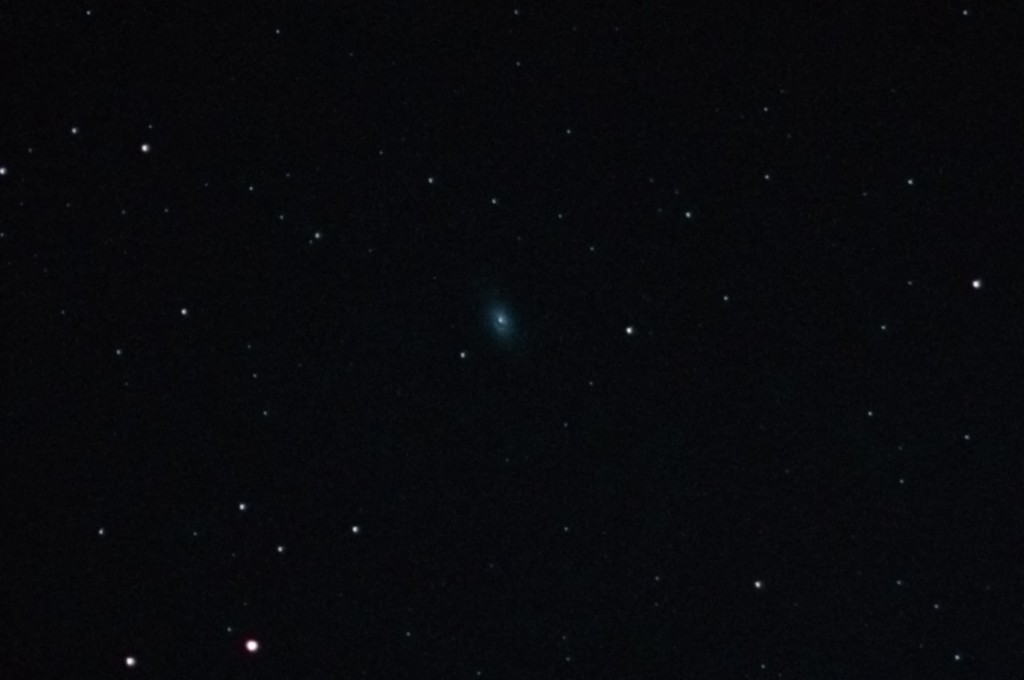
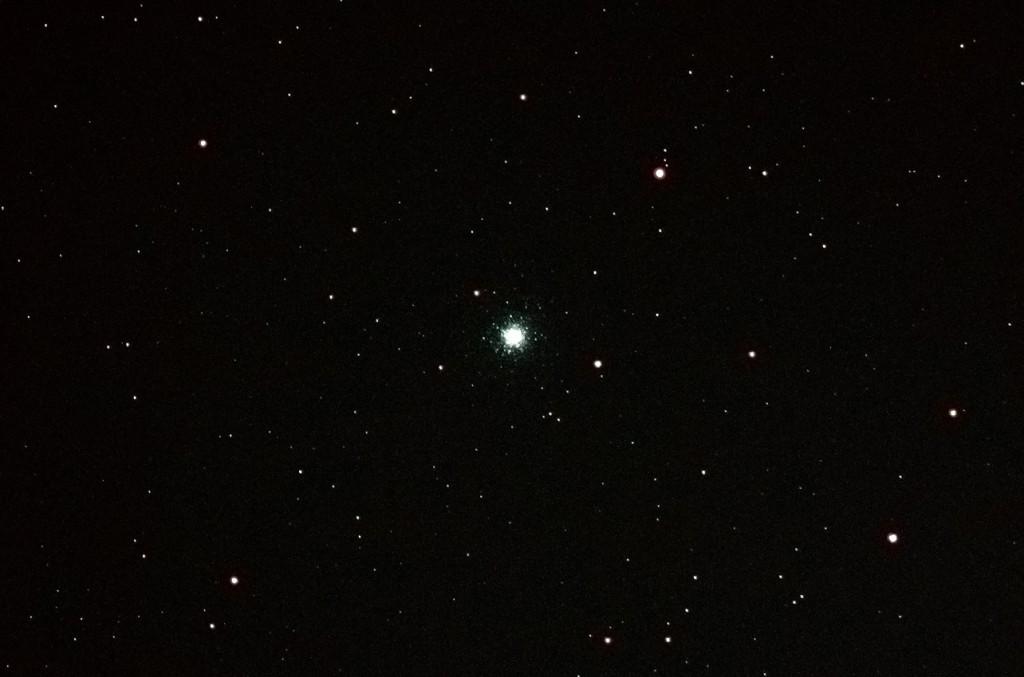
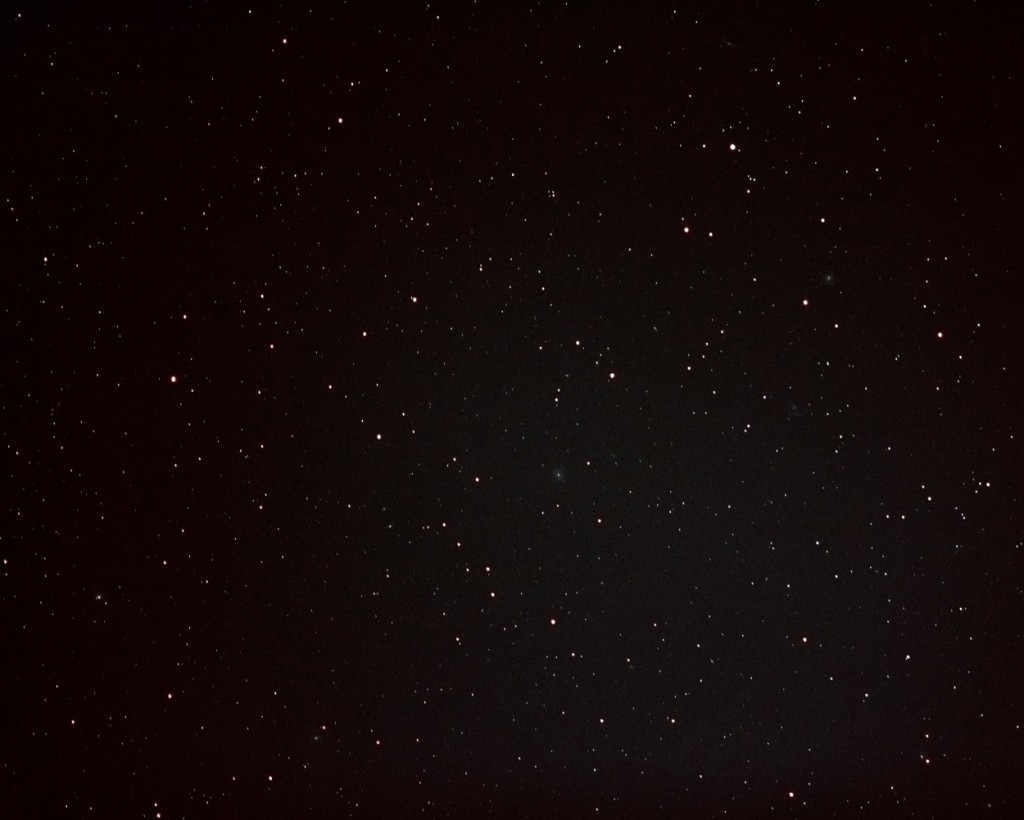
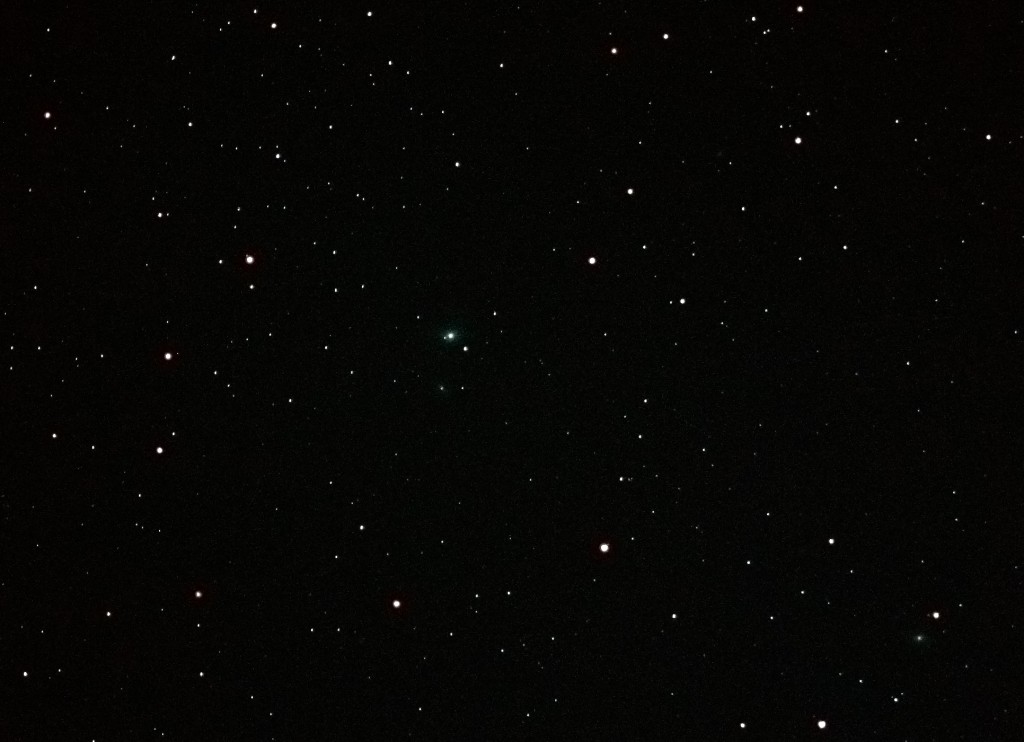
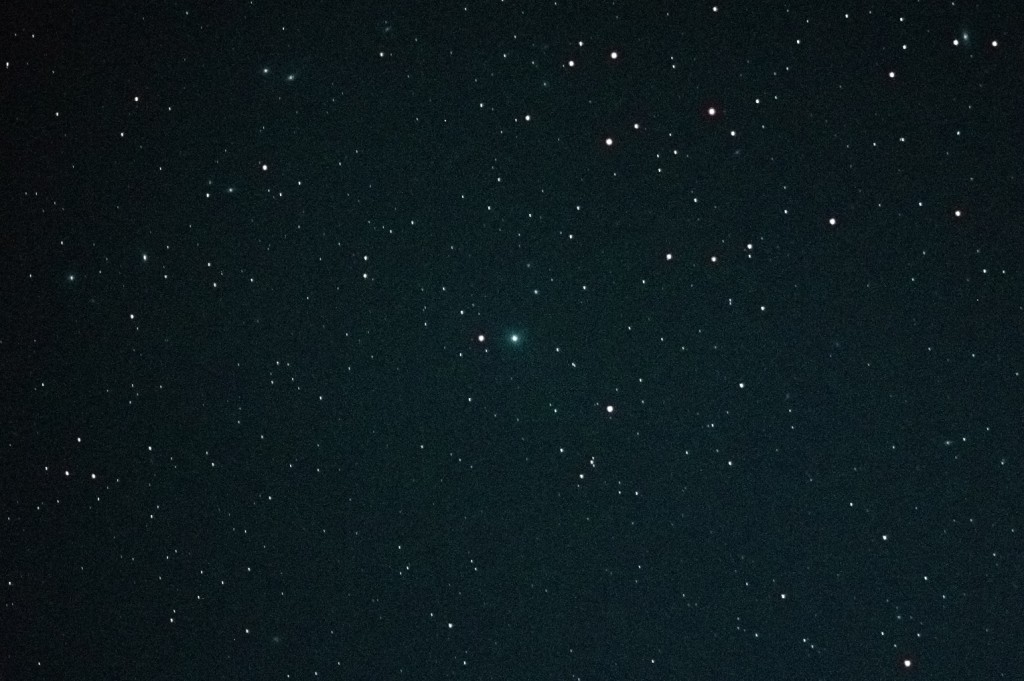
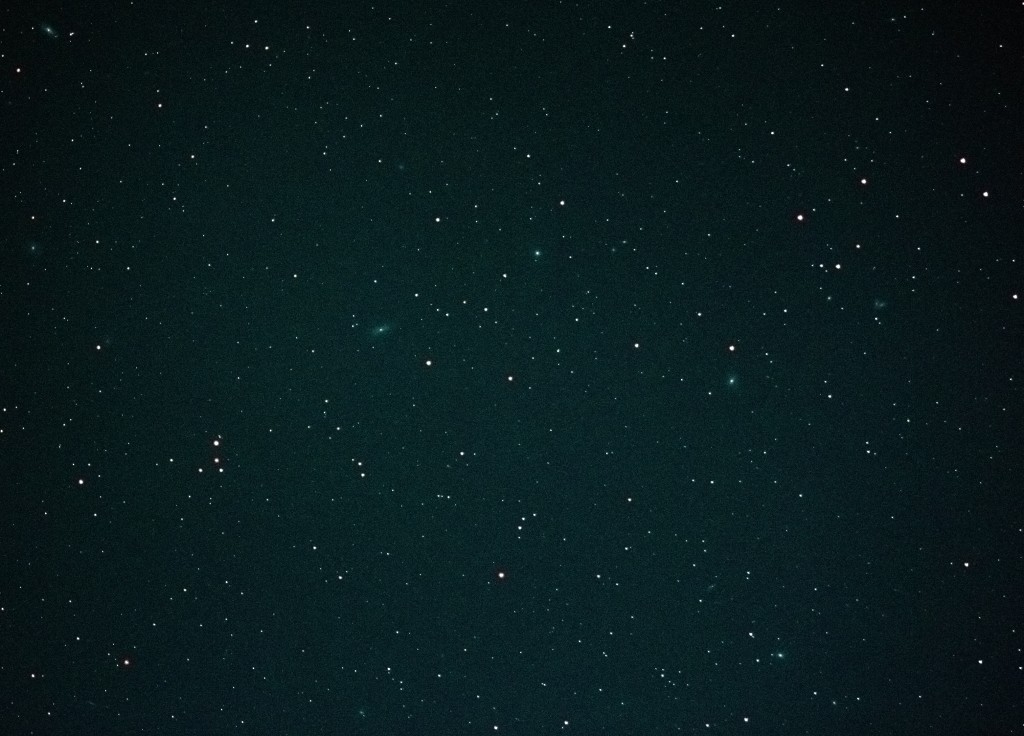
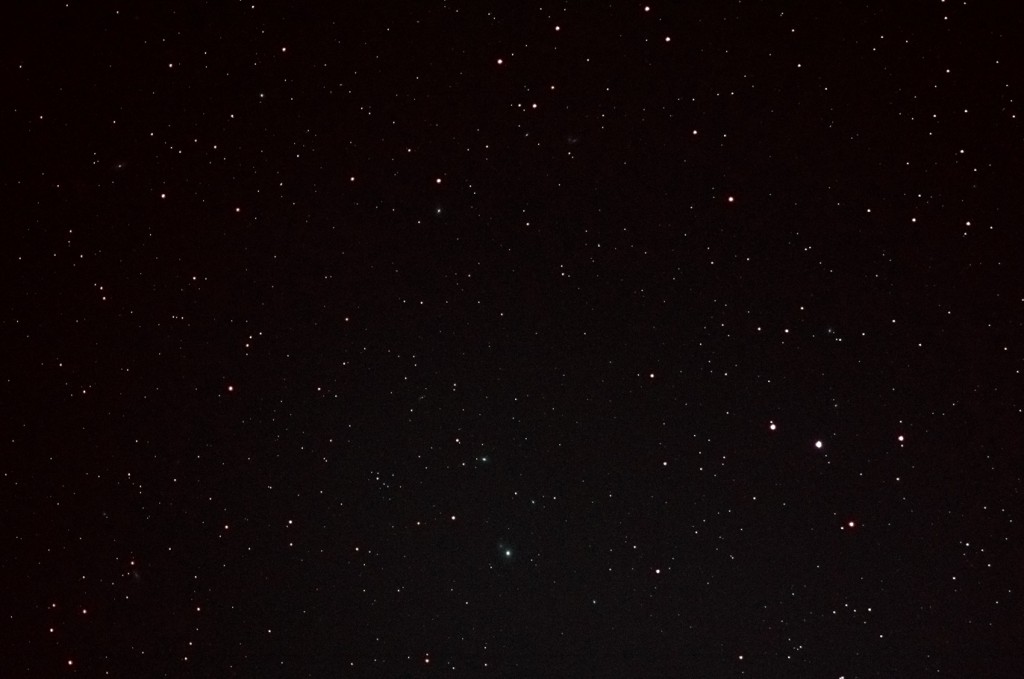
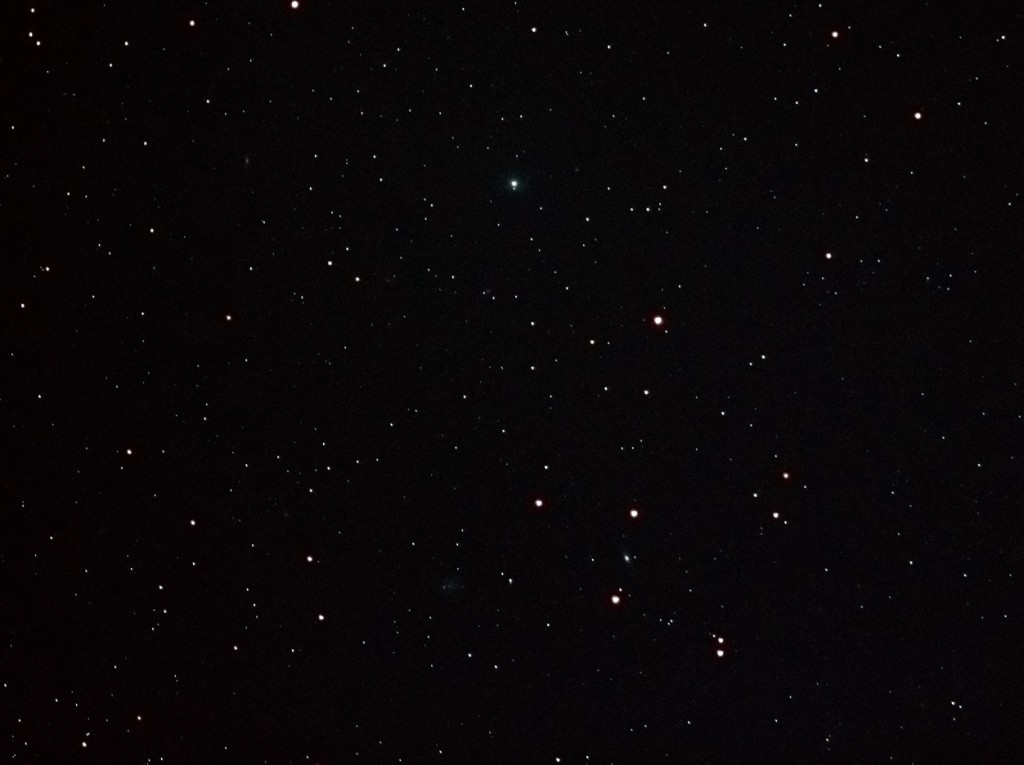
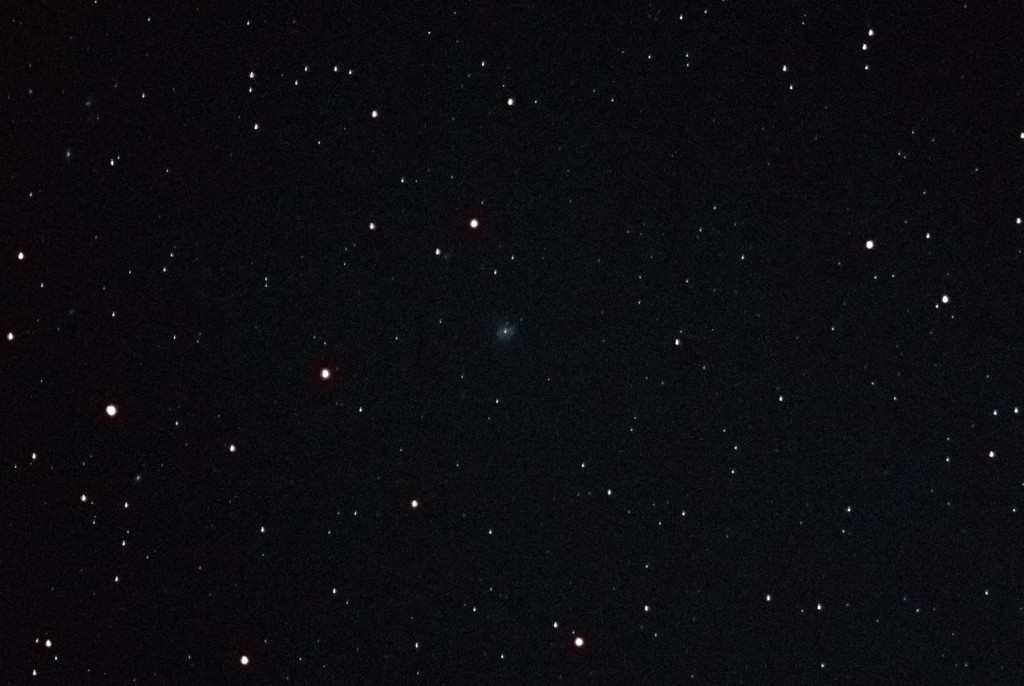
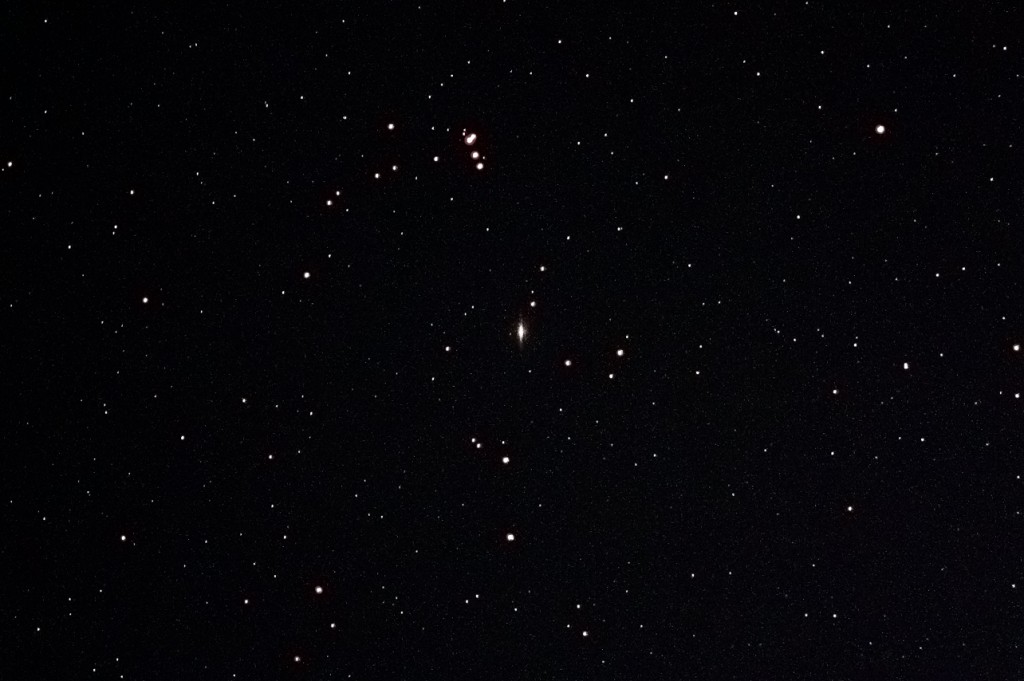
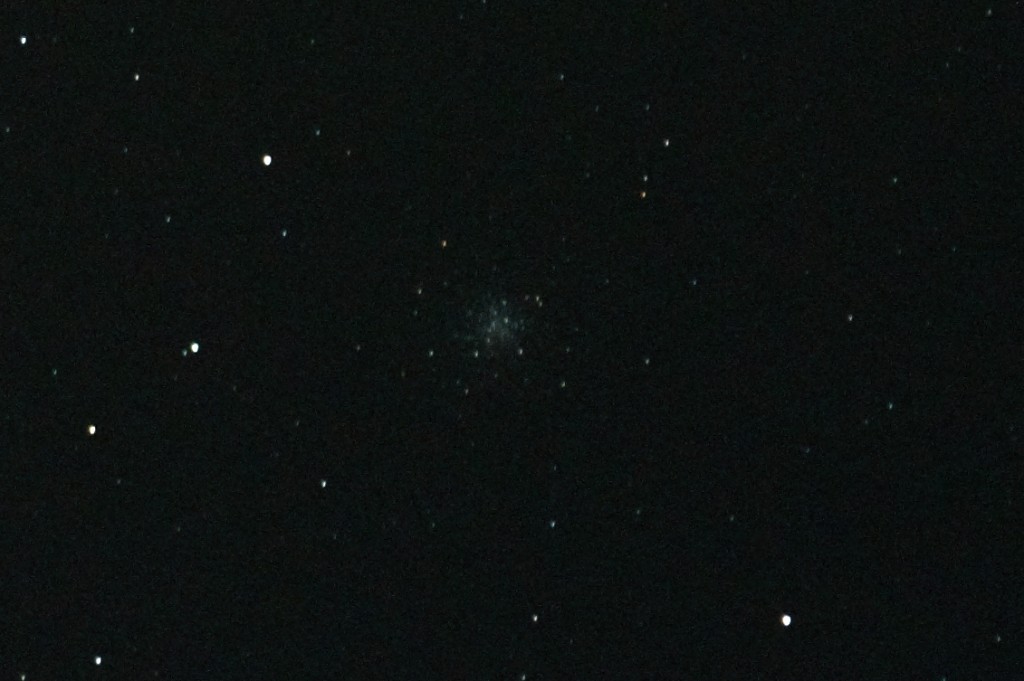
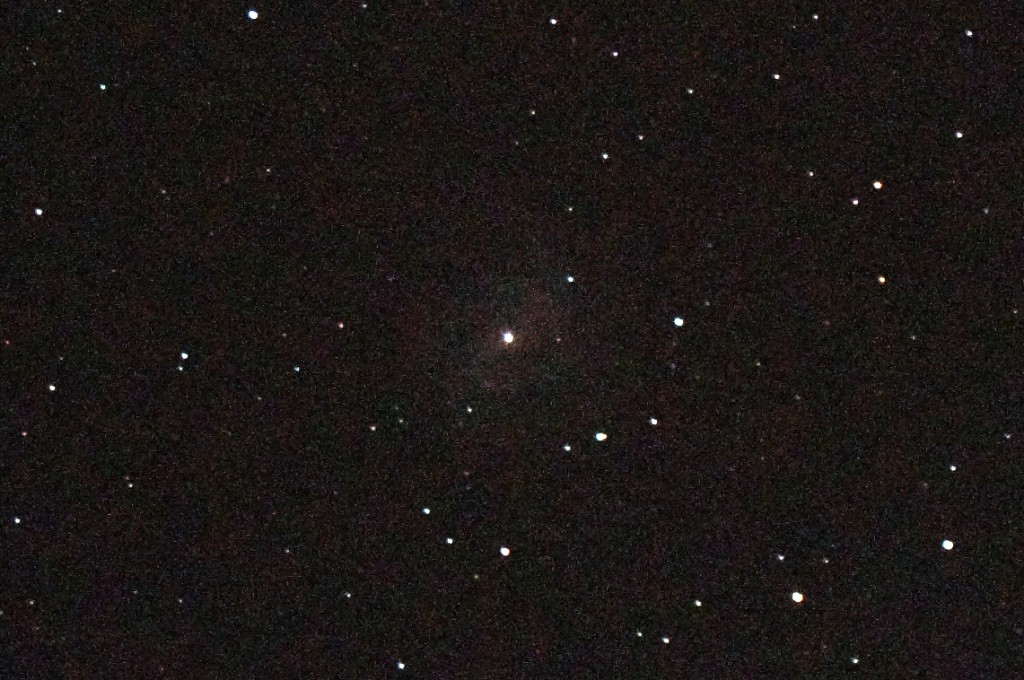
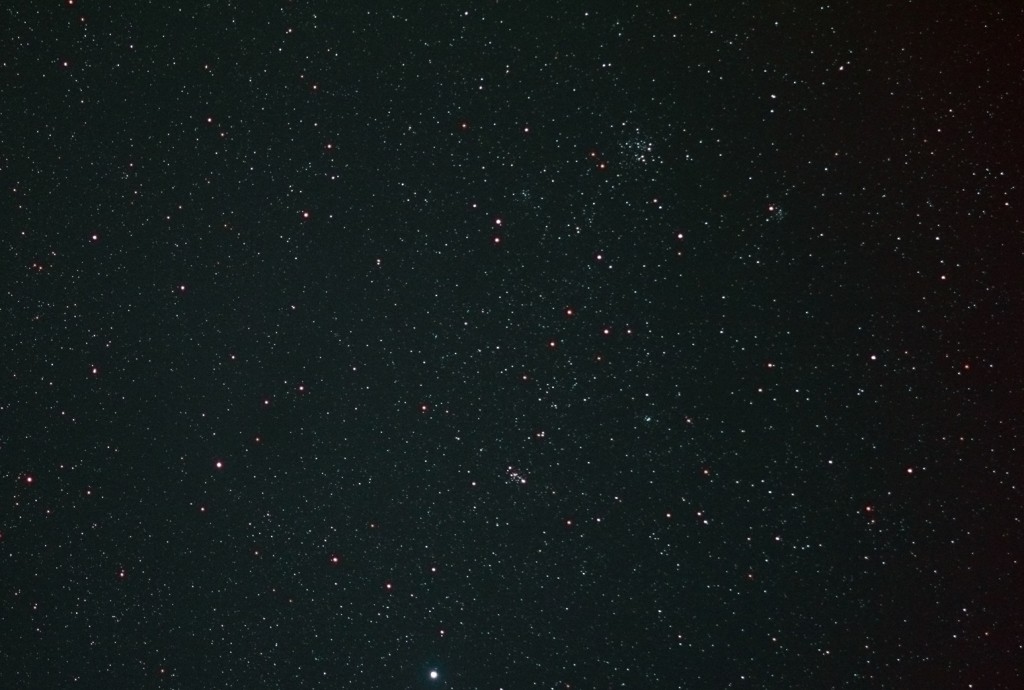
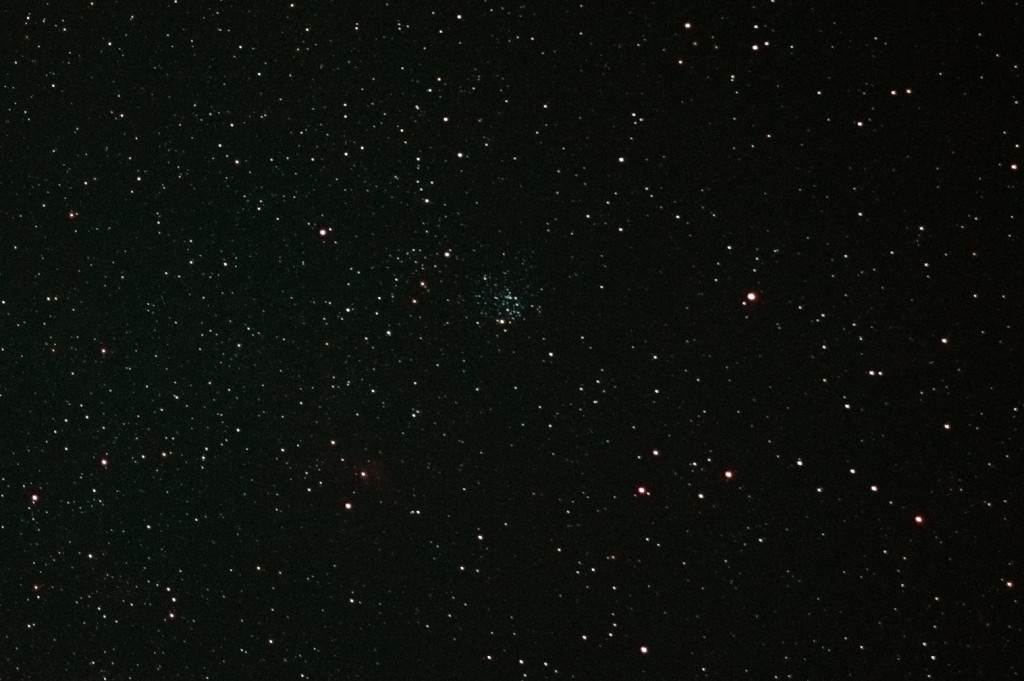
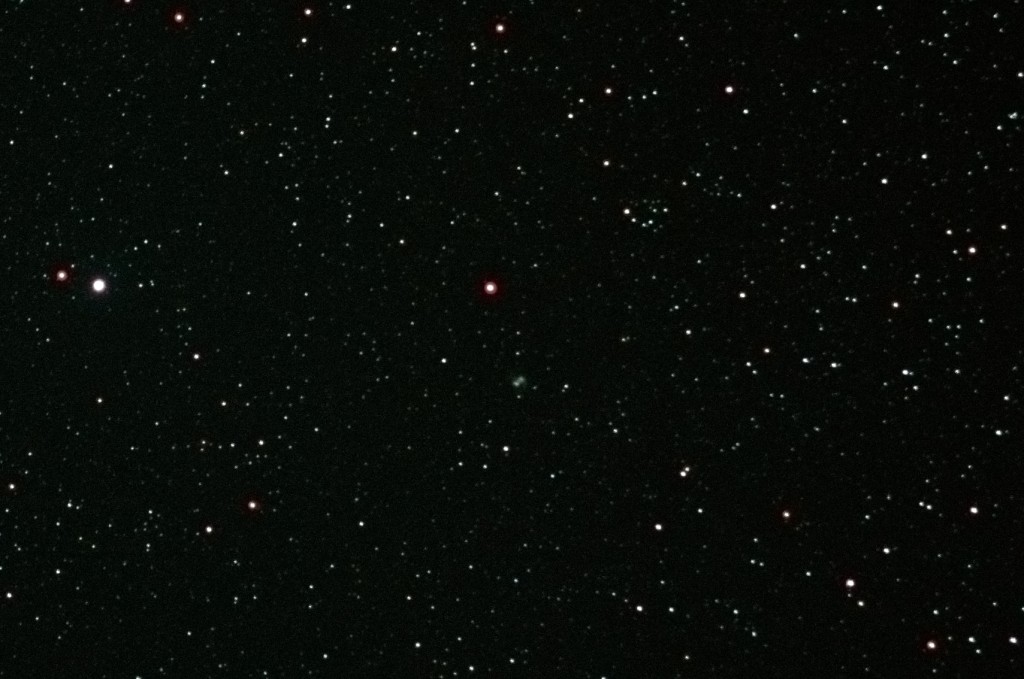
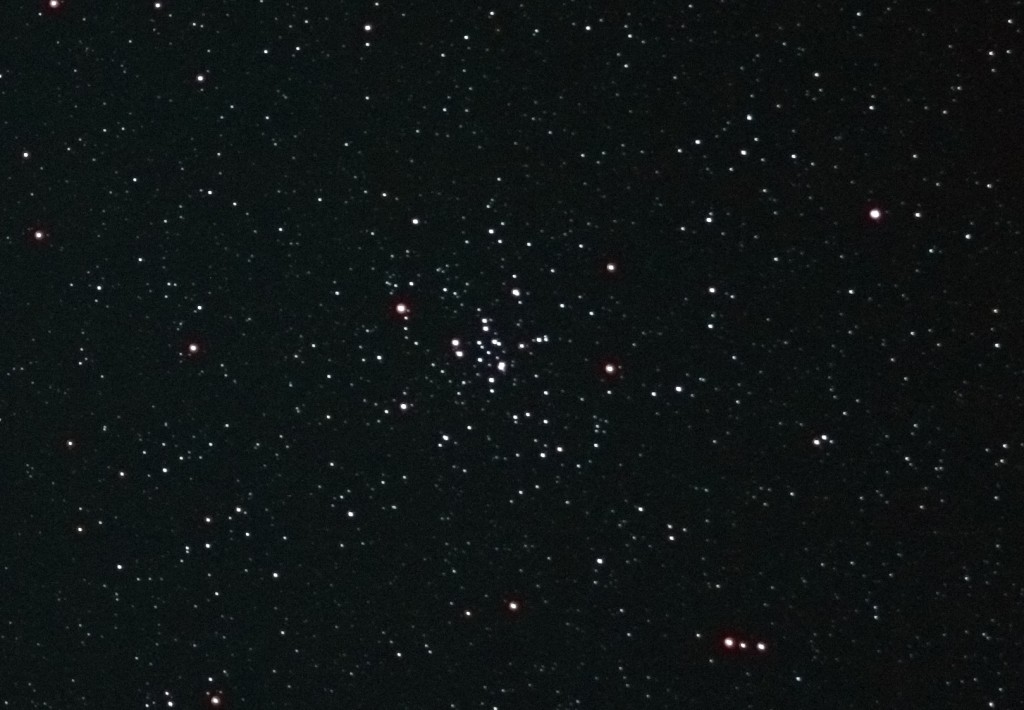
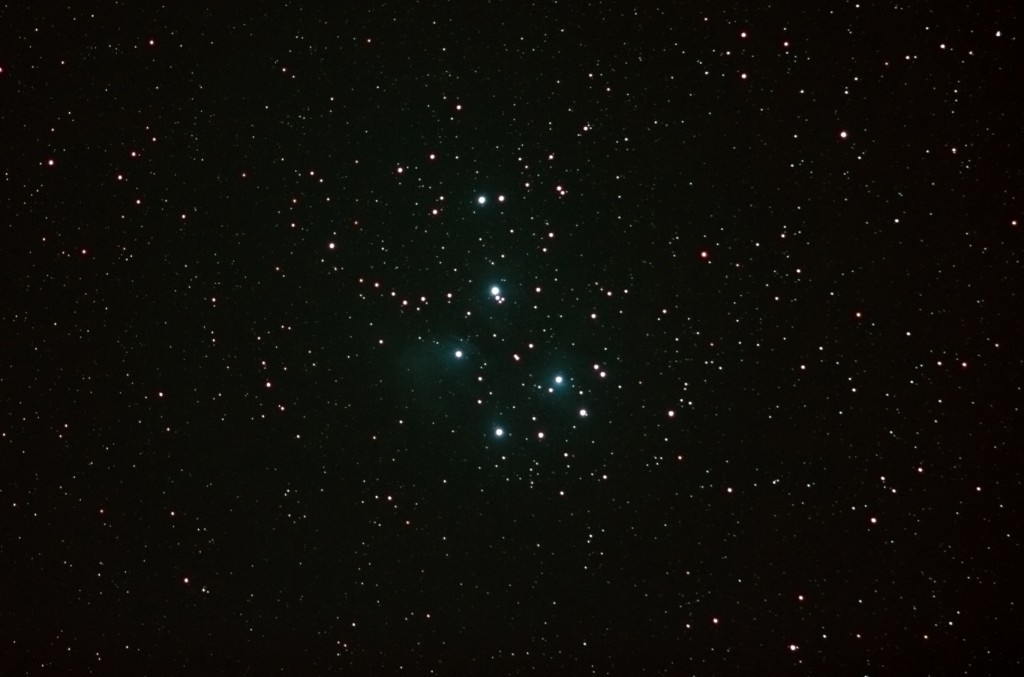
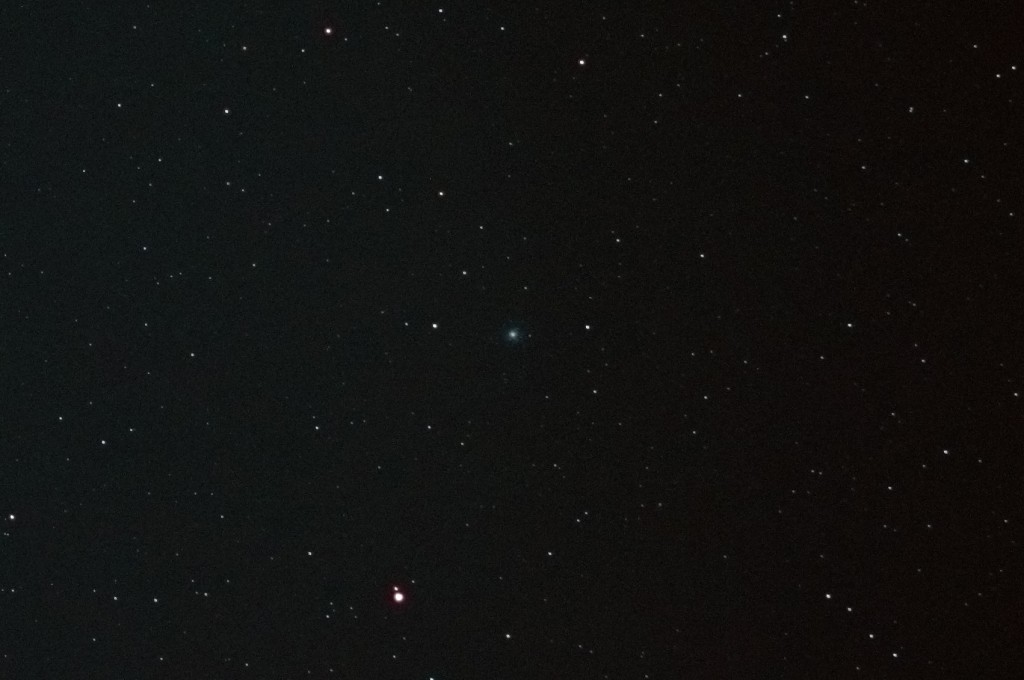
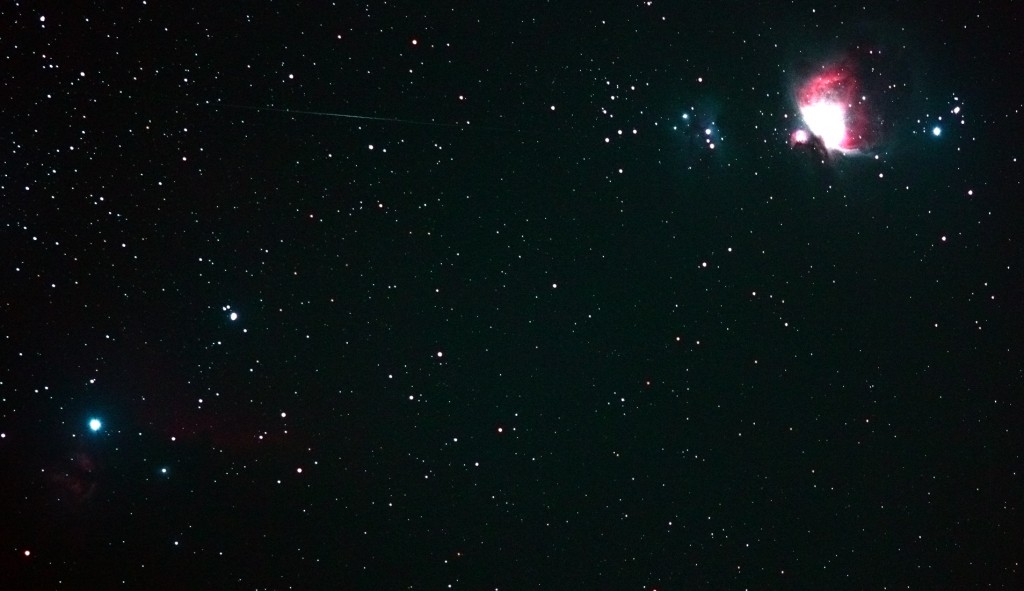
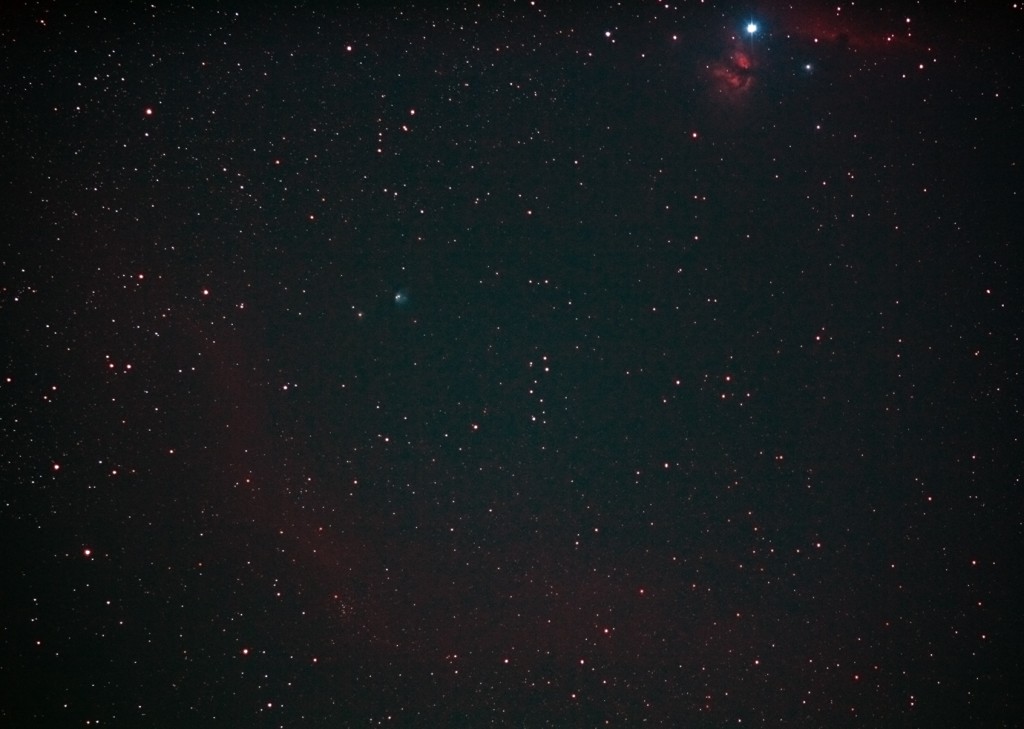
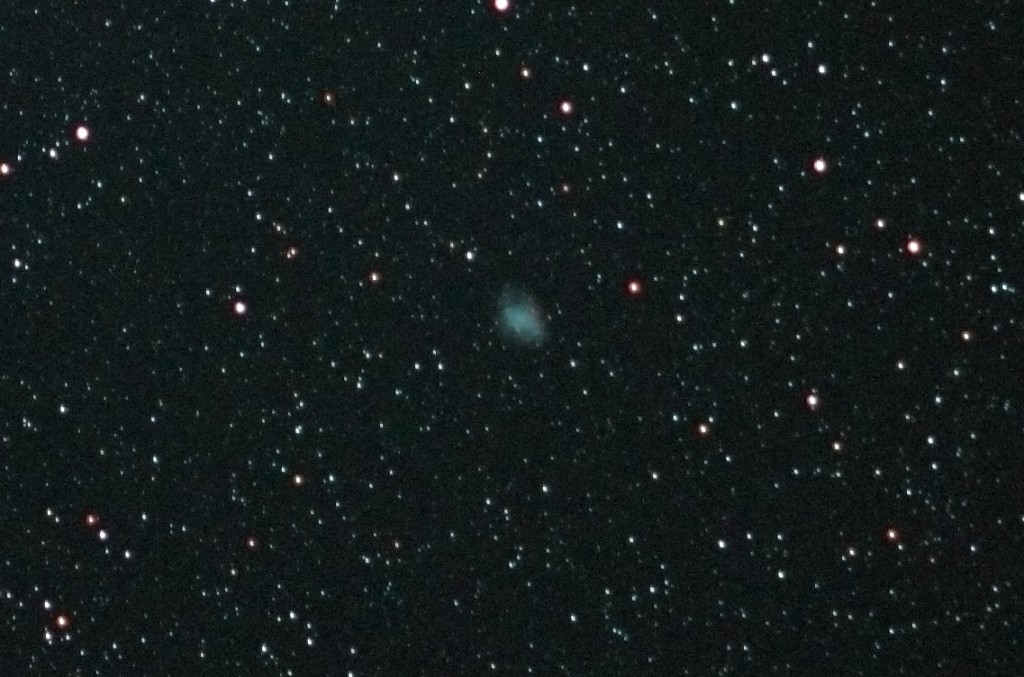
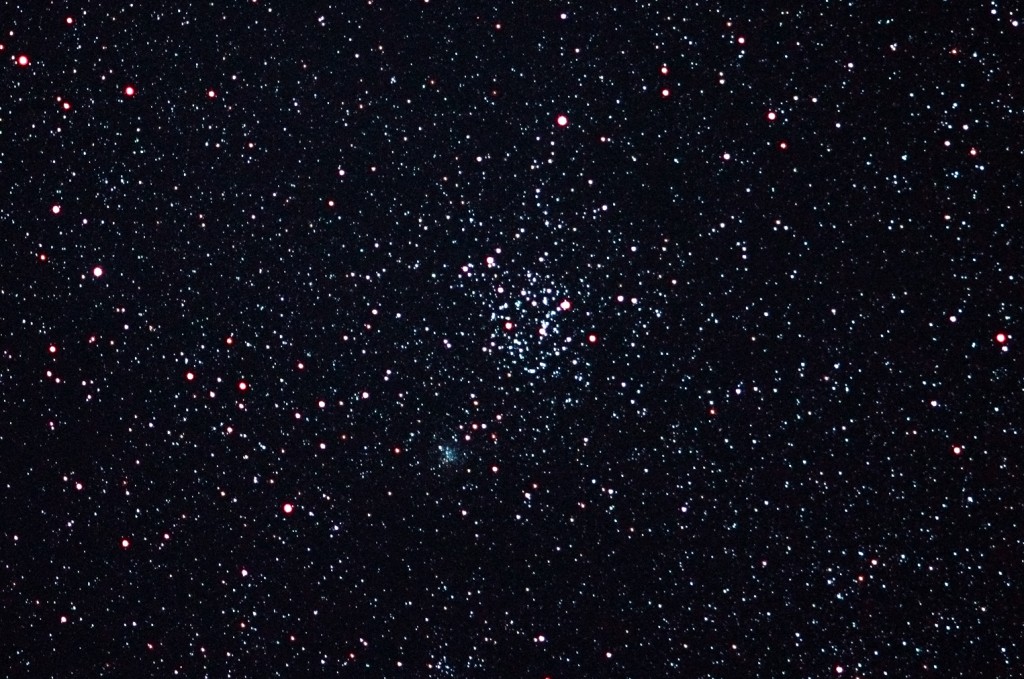
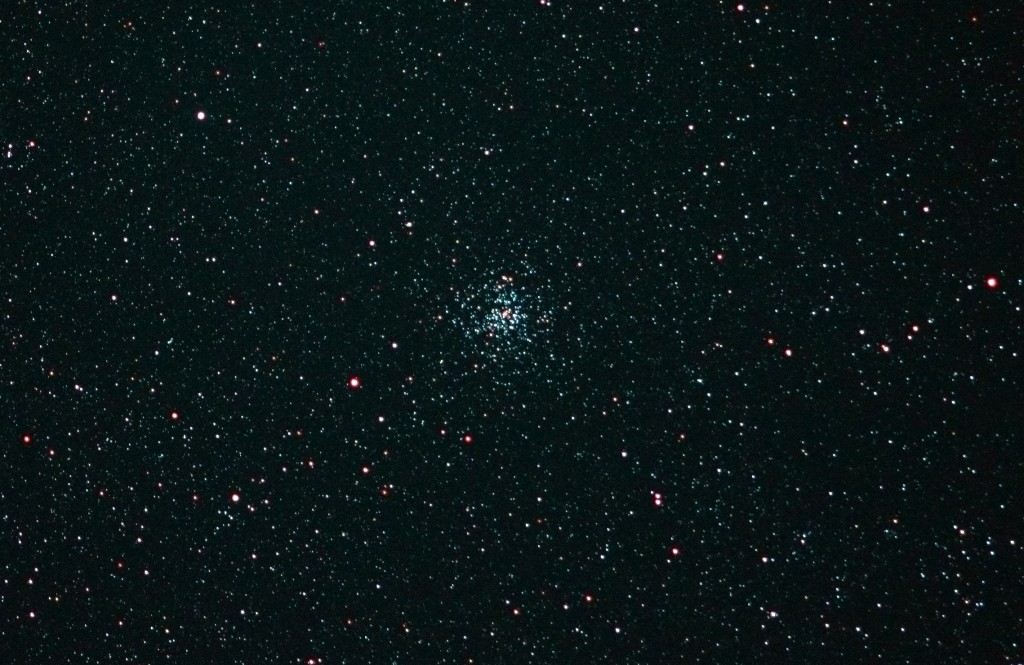
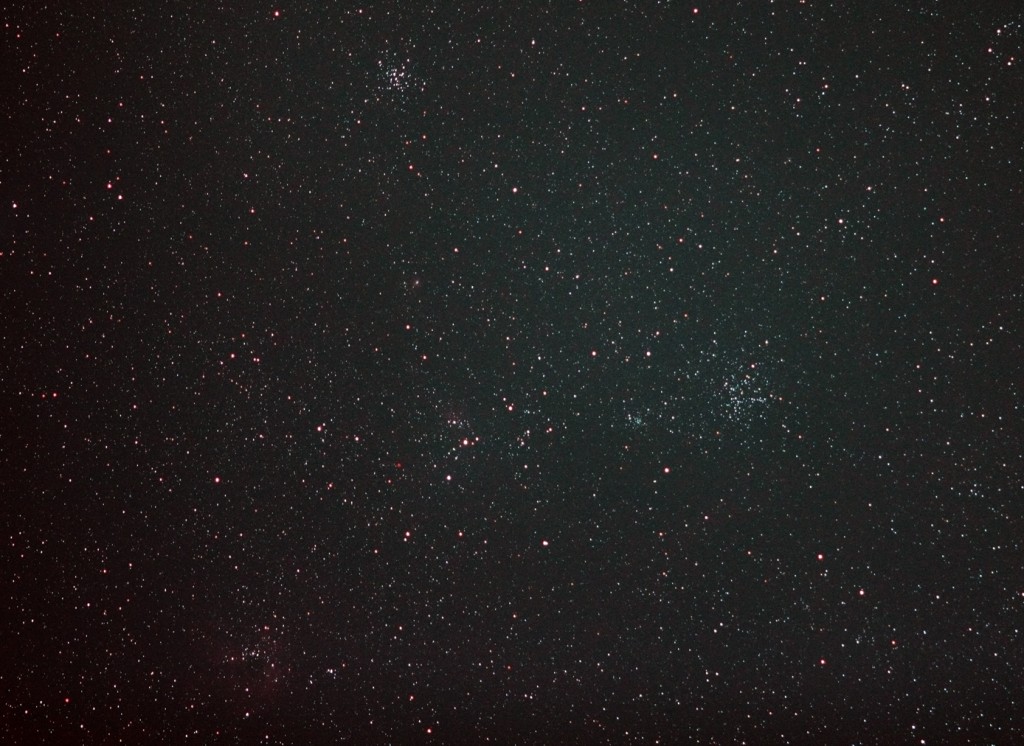
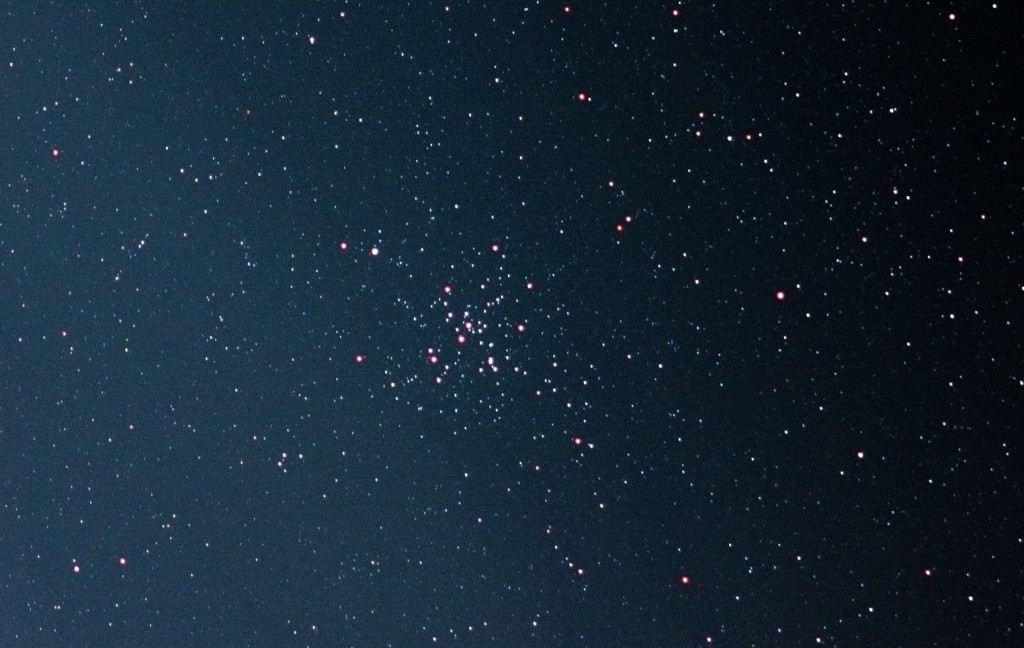
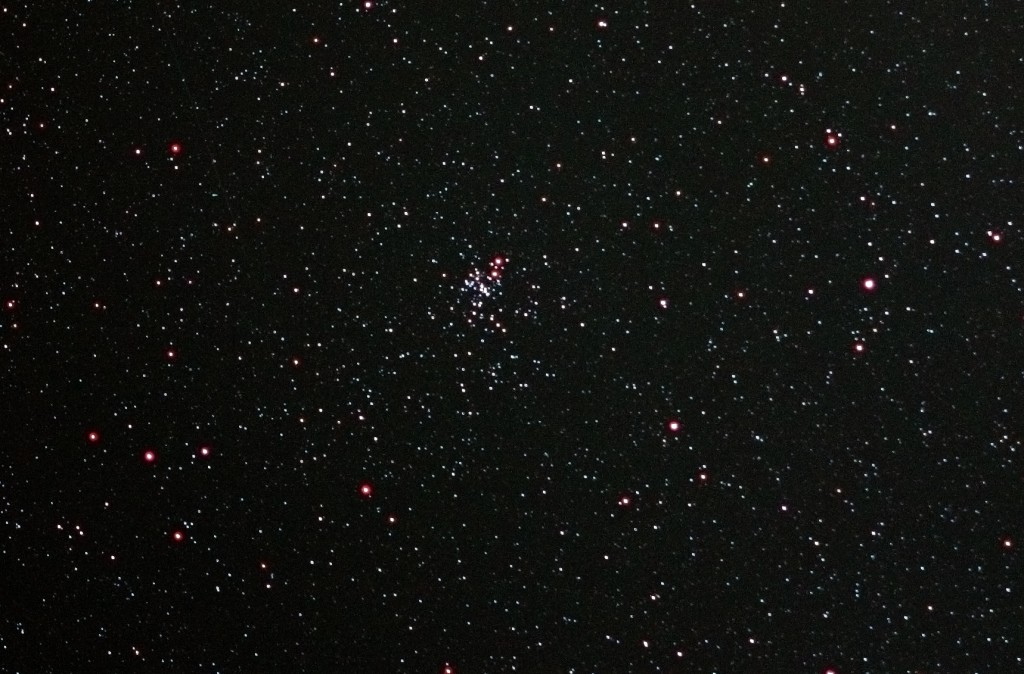
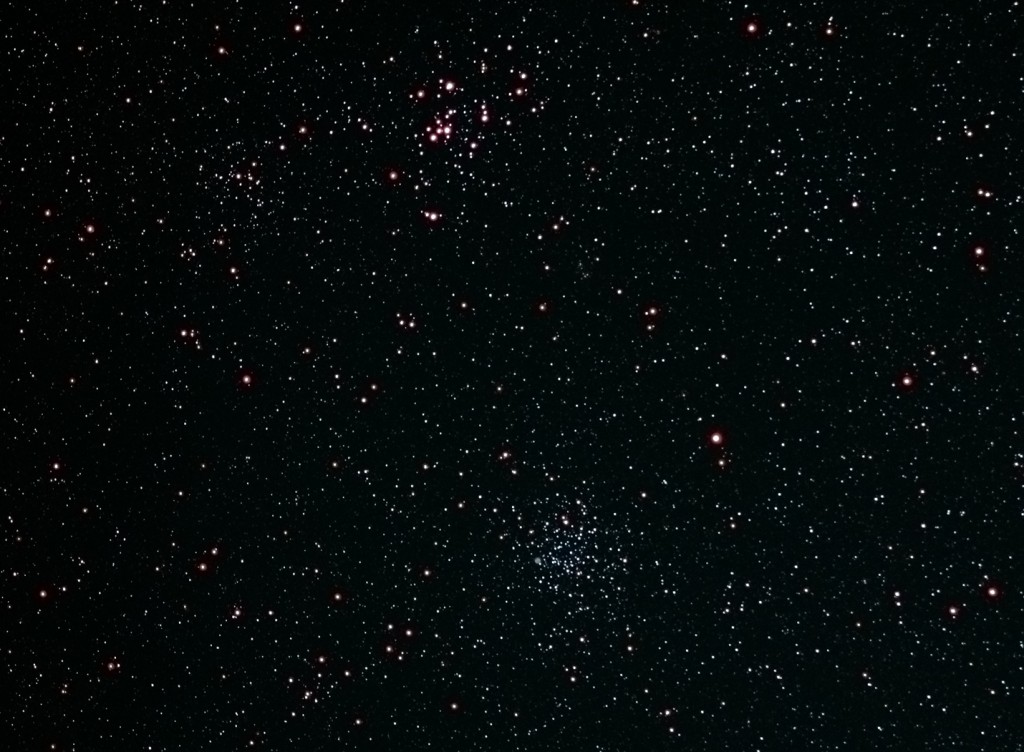
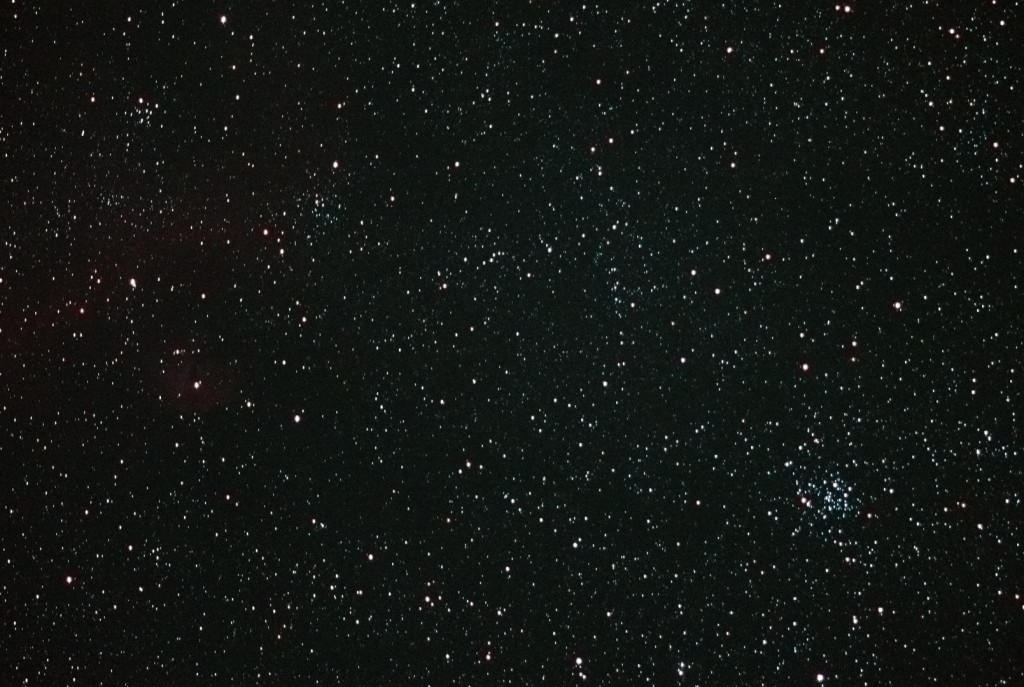
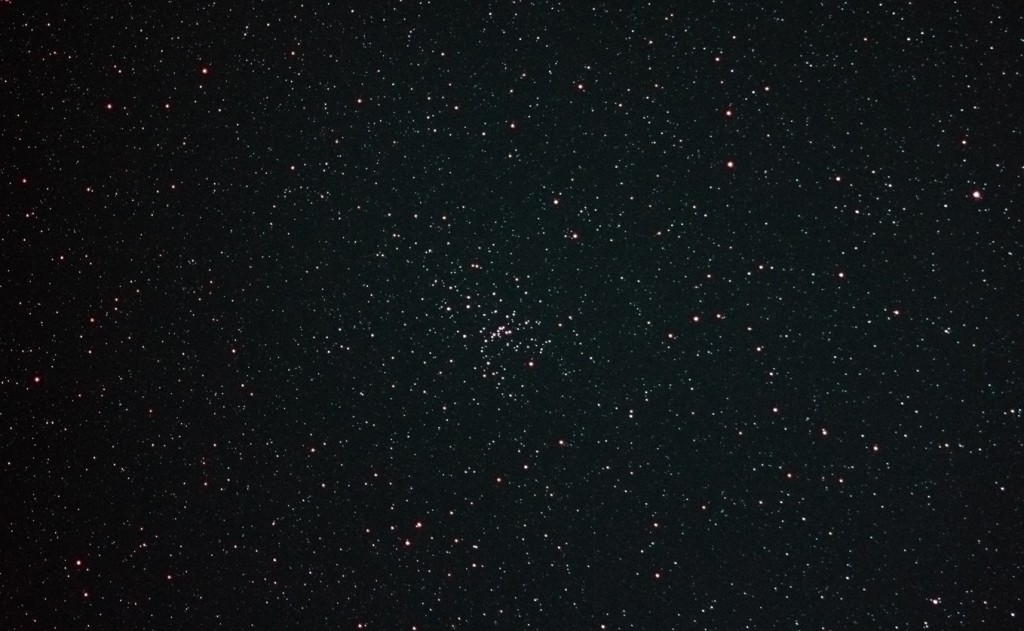
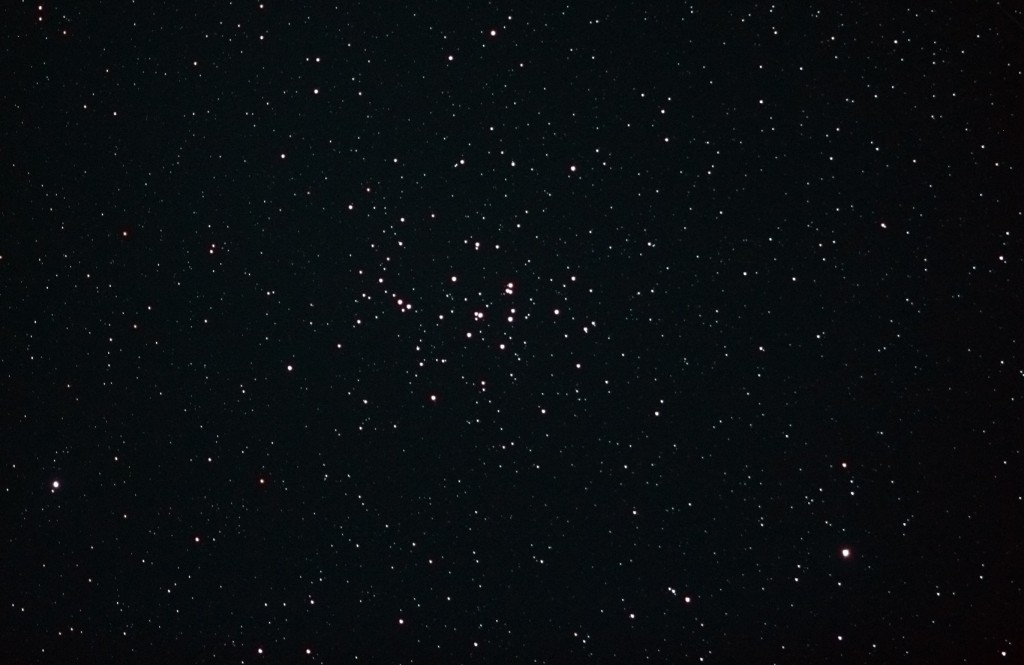
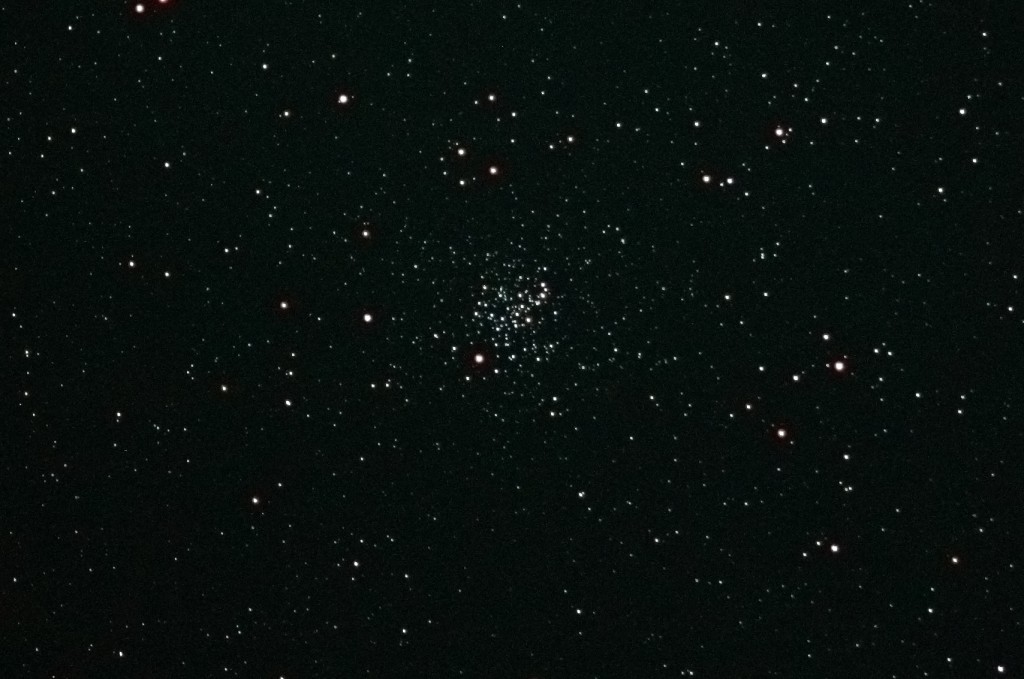
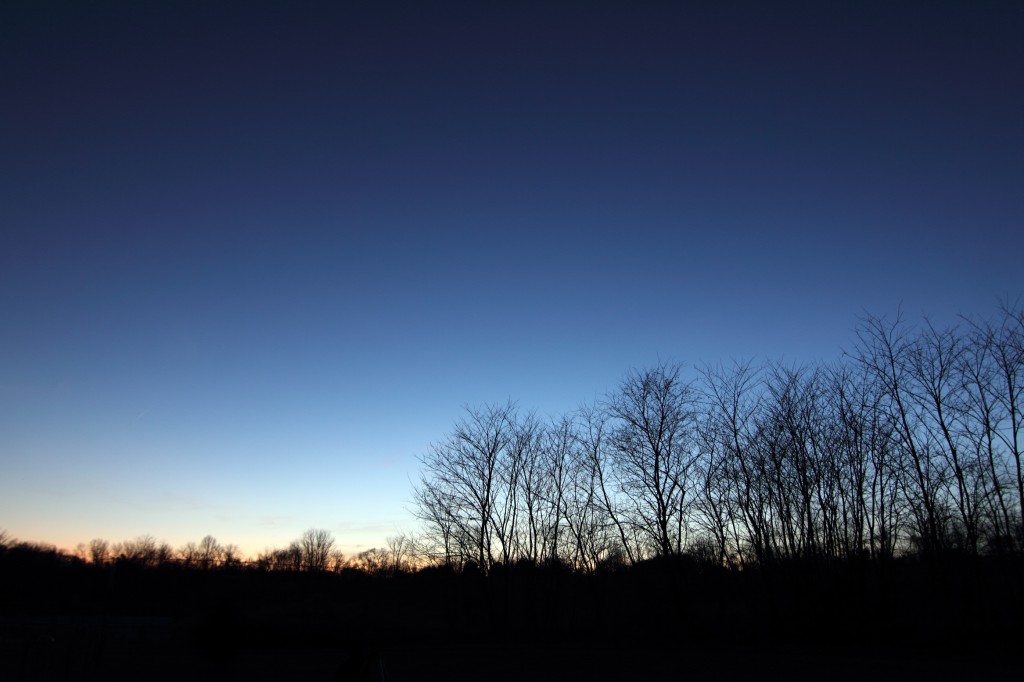
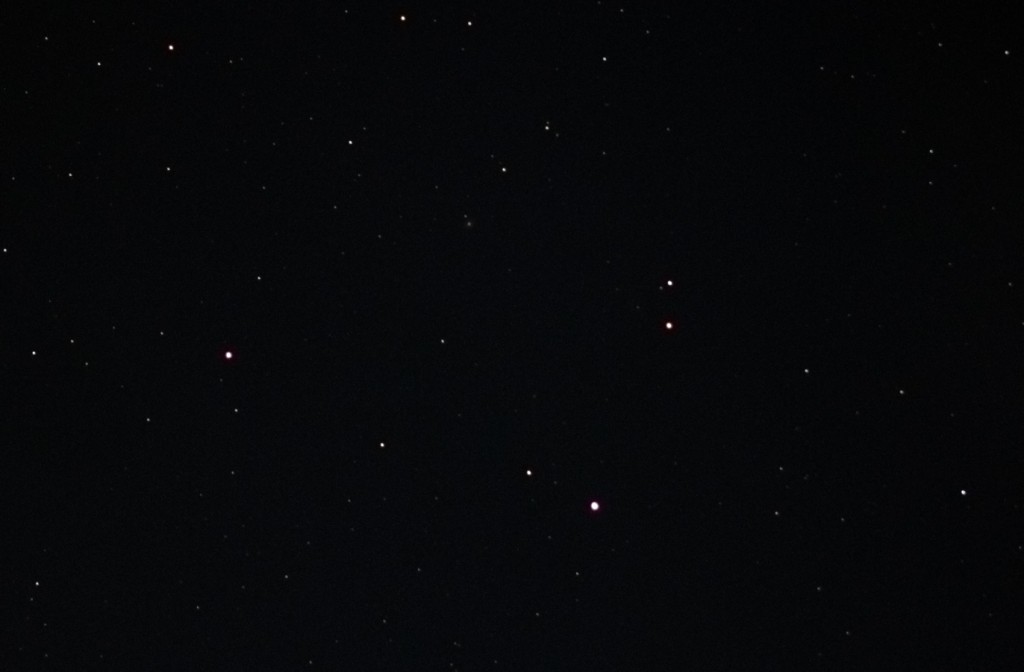
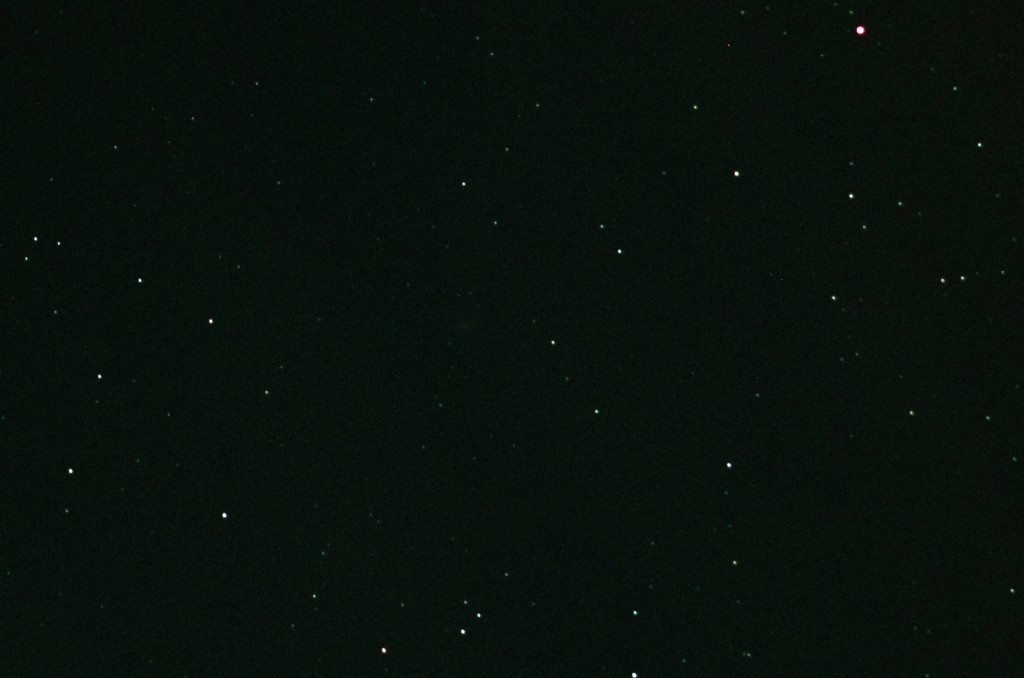
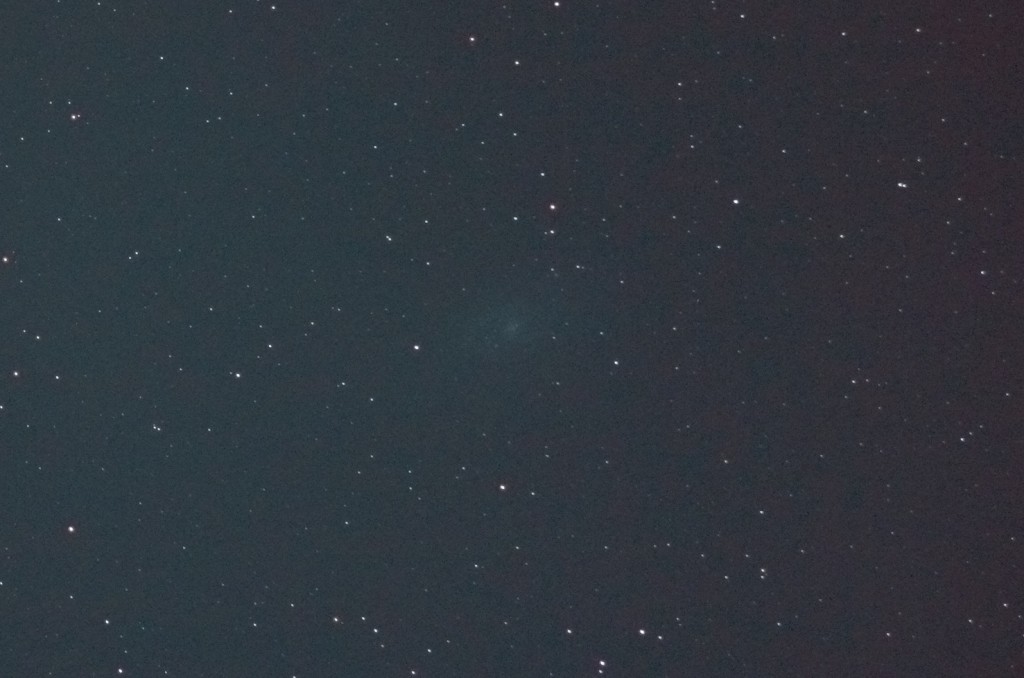
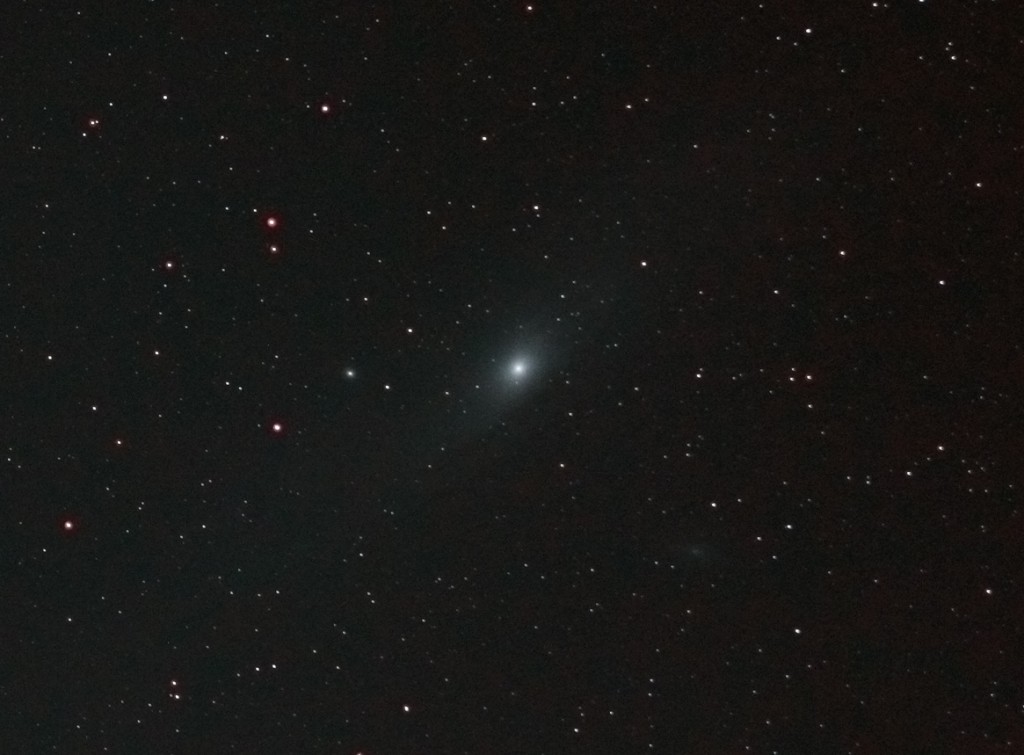
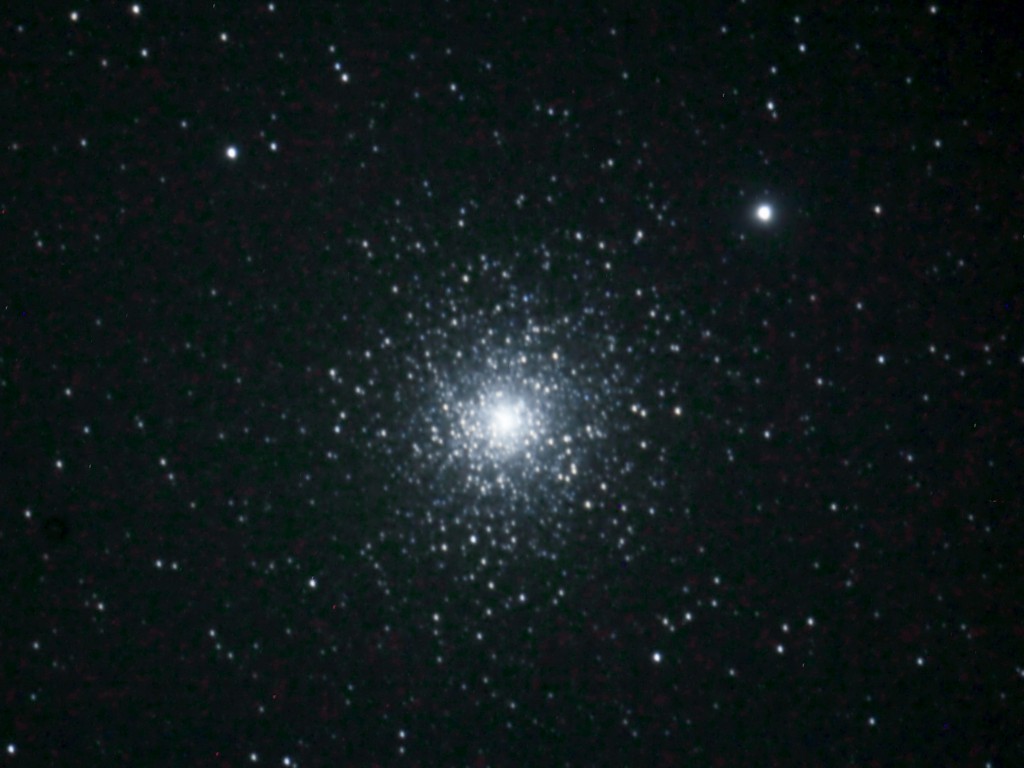
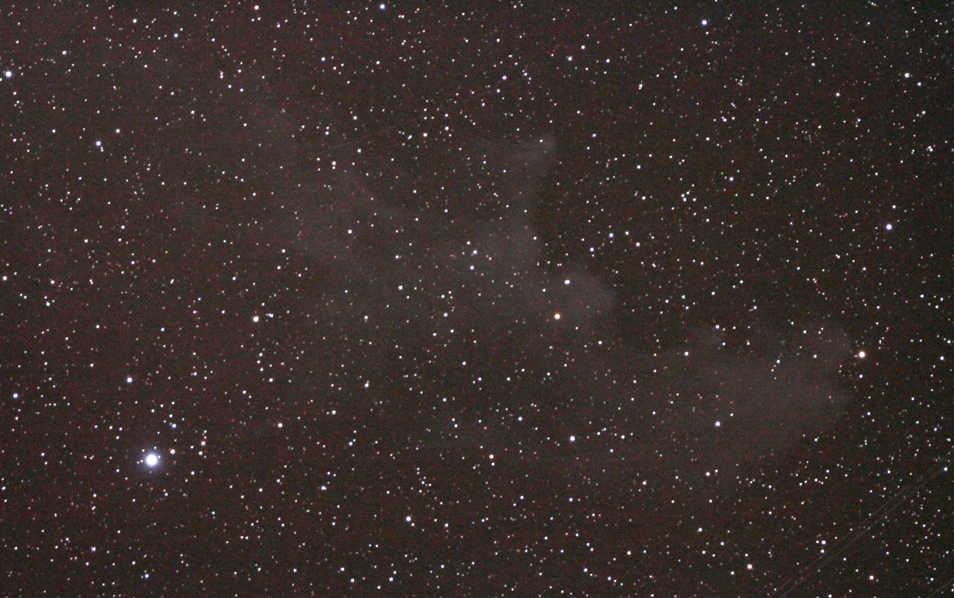
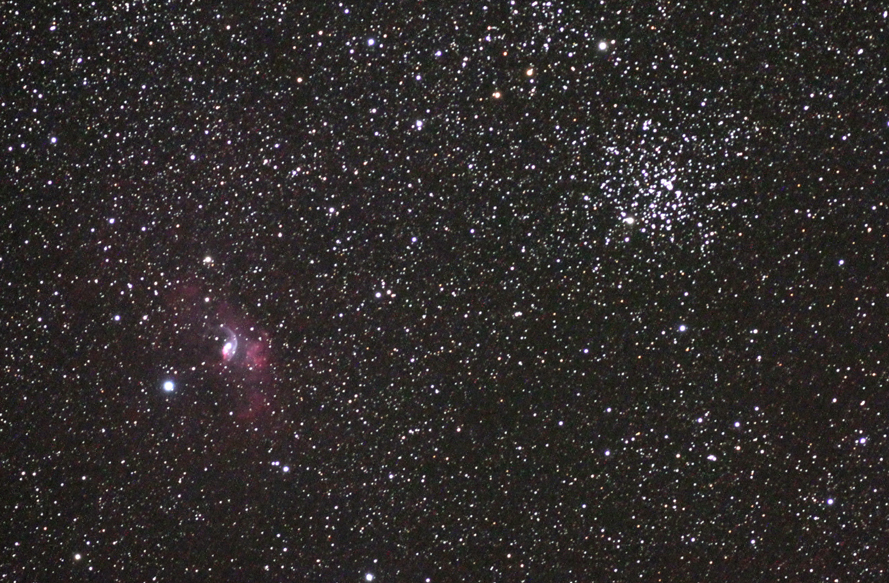
Recent Comments